HSP HISTORY Blog |
Interesting Frederick, Maryland tidbits and musings .
|
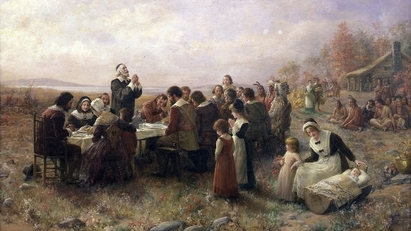 Fall foliage signals the fact that we are just weeks away from holiday travel season. Some will have a short trip to visit friends or relatives. Others will go far distances to get back to a hometown many states away. In either case, these excursions can be considered pilgrimages, a fitting term whose root (pilgrim)is synonymous with “Turkey Day.” Merriam-Webster defines pilgrims as: people who journey to a sacred place for religious reasons. Of equal importance, countless "shopping pilgrims" put even greater emphasis on traveling to malls, box stores and outlets on “Black Friday,” the day after Thanksgiving. I think it’s ironic that this same day is a little-known holiday celebrating people that didn’t have to travel at all for the apocryphal first Thanksgiving, as they were already here in America, long before the Europeans and a host of others. American Indian Heritage Day was established here in Maryland in 2008. Of course, maybe this should have been celebrated a little earlier since these folks have been here far longer than the "travelers/founders" of Plymouth, Jamestown and St. Mary's City here in Maryland. Travel allows us to venture to “far-off” places from home for recreation, self-improvement, experiential learning and enjoyment. The expression “far-off” is relative of course. Long before the airplane, automobile, bicycle, train, carriage, sailing ship and even the horse, humans had only one true option to get from point A to point B—legs. We have a nice historical record of how transportation means have continued to improve over the centuries, affording us humans the opportunity for not only movement, but rapid movement considering the alternative of walking. Seeing new places for the first time usually leaves us awestruck, before or after we reach for our camera. After a few minutes, have you ever thought to yourself, “How did I get here?” reflecting, of course, on the effort (and good fortune) it took to get from your home to a specific legendary location. Imagine what it was like for those early colonial settlers to our area. 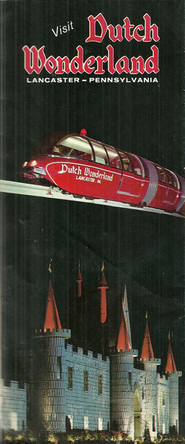 Maryland historians and genealogists have taken note of the year 1732, fall to be exact, marking the arrival of sixteen future “Maryland” families in the port of Philadelphia. Although welcomed with open arms into William Penn’s commonwealth, family leaders and or children of such made their way west of Philadelphia and the aptly named Germantown into the Lancaster area. Over two centuries later, this locale is marveled by future tourists as Pennsylvania Dutch Country. If the site of an Amish family riding in a horse and buggy on a rural road doesn’t make you appreciate history and culture of the German pioneering spirit, then perhaps you should make a "pilgrimage" to the 48-acre theme park Dutch Wonderland in Lancaster, PA (opened in 1963). I fondly recall my first and only visit with my grandmother back in July 1978. It was the hottest day of that summer and I shudder to think of the hapless staff dressed in lederhosen and wooden shoes. I also remember an elderly ride operator kindly asking for a sip of my grandmother’s Coke to quench his thirst—and she relented! This was a carefree era before the fear of saliva pathogens and fascination with Purel. I chalk it up to Zeitgeist, the general beliefs, ideas, and spirit of a time and place. But I digress. After establishing a farmstead, some immigrants and offspring decided to move further southwest into Maryland after generous inducements by the provincial government and land speculators such as Daniel Dulany of Annapolis. These people were obviously target marketed for already possessing the bravery to leave the familiarity of their ancient homelands, relatives and ways of life. They also were living proof of success garnered by making the difficult trip across the Atlantic. How could life get any tougher? Well it could, and thank goodness these immigrants employed conservative and frugal lifestyles, strong work ethics, family values and self-sufficiency to their advantage within a wild, and rugged environment. Religion was at the center of lives for these early Dutch people who had escaped earlier oppressions in search of new freedoms. Through teamwork and perseverance, “namesake” families crafted areas like the Monocacy and Middletown valleys into “gardens of the lord,” using the native environment to provide the sustenance needed to live. 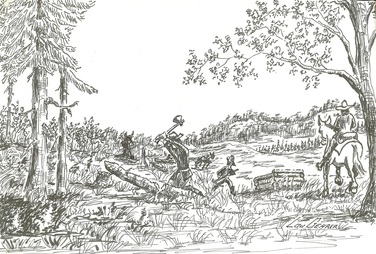 Hauver’s District takes its name from early German Peter Hauver, born in Philadelphia in 1754, two years after his father, Christian, came to America. The Hauver (originally Haber) family winded their way to Maryland, making their home in what we know today as the Foxville area. Peter’s mother’s maiden name of Harman also continues to grace a vicinity of the mountain (Harman’s Gap and Harman’s Falls-see my earlier blog). Interestingly, Peter’s sister, Nancy Matilda Hauver, married David Wolfe from Lancaster, and his family name would be lent to another mountain village on the western slope of Catoctin (Wolfsville). Young Peter Hauver apparently decided to take up a huge parcel of land, moving away from his father’s home. Author T.J.C. Williams explained this incident in his 1910 masterpiece “History of Frederick County”: “He (Peter Hauver)cut the timber, cleared part of the land, on which he built a substantial dwelling, a barn and all the necessary outbuildings, and spent his life in the home which he had won from the forest.” Not to mention the fact that a firm and trusted boundary line would only come into being in the mid 1760’s. Probably the first settlers, who came after Mason and Dixon's brand new “Line” was drawn, were the three Harbaugh brothers. They were of Swiss extraction and had originally settled in York County, Pennsylvania with their father Yost (Harbaugh). The Harbaugh sons (George, Ludwig and Jacob) brought their families to the northwestern corner of the county in the 1760. They chose a picturesque rolling valley between South Mountain to the northwest and Wertenbaker Hill to the southeast. 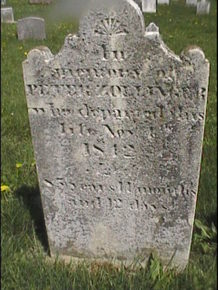 Grave of Peter Zollinger (1756-1842) Grave of Peter Zollinger (1756-1842) At Ludwig Harbaugh’s death in 1809, a man named Capt. Peter Zollinger, Jr. (1756-1842) bought part of his farm in the this majestic valley location. Zollinger was a Revolutionary War veteran and native of Paradise Township, York County, Pennsylvania. He hired a surveyor named Andrew Smith to lay out a small village on November 4, 1813. This locale was first referred to as Zollinger Town, but eventually took the first name from Capt. Zollinger’s wife—Sabilla Barbara Machold (1754-1832). Thus was born Sabillasville. This interesting name, Sabilla, was a variation on Sybilla, which comes from ancient Greece and means “Prophetess/oracle.” 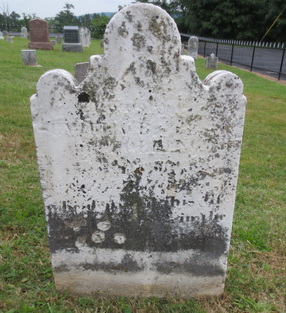 Weathered tombstone of village namesake Sabilla Zollinger (1754-1832) Weathered tombstone of village namesake Sabilla Zollinger (1754-1832) In Greek and Roman legend, the sybyls were ten female prophets who practiced at holy sites in the ancient world, much the same way as the Old Testament prophets in later Christian theology. Of the most famous oracles in Greek history are the Grey sisters. Among them, the three sisters shared one eye and one tooth, which they took turns using. By stealing their eye while they were passing it amongst themselves, the mythic hero Perseus forced them to tell the whereabouts of the three objects needed to kill Medusa by ransoming their shared eye for the information. You remember Medusa, don’t you? She had “snake hair,” and if you looked at her, you would be turned to stone.” From all accounts Sabilla Zollinger had both eyes and a full set of teeth, however, her neighbor Jacob Harbaugh would lose an eye in an altercation. 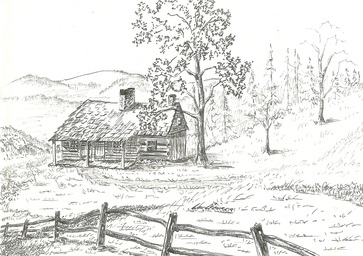 The town was laid out along "The Great Road to Waynesboro". The street was made 60 feet wide and the lots each contained one third of an acre of land. There were several houses built in the village before it was laid out. They were probably used for the families who worked on the Harbaugh-Zollinger farm. The first houses built in the village were two-story houses, about 10 feet square. They were lined inside and out with boards, and filled between with sawdust. The houses built afterwards were larger and made of logs. They all had large fireplaces with large chimneys on the outside of the house, built of stone. Sabilla Zollinger and husband Peter can be found in the graveyard of St. John’s United Church of Christ, located in the heart of bustling Sabillasville. This church is also adorned with a plaque honoring the three original Harbaugh brothers coming to the area. I consider myself very blessed to have had the experience to visit Sabillasville and marvel at the beautiful Harbaugh’s Valley while contemplating the hardships and triumphs of those early German immigrants, leading the way for future generations of descendants. The Zollinger's had a son named George who felt he should venture further into the interior of the country. He would travel to Cooper County, Missouri in 1844. It would have been a long trek back home to Sabillasville for Thanksgiving dinner with the family. Although considerably shorter, I wonder if Ravens football head coach, John Harbaugh, or brother Jim (University of Michigan),will ever made Thanksgiving pilgrimages to Harbaugh's Valley? They are, in fact, direct descendants of the namesake founders, themselves.
4 Comments
Author's Note: This is part 2 of a multi-part history covering the early history of the Great Frederick Fair. Part 1 can be found in the September 2016 archives to the right. 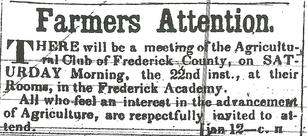 Frederick Examiner (January 12, 1853) Frederick Examiner (January 12, 1853) On January 12th, 1853, a small advertisement in the Frederick Examiner newspaper announced an upcoming meeting, which respectfully invited “all who feel an interest in the advancement of Agriculture” to attend. This ad was placed by members of the Farmer’s Club, organized in 1849. In another part of the same paper, the Examiner’s editor pointed out the meeting as being “well worth the attention of farmers, millers, and all others interested in the development of the productive resources of our county. Its object is to revive and reorganize the Society, and it is to be hoped that a becoming interest and enterprise will be manifested in the important undertaking. “ This meeting took place on January 22nd, 1853 at the Frederick Academy building, where a large and highly respectable assemblage convened and organized an association under the title of the Agricultural Club of Frederick County. High spirit and enthusiasm abounded and a Constitution and By-Laws were adopted along with an election of officers featuring Col. Lewis Kemp as President. The particular goal of the meeting was to make arrangements for holding a local Agricultural Fair for the following fall season. 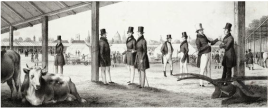 The First Exhibition of the Frederick County Agricultural Society was held October 16-18th, 1853 and attended by thousands of eager visitors, far exceeding the numbers imagined by the organizers. The home for the newly revived cattle show, fair and exhibition was the Frederick Barracks Grounds on Cannon Hill. 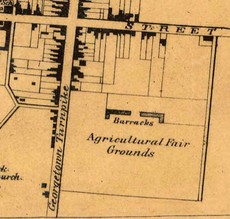 Excerpt from the 1858 Bond map of Frederick City. Excerpt from the 1858 Bond map of Frederick City. The barracks had been built in 1777 by order of the Maryland legislature, so that a military post would be established for foreign prisoners. English officers and Hessian mercenary soldiers would be incarcerated here during the Revolutionary War, and British prisoners again would be kept during the War of 1812. The new location for the Society’s Exhibition was praised for its proximity to transportation lines. Turnpike tolls on the roads into town were suspended for exhibitors and no freight charges were exacted for show goods carried on the B&O railroad. Of major note was the elevated position of the event, overlooking the city basin with commanding views of the surrounding Catoctin Mountain and Monocacy Valley. The following description comes from the Frederick Examiner newspaper: The grounds were securely enclosed and nearly surrounded by a line of stables, stalls, pens and mews, for the protection and show of stock. The old Barracks were used for offices and exhibiting rooms for household goods and domestic manufactures, and a spacious shed erected for the arrangement of vegetables, fruits, grains, meats, seeds, etc. Chicken coops and machinery and agricultural implements comprised the middle area and the lower division contained a plowing lot and a horse ring, about 200 yards in circumference with a judges stand in the center, from which towered a lofty flag bearing the national banner. Upon the stand Capt Burke’s brass band was stationed and from time to time played the choicest pieces, adding considerably to the gaiety and enjoyment of the scene. The horse ring was constantly encircled by a dense mass of spectators, fine ladies vying with noisy men and boys for good points of view; yet we believe all were gratified, and can safely say equally surprised. 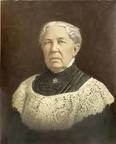 Margaret S. Hood (1833-1913) Margaret S. Hood (1833-1913) Hood College benefactor Margaret Scholl Hood would record in her diary: “There was lots of people there. The grounds crowded; everyone says there was never so great a crowd in Frederick since Lafayette came to town.” 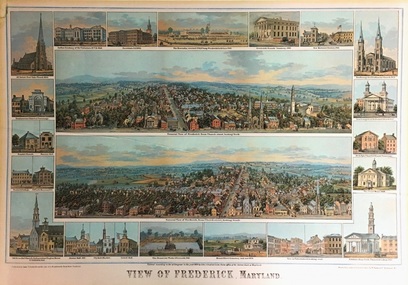 E. Sachse & Co. "View of Frederick City, Maryland" (1854) E. Sachse & Co. "View of Frederick City, Maryland" (1854) One year later, the second Annual Exhibition of the Frederick County Agricultural Society took place. The B&O Railroad showed great endorsement of the event by offering fair excursionists free round trip tickets from all stations between Baltimore and Piedmont. The same exuberance of the 1853 event was again demonstrated in year two as it was estimated that 15,000 people attended the second day alone. The “beefed up” cattle show featured a new wrinkle with an equestrian competition conducted by ladies. Another highly touted aspect was the public unveiling and display of a recently completed color lithograph entitled “View of Frederick City, Maryland” by E. Sachse & Co. and published by John Schofield. The 1854 exhibition concluded with an address from Dr. James Higgins, State Agricultural Chemist.
In 1858, the Sixth Annual Exhibition included a Grand Tournament of Jousting. This event would be witnessed by an estimated 10,000 spectators. The 30 participants, or knights, were properly attired and rode in procession through the city en route to the Barracks Grounds. The victors received premiums and the honor of selecting the Queen of Love and Beauty, and three Maids of Honor. After several hours, Henry Dunlop “Knight of Otterburn” was declared champion and promptly chose Miss Marian Buckey, Queen of Love and Beauty.
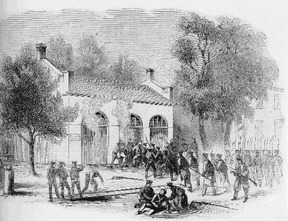 Storming of the engine house in Harpers Ferry (October 17, 1859) Storming of the engine house in Harpers Ferry (October 17, 1859) In 1859, the Frederick County Agricultural Society was given a respite from presenting it’s own event as Frederick received the distinct honor of hosting the 20th Annual Exhibition of the Maryland State Agricultural Society from October 25-27, 1859. As the town and county busily made preparations throughout September into October to welcome farmers and visitors from around the state and beyond, a nearby “farmer” known by the name of Isaac Smith was making final plans of his own for an event that would make and shape our Nation’s history. Farmer Smith was actually John Brown, and he was readying his band of followers for a deadly raid on the Union military arsenal at Harpers Ferry. Brown had been staging for this event at the Kennedy farm, just over the Washington County line in Pleasant Valley. When Brown put his ill-fated insurrection plan into effect on the night of October 16th, word reached Frederick by rail the next morning and the nation was alerted of the events from here. Members of Frederick’s fire companies/militia units which had made such a nice display of arms at the 1858 Agricultural Exhibition, now had to put their military training to practical use as they were hurried to Harpers Ferry, among the first responders on the scene. They would assist Col. Robert E. Lee, Capt. J.E.B. Stuart and the US Marines in the successful capture of Brown and his surviving men. Amidst the local and national excitement this event would have on the local citizenry, the Maryland State Fair commenced at the Frederick Barracks Grounds on October 25th and dictated an excellent exhibition with banner attendance. Hotels were filled, and county residents extended their hospitality, and their business goods and inventories, to throngs of tourists. Of particular interest during this event were the simultaneous benefit events being held by the Ladies auxiliaries attached to fire companies of Frederick. A newspaper account from October 26th reported that the United’s had “on exhibition the hat and a pistol belonging to “old” Brown, a Sharp’s Rifle and a Litchfield Spear, captured by the Guards at Harper’s Ferry.” Meanwhile the Junior Defenders performed military drills for audiences with the accompaniment of The American Band. 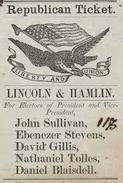 The Seventh Exhibition of the Frederick County Agricultural Society was held in October 1860. Unfortunately, the return of the Frederick County Exhibition was clearly overshadowed by the excitement and anticipation tied to the hotly contested US Presidential election between Abraham Lincoln, Stephen A. Douglas, John Breckinridge and John C. Bell. To its credit, the Society smartly presented two special event features on site that made the Exhibition an “uplifting” success. 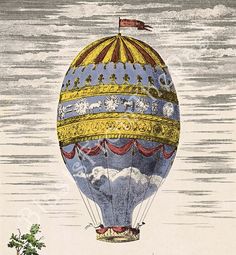 “The bad luck that has heretofore attended all attempts at aerostation in this city, was broken through by Mr. John A. Light, who, on the afternoon of October 6th, under the auspices of the Agricultural Society, made a daring and brilliant ascension from the Show Grounds of the Society, in his Montgolfier Balloon...He shot up like an arrow to the height of five or six hundred feet and was gently wafted over the city, until he finally descended in Love Lane, near the intersection of Fourth St. His progress was witnessed by admiring thousands, whom he saluted in passing by waving his hat. “ The Frederick Examiner newspaper October 13, 1860 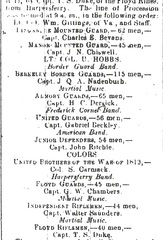 The second event of note was a Grand Military Parade and Review to commemorate the Battle of Yorktown. The city militia units were joined by county companies such as the Linganore Mounted Guard, Liberty Riflemen, Carrollton Manor Mounted Guard and three others from beyond the county. The highlight of the parade was the inclusion of the “United Brothers of the War of 1812,” led by Major Gen. Anthony Kimmel, a New Market resident and veteran of the Battle of North Point. The military pomp and circumstance displayed at the recent fairs were certainly an omen of things to come. Within weeks, residents would see Abraham Lincoln elected as their new president. Southern states would immediately start seceding from the Union in the months to follow. The official first shots of war occurred on April 12th, 1861 in Charleston, South Carolina as Fort Sumter was fired upon. Virginia would join the Confederacy less than a week later and on April 19th, an angry mob in Baltimore attacked federal troops from Massachusetts who were trying to make their way through town. 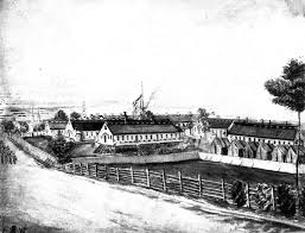 US General Hospital #1 US General Hospital #1 Frederick would become the state capital during the spring and summer 1861. In August, the Potomac Home Brigade was formed as local Union men enlisted for military duty. Others fled south to join the confederacy, such as former Junior Defender Bradley Tyler Johnson, who would take an active part in forming the 1st Maryland Infantry, CSA. The Frederick County Agricultural Exhibition’s home of the Barracks Grounds was permanently commandeered for its intended purposes and would be converted into a Union Military Hospital. After a successful run of eight years, Frederick County would not host another agricultural fair until 1868. New Home In spring of 1867, the Frederick County Agricultural Society was reformed with the selling of 139 life membership tickets. After tasking a special committee with finding a new permanent home for the Agricultural Exhibition, the Society purchased 21 acres of land from its own Treasurer, Gen. Edward Shriver, former leader of the militia that quelled the John Brown raid. A neighbor, and later Society president, William H. Falconer would also sell land for the “new cause.” Bought for $4,500, these properties were located about a half mile east of Frederick on the north side of the Baltimore Turnpike. Almost immediately, substantial buildings were erected and a race course track was laid out. The Frederick Agricultural Grounds now came into being. 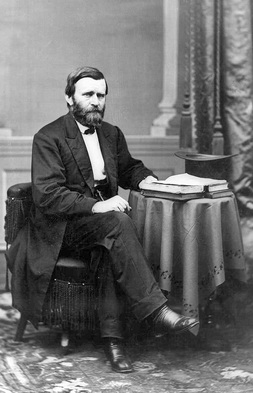 President Ulysses S. Grant (1822-1885) President Ulysses S. Grant (1822-1885) The Ninth Annual Fair of the Frederick County Agricultural Society was held October 12-15th, 1868. The return of livestock was accentuated with a tremendous entry of cattle, sheep and poultry specimens. Fittingly, the guests of honor were national Civil War heroes in the form of President Ulysses S. Grant and Gen. William T. Sherman, among other members of the President’s Cabinet. The president’s visit on the 14th drew a larger than normal audience as was expected, but this added to the greatest attended fair that the county had ever seen. “I have great pleasure in visiting for the first time the city of Frederick of which I have heard so much during the period of the late rebellion, and which, too, stood up manfully for the maintenance of the whole Union. I expected to visit this city some years ago but found myself unable to do so but now have found so many friends, and have been gratified with what I have seen of your Fair and enjoyed of your hospitality, I hope at some future time to visit you again.” Ulysses S. Grant October 14th, 1868  President Grant and his party dined at the Fairgrounds and watched the newest feature to the Frederick event…harness racing, a horse competition in which the animals race at a specific gait (a trot or a pace)while pulling a two-wheeled cart called a sulky. Among the many trials of speed held during this fair, was a $500 premium that went to the horse “Patchen” from Philadelphia who made the mile in 2 minutes and 45 seconds. Owen Bowie, the Governor of Maryland was also on hand for the 1868 event. An avid horseman and breeder of thoroughbreds, Bowie would be responsible for bringing Pimlico Race Track to the state thanks in part to a successful gambling wager made by himself and associates. President Grant would keep his promise, and returned to Frederick and the next fair in October of 1869. In addition to members of his cabinet, a host of former governors and the mayor of Washington DC, the president was accompanied by the United States Marine Band. From Frederick’s B&O Station on Market Street, the band headed a procession of carriages that carried the distinguished visitors to the fairgrounds. President Grant would visit the fair for two days . 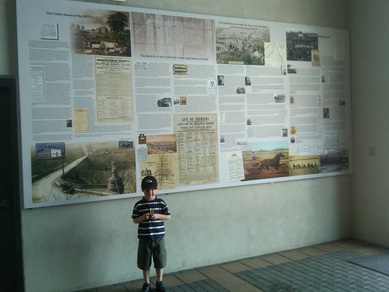 My son Eddie, back in 2012, posing in front of the 1800's Fair History Mural, Null Building, Frederick Fairgrounds. My son Eddie, back in 2012, posing in front of the 1800's Fair History Mural, Null Building, Frederick Fairgrounds. This week marks the 154th edition of the Great Frederick Fair, the largest and greatest county fair in the State of Maryland. The Frederick Fair has quite a storied history, but one I found lacking when it came to its first century of existence. Back in 2012, I took on the task of exploring this "historical black hole" in connection with the 150th anniversary commemoration (of the fair). Most Frederick histories simply repeat the same information written in John Thomas Scharf's 1883 History of Western Maryland of the first exhibition and cattle show taking place on May 23rd and 24th, 1822, at George Creager's Tavern near the Monocacy Bridge, two miles east of Frederick. I immediately went to the newspaper microfilm readers in the Maryland Room of C. Burr Artz Library, and started searching the Frederick Town Herald editions of spring 1822. I found that the tavern was actually called the Monocacy Bridge Hotel and was owned by Levi Hughes. Mr. Creager apparently rented from Hughes and eventually ran into financial hardships resulting in being sued for funds owed his landlord. I was able to piece together the agricultural event's colorful history of the 1800's, and was honored to have the Fair Board exhibit my research findings(complete with appropriate visuals) in the form of a large interpretive mural display in the east entrance to the Null Building at the fairgrounds. It's a tapestry of sorts, actually printed on fabric and pulled taut by a metal frame. In the Beginning In 1818, Maryland created its own state Agricultural Society and hoped to keep pace with the growing trends and “innovations” in farming coming out of Europe and at home in places such as Virginia and the Carolinas. The New England states were holding successful livestock exhibitions in places like Albany, New York and Brighton, Massachusetts. Beginning in 1819, Marylanders were given the opportunity to read about these early agricultural fairs, new farming utensils, improvements in breeding stock and agricultural science advancements with the creation of The American Farmer magazine, a weekly publication of John S. Skinner of Baltimore. Interestingly, Skinner is also well known for his role as a prisoner of war exchange officer during the War of 1812. He partnered with Frederick native Francis Scott Key in the successful negotiation and release of Dr. William Beanes in Baltimore Harbor during the bombardment of Fort McHenry, September 1814. The Maryland Agricultural Society had formed in 1818 and presented its very first Cattle Show and Fair in June 1821 at the Maryland Tavern, four miles west of Baltimore on the Frederick Turnpike. It was a smashing success. Frederick County’s tradition of high quality thoroughbred rearing was exemplified by a sweep of the top equine categories by Frederick residents. Thomas Sheppard’s “Columbia” was considered best horse in show for coach purposes; Nimrod Owings’ stallion “Arrow” won the premium for saddle and farming horse; and Joshua Gist had the best brood mare. The county’s fine showing at the state level helped prompt local action in the formation of the Frederick County Agricultural Society in November 1821. A group of highly distinguished planters and farm owners put together the organization’s bylaws and elected William Elie Williams as their president. Williams was the builder and operator of the large stone grist mill on his plantation farmstead at "Ceresville," so named for the Roman goddess of agriculture and grain, Ceres. However, the new society’s leader was better known for being the son of celebrated Revolutionary War Brigadier Gen. Otho Holland Williams (namesake of Williamsport, MD). The vice presidents of the Society included: Col. Henry Kemp, Col. John McPherson, Col. John Thomas, Mr. James Johnson, Col. G.M. Eichelberger, Mr. W.P. Farquhar, Mr. Jesse Slingluff, Mr. Joshua Delaplane and Mr. William Morsell. The Treasurer was Thomas Shaw and Secretary was Henry Willis.
In the fall of 1823, a second event would be held here at the Hughes-owned tavern location by the Monocacy. The show, however, was not officially sanctioned by all in the local Agricultural Club as it was more of a horse racing festival put on in conjunction with the Frederick County Jockey Club. A multitude of factors contributed to this “no show” as the state Agricultural Society held its Maryland Cattle Show and Fair in Easton, on the Eastern Shore, in November. This was coupled with death of William E. Williams, at the age of 35, that same November after an illness of several months. 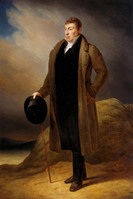 the Marquis de Lafayette the Marquis de Lafayette A second official Cattle Show and Fair was considered for late October 1824 but plans were most likely cancelled when the Maryland Cattle Show was postponed to late November in order to accommodate a visit from the “Nation’s Guest,” the Marquis de Lafayette. Lafayette made a year-long tour of America, receiving a hero's welcome at every place he visited as one of the last of the great leaders of the American Revolution. Lafayette had been given membership to the Maryland Agricultural Society and would personally hand out premiums at the rescheduled state event. Meanwhile, a local commission was making arrangements to receive Lafayette here in Frederick County in late December. A Time for Pause After getting off to such a fast and confusing start, the Frederick County Agricultural Society is said to have “languished” and was in need of resuscitation in order “to vie with sister counties in the means necessary to accomplish the designs of such an institution,” stated the Frederick Town Herald. With the premature death of William E. Williams and the cancellation of the 1824 Cattle Show, the opportunity arose for the Frederick County Society to regroup and reorganize in December 1824. John Dill’s Tavern in Frederick became the site of important meetings to accomplish this task. Col. John McPherson was elected President and resolutions were made “to hold a Cattle Show and Fair in the following May or June (1825), at which time it was anticipated to award premiums for the best articles of domestic manufacture, such as cloth, cassimeres, cassinets, flannels, blankets, coverlets, counterpanes, carpeting, sheeting, paper, etc along with implements of agriculture.” A subcommittee was formed to examine the constitution, and amendments would come in the form of pulling a vice president from each of the existing 11 districts of the county along with a board of 12 managers. Another important amendment stated: “That premiums be offered, to encourage domestic fabrics and the cultivation of fruits and that a committee be appointed by the society to receive and examine specimens of fruit grown in the county and to make report of the specimens exhibited, to the next meeting of the committee.” The newly titled Cattle Show, Fair and Exhibition and Sale of Domestic Manufactures would be held on May 26 & 27th, 1825 at the Monocacy Bridge Hotel location, now operated by Mrs. Dorcas Cookerly, the late Mr. Levi Hughes’ daughter. The event was heralded in the local newspaper: “the exhibition having greatly exceeded their anticipations, and excited a more general and lively interest in the prosperity of the Agricultural Society. “ One piece of blue broad cloth, 12 and 3/4yards, manufactured by Alexander H. Brown earned a premium of $5.00 by the Committee on Domestic Manufactures. A hearth rug presented by Miss Mary Ann Morgan won a premium of $3.00 from the Committee on Discretionary Premiums. A highlight of the show included a series of plowing matches between local farmers. 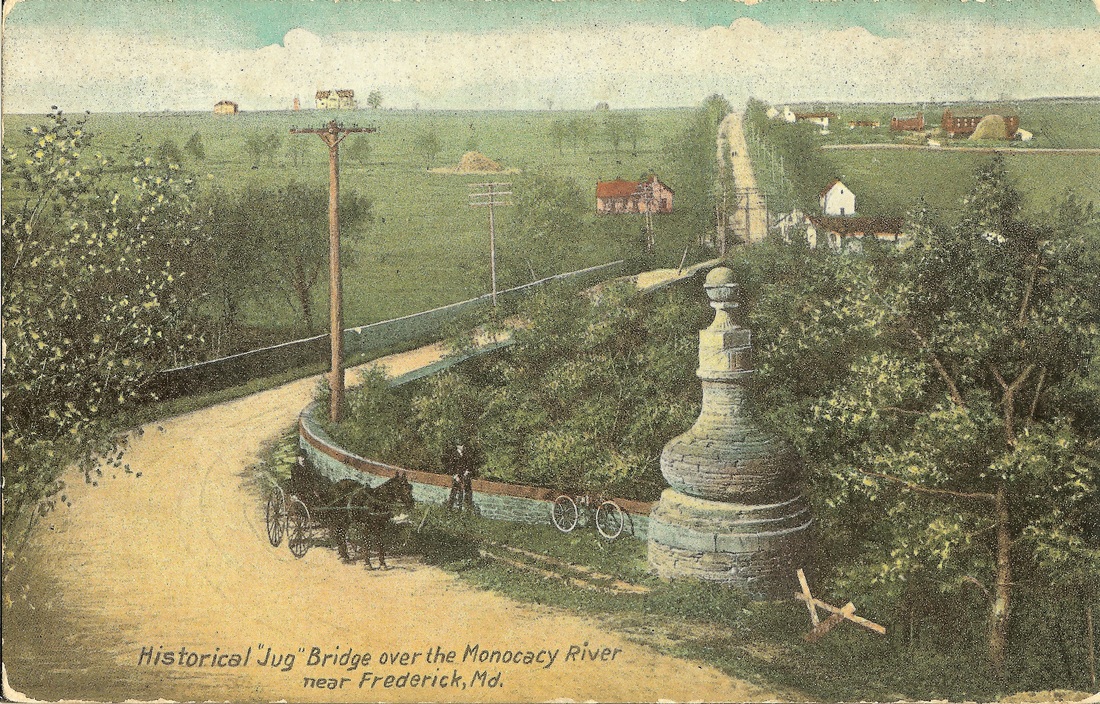 (c) 1900 view of the original "Jug Bridge" looking west toward Frederick from the east side of the Monocacy River. Note the building fronting the right side of road (on upper right of picture) as site of the Monocacy Bridge Hotel. This structure and the vicinity below (extending to the river) was the likely site of Frederick's earliest agricultural exhibitions. The lower white buildings constitute another residence and the Toll House. 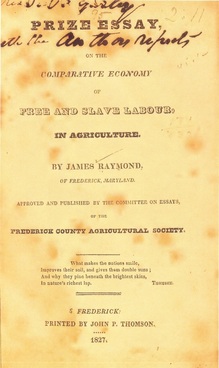 The Cattle Show, Fair and Exhibition would be held a final time at the Monocacy Jug Bridge vicinity in 1826, as a resolution by the Society dictated the 1827 event to be held in New Windsor on the land of Major James Atlee. Either by design or not, the 4th annual Cattle Show, Fair, and Exhibition would be held near Liberty Town on May 30 and 31st, 1827. Of notable interest were two particular premiums handed out at this event. One of these went to Frederick’s James Raymond, Esq. for the best Essay, written on the subject of “the comparative economy of free and slave labour.” Mr. Raymond received, as his prize, a set of table spoons inscribed “Free Labour.” 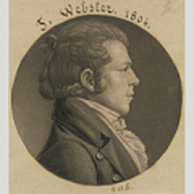 Vintage engraving thought to be an image of bachelor/lawyer Nimrod Owings by French artist Julien de Saint-Memin. Vintage engraving thought to be an image of bachelor/lawyer Nimrod Owings by French artist Julien de Saint-Memin. The other competition of note was a first place premium for the best stallion calculated to improve the breed of quick draught horses which went to Nimrod Owings, for his beautiful young bay horse “Enterprise,” sired by his horse “Arrow,” premium winner at the First Maryland Cattle Show. Owings originally hailed from his family's estate of Fountain Rock, located west of today's Walkersville off Biggs Ford Road. He was infamously known for his love of hunting, gambling, and practical jokes. He owned 52 hounds, one for each card in a deck and is credited for providing much of the "wild game" foodstuffs for the grand banquet and ball held in Frederick for Lafayette on December 30th, 1824. His eventual residence and plantation estate (a few years later) would be Waverly, today's site of Waverly Gardens Apartments and the Manor Apartments on Willowdale Drive. Owings former manor house is the clubhouse/office headquarters of the latter. He is buried beneath Frederick's Memorial Park in what was the Old German Reformed After a run of four (or five) events in a six-year span, the Frederick County Cattle Show, Fair and Exhibition was discontinued and would not return for another 25 years. Click below for Part 2 of this story:
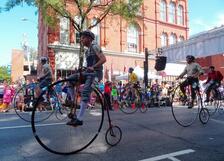 A scene from Frederick, Maryland's annual high-wheel race. A scene from Frederick, Maryland's annual high-wheel race. Biking has sure received its share of local press coverage in recent weeks. The shared-use bike path tunnel under US15 (at Rosemont Ave.) is now a completed reality. The 6th annual Tour de Frederick took riders all over the county this past weekend amidst scorching temperatures. And there was another successful running of the National Clustered Spires High Wheel Race, billed as the only race of its kind in the United States. Frederick certainly deserves its reputation as a "bike friendly destination." 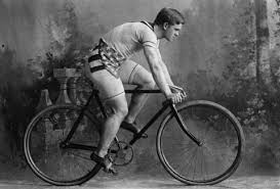 One-hundred twenty years ago, the scene here was quite similar as “flyers” from all over the country descended upon Frederick. Now the term “flyers” may be a little confusing to use today as this has its chief connotation connected with airline travel—unless of course, you are a fan of professional hockey living in Philadelphia. Over a century ago, however, the most common image of flyers had nothing to do with leaving the ground. Actually it was a term reserved for those individuals powering unique, framed machines, boasting two tires cranked by pedals. In the mid-19th century, this creation was first given the name of “bicycle” by European newspapers. The Craze Different styles of tandem-wheeled transportation came to be known, and improved upon, until the late 1880’s. These included earlier prototypes with odd names such as “The Dandy Horse,” the velocipede, the boneshaker and the penny-farthing. The latter featured a tubular steel frame attached to wire-spoked wheels with solid rubber tires. Although this design was more commonly known as an “ordinary bike,” it also took the moniker of “high-wheeler” because the front tire being much taller than the rear tire. Due to the difficulty in mastering these contraptions, an alternative was introduced in the late 1880’s and given the catchy name: “safety bicycle.” Marketing genius at its finest! The “safeties” offered two wheels of identical – or nearly identical – size, and a chain-driven rear wheel. The most popular form of the safety bicycle frame became known as a diamond frame because it consisted of two triangles,. This started a bonafide frenzy the world over as the 1890’s would be known as the Golden Age of Cycling. There were upwards of 312 factories engaged in the production of the safety bicycle. Here in Frederick, one of the key supplier/agents of these “flying machines” was an unlikely retailer—the local newspaper. The Daily News, which had been started by William T. Delaplaine in 1881, was publishing frequent advertisements for “the Rambler” bicycle manufactured by the Gormully & Jeffery Mfg. Co. of Chicago. Frederick residents were bitten by the bicycle bug. Enthusiast groups quickly formed and century rides were held. The Frederick Club’s headquarters was once located at 6 West Patrick Street. One could also find other "safety" features related to the cycling experience. Schools, many owned and operated by the bicycle manufacturers themselves, offered riding lessons for beginners. Women were urged to purchase "safety skirts" for safer cycling. NOTE: Perhaps somebody missed an opportunity by not reintroducing this garment during the "Safety Dance" (Men Without Hats) rage of 1983. Last but not least, there was a model designed by the Columbia Bicycle Company and introduced at the 1896 New York Bike Show that featured a 40 lb Colt automatic gun attached to a turntable on the front handlebar. An article in the February edition of The Engineer magazine outlined this urban-assault bike saying that "the gun, which can be moved vertically or horizontally in any direction, is a single-barrel weapon with a ‘pistol’ handle attached to a breech casing, containing the mechanism for feeding, firing and ejecting the cartridges. These are contained in belts stored in a boxes containing 250 or 500 cartridges each. Single shots may be fired, or the gun may automatically fire all the cartridges on the belt at one pull of the trigger, firing 100 shots in 16 seconds." The article added that the recoil from the gun would not cause a problem with routine riding. 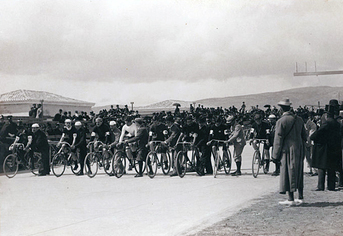 Starting line for a cycling event, 1896 Olympics in Athens, Greece. Starting line for a cycling event, 1896 Olympics in Athens, Greece. Olympic Revival Bicycling was “flying high” in the summer of 1896, likely fueled by the return of the first Summer Olympics (held during the modern era), in Athens the previous April. Newspapers wrote stories and showed photographs of the events. Cycling was a sanctioned offering and six featured events were contested at the Neo Phaliron Velodrome. Nineteen cyclists, all men, from five nations competed. The U.S. team didn’t participate in the cycling event. Actually the vintage Team USA didn't participate in most of the events. They only had only fourteen competitors and were involved in just three sports at the 1896 Summer Olympics. Eleven athletes took part in track and field related events, while two brothers and another engaged in pistol/rifle shooting events. 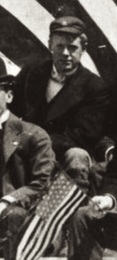 Olympic swimmer Gardner Williams (1896) Olympic swimmer Gardner Williams (1896) The third event was swimming, with one US entrant. Of the 14 Americans at the Athens Games, all but two won medals. Charles Waldstein, a shooter, and Gardner Williams, a swimmer, were the unfortunate not able to obtain the sought after "metal hardware necklace." The latter gentleman, Williams, was certainly no Michael Phelps! Penniless at the start of Olympic competition, he is rumored to have spent all of his money on training and travel. Thomas Curtis, another member of the 1896 US Olympic team, described Williams’s problems in the Athens swimming events by giving this account of the swimmer in action: “Williams jumped into the Bay of Piraeus where the swimming events were held, to start the 100m freestyle, and found the 55 degree water very cold, proclaiming, ‘Jesus Christ! I’m freezing.’ He then scrambled out of the water.” And that sadly explains a lack of medal on his part. Gardner Williams does, however, hold the unique distinction of being the first US athlete to participate in an Olympic event. (Note that for a future Jeopardy watching or cocktail reception ice-breaker!) As the Olympics aided the popularity of cycling, it did the same for competitive swimming, and municipal swimming pool construction. Some of the possible men destined for Athens, sat out that first Olympics here at home. However, some of these outstanding athletes would give Fredericktonians the opportunity to witness high-level sport competition, right here in their own backyard. This would occur over a very special Fourth of July weekend (for Frederick), in the year 1897. Two US cycling sensations would exhibit their "flying" skills for the masses. Frederick's First Big Bicycle Race On Saturday, July 3rd, well over 1,000 spectators came out to Frederick’s Athletic Field (later to be named McCurdy Field) to see the opening day of the seventh annual Meet of the Maryland Division, League of American Wheelmen. Here they saw several racing contests ranging from individual rider competitions to tandem and club/team heats. Frederick’s bicycling fans were also treated to two exhibitions by a pair of America’s leading professionals. The first was a mile-long run by John Lawson, a Swedish-American rider hailing from Wisconsin and known more commonly as "The Terrible Swede.” A half-mile exhibition was perfected by a fellow pro-bicyclist, E. P. Thompson of Philadelphia, also possessor of a nifty nickname—“the Turkey.” Another featured event during this 4th of July weekend celebration of cycling was a "coasting contest" which started atop Cemetery Hill (outside the front gate of Mount Olivet Cemetery). Without the assistance of peddling, riders could not use their brawn, but rather simply “took flight” down the hill in a northerly direction (on South Market Street) with hopes of their bicycles taking them greater distances than other competitors. 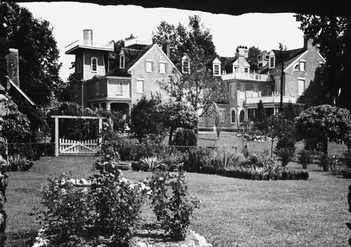 Poplar Terrace, home and estate of Col. Louis Victor Baughman located west of Frederick. Poplar Terrace, home and estate of Col. Louis Victor Baughman located west of Frederick. That Saturday afternoon, cyclists found themselves feted and treated to entertainment at Poplar Terrace, the estate of Col. Louis Victor Baughman. This property, located just west of town, today found off the family’s namesake lane (Baughman's Lane), boasted a casino as well. Additional races, tandem and of the single wheel variety took place on Col. Baughman’s horse track. He personally awarded nice silver trophies to the victors. On Saturday night, the boys greatly enjoyed a dance at Braddock Heights and according to news reports, “kept the town lively until a late hour with the noise of the cannon crackers and the sounds of their jovial hilarity.” Sunday the 4th was observed with reverence, and many of the cyclists attended local church services. Throughout the afternoon, riders took the opportunity of taking training rides throughout the county’s turnpikes, visiting places of historical interest. Monday held a schedule of additional contests. A road race took place in the early morning, possessing a route from Frederick to Woodsboro, with a return back. The Clifton team (Clifton Park, Baltimore) won this event with a record time of 1 hour and 3 minutes and 30 seconds. Late that afternoon, more events took place at Athletic Park, including a second exhibition by the original Philadelphia Flyer, E.P. “Turkey” Thompson. The grandstand was packed again to capacity with several hundred additional fans aligning the track route. Races included 1/3 mile and two mile division championships and professional handicaps. The night concluded with a grand fireworks show, stated to be “the most beautiful ever seen here.”
Although firmly grounded, Frederick and her citizens were certainly “flying high” after a great holiday weekend of cycling. I think the same can be said here this week in 2016. 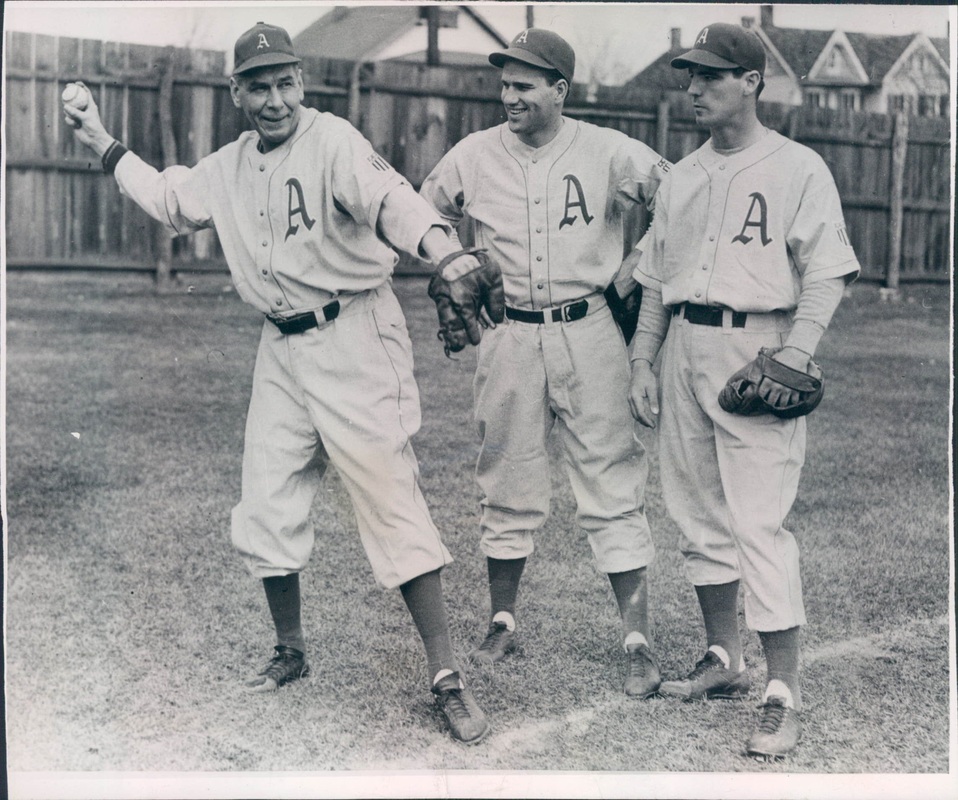 Philadelphia Athletics Coach Charles Albert "Chief" Bender giving instruction to two rookies (Bert Kuczynski and Billy Woods) during spring training camp held in Frederick, Maryland (March 1944). Bender was a pitcher who played in 5 World Series, winning 3 of them. He was inducted into the baseball Hall of Fame in 1953. 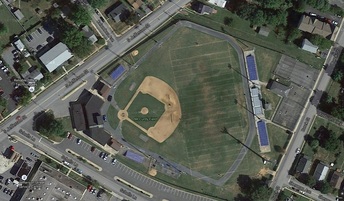 Aerial view of Frederick's McCurdy Field, located at 210 S. Jefferson St. in Frederick, Maryland Aerial view of Frederick's McCurdy Field, located at 210 S. Jefferson St. in Frederick, Maryland Since my last article, I have had the good fortune of attending two professional baseball games—one minor league game here in Frederick, and a major league matchup in Philadelphia. Both contests were losing efforts by the home teams, but provided me with opportunities to enjoy baseball with my sons (and in the stands) as opposed to watching them on the little league diamond, something my wife and I did from March-early July. Both games brought back great memories from the past, not to mention historical ties to Frederick, and more so, Frederick’s McCurdy Field. The most recent event took place the other night as we saw the Frederick Keys matched up with the Myrtle Beach Pelicans. I quickly found myself in an embarrassing situation as I couldn’t tell my boys anything about the Pelicans, and nothing relevant about the hometown Keys. All I could muster was the fact that the Pelicans organization used to be the Durham Bulls (see Wikipedia sites for Durham Bulls and Bull Durham—a 1988 Kevin Costner movie), but moved to Myrtle Beach in the late 1990’s. My boys were instantly confused and became more so when I began to recount stories of my Cable 10 days producing/directing and running camera for live cablecasts of Frederick Keys games in the 1990’s. We had covered the minor league Class A affiliate of the Orioles since their inaugural season in 1989, including their first game as the Frederick Keys against the aforementioned Durham Bulls. Many assume that Harry Grove Stadium has been their only home, but that first season was played at McCurdy Field. The McCurdy facility was originally built in 1924 for $15,000 and originally dubbed Frederick County Athletic Field. The catchy name was eventually changed in honor of Dr. Ira J. McCurdy, who spearheaded fundraising efforts for the field. 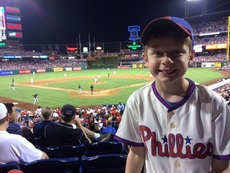 Eddie Haugh enjoying Marlins vs. Phillies at Citizens Bank Park (July 21, 2016) Eddie Haugh enjoying Marlins vs. Phillies at Citizens Bank Park (July 21, 2016) I grew up a Phillies fan as both my parents were born and raised in northern Delaware. I have dual allegiance to the Orioles and have brainwashed my son Eddie to do the same. For his 10th birthday, I took him up I-95 to see the Phillies play the Florida Marlins at Citizens Bank Stadium. We did likewise last year on his 9th birthday. Each of these times, I fondly remembered back to my first Phillies game at his age, culminating a few years later (when I was 13) with winning the 1980 World Series. The Phillies returned three years later, only to lose the series to the Orioles and Cal Ripken in his rookie season. I had to wait another 28 years for the Phillies to win another World Series in 2008—and Eddie was right there on my lap celebrating, at age 2. Unfortunately for both of us, the Phillies are in a rebuilding mode after having a great run from 2007-2010. Who knows when they will return to greatness, part of the allure (and frustration) of sports and sport history. And speaking of history, more brainwashing was performed on my part as I suckered Eddie into watching all 10 episodes of Ken Burn’s Baseball documentary with me last year. He was genuinely engaged with the program, gaining an instant respect for the origins of the game and players/teams of the past. I was excited to tell him about former New York Yankee star Charlie "King Kong" Keller who grew up in Middletown, and lived in retirement on a horse farm in the Indian Springs area north of Frederick City. This experience even precipitated a field trip down to Rockville one day to visit the gravesite of the legendary Walter Johnson, and a lunch at Gettysburg Eddie’s restaurant which honors G-burg hometown hero Eddie Plank who played for the Philadelphia Athletics from 1901-1917. While at the “birthday” game, Eddie asked me if the Phillies were originally the Philadelphia Athletics. A very astute question to which I simply replied “No,” as the Athletics (A’s) organization moved to Kansas City in 1955, and eventually to Oakland in 1968. Before getting back to the modern game at hand (which the Phillies lost 9-3), I piqued Eddie’s interest by saying: “You know, the Philadelphia Athletics played in Frederick back in the 1940’s.” He gave me quite a look of whimsical disbelief, and I told him we’d talk about it on the car ride home. During World War II, organized sports continued to press on as a positive source of entertainment for the folks back home. However, the war would have an impact, as many players enlisted voluntarily or were drafted into military service. Other players took jobs in defense industries to do their part. In some cases, older and retired players got a new lease on life as teams rushed to fill rosters with men who had experience at the major league level. In some sports such as professional football, there exist examples such as the 1943 Steagles, in which the Pittsburgh Steelers and Philadelphia Eagles had merged together to make one competitive team from two rosters that had been severely impacted by the war. One of the consequences facing baseball came from the director of Defense Transportation who asked baseball to curtail its spring training use of the nation’s railway system given the demands of war-related shipments. In response, baseball commissioner Kennesaw Mountain Landis (in January 1943) ordered all clubs to find spring training locations north of the Potomac and Ohio Rivers.  For the Philadelphia Athletics and legendary Hall of Fame manager Connie Mack, the restriction of big league clubs to the north was not that big of a deal, as they spent spring training 1943 in Wilmington, Delaware. The selection was likely influenced by the Athletics’ half interest in the Wilmington club of the Interstate League, along with established training facilities and opportunities to recruit new talent. A year later, a conundrum had developed. The cross-town Phillies would be purchased by the Carpenter family, who had negotiated to obtain the whole of the Wilmington team. The Phillies would naturally conduct their 1944-45 spring training camps in Wilmington, using the same facilities the Athletics had utilized during the 1943 pre-season. The Athletics now began a search for a new spring training home “above the Potomac” for the 1944 season. Manager Connie Mack looked at some fields in Atlantic City, but knew the New York Yankees were interested in utilizing that locale. 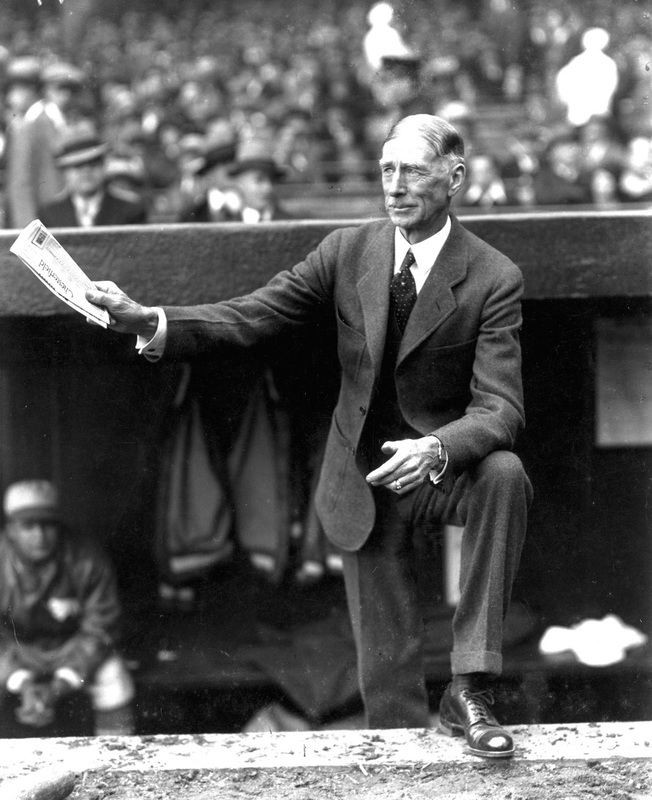 Pro player, manager, and team owner, Connie Mack was the longest-serving manager in Major League Baseball history and holds records for wins (3,731), losses (3,948), and games managed (7,755), with his victory total being almost 1,000 more than any other manager. His father Private Michael McGillicuddy had served in the 51st Massachusetts Volunteer Infantry Regiment during the American Civil War. This outfit was stationed at Monocacy Junction and guarding the B&O Railroad on July 6 & 7, 1863, in the days following the Battle of Gettysburg. 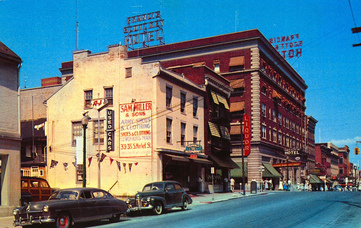 The Francis Scott Key Hotel (Frederick, Maryland) became the new spring training headquarters for the Philadelphia Athletics baseball club. The Francis Scott Key Hotel (Frederick, Maryland) became the new spring training headquarters for the Philadelphia Athletics baseball club. Connie’s son Earle headed west. Where to you may ask? Naturally, to Frederick, Maryland, at the urging of the Frederick Chamber of Commerce who had been marketing their baseball facility as an adequate site for major league spring training. Earle Mack inspected McCurdy Field on December 1, 1943, and was successfully swayed by Frederick officials who accompanied him during the tour. The very next day the team announced plans to come to Frederick for spring training camp in three months’ time. Connie Mack made a visit to Frederick in mid December and in late February announced that the A’s would open camp on March 10th, but the deadline for players to report wouldn’t be until March 12th. The team would stay in downtown’s Francis Scott Key Hotel. Earle Mack released a partial schedule of Athletics’ pre-season games, which included contests against the Curtis Bay Coast Guard team, Baltimore and Toronto of the International League, and three match-ups against the Yankees. 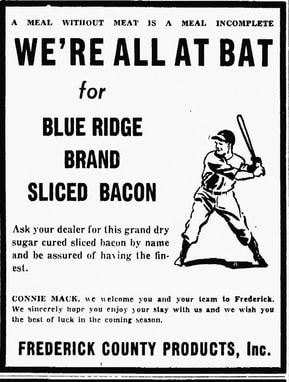 "A meal without meat is a meal incomplete." Local businesses ran supportive ads like this one in the local newspaper. (Frederick News March 14, 1944) "A meal without meat is a meal incomplete." Local businesses ran supportive ads like this one in the local newspaper. (Frederick News March 14, 1944) Mr. Mack, welcome to our world of March baseball! The weather was cold at times, and rainy the others. A muddy field and frigid temperatures forced many indoor practices. The Macks persevered however to get their team ready for the 1944 campaign. Regardless of weather, Frederick leaders and citizens were going to make sure that the major league team knew just how much they appreciated their choice of venue for training camp. With 1944 marking Connie Mack’s 50th year as a major league manager, a special testimonial dinner was held on March 17th to honor Connie Mack. It was attended by 250 members of the local Lions, Kiwanis, and Rotary clubs. Offering a self-deprecating assessment of his skills as a manager, Mack claimed the dinner was to honor the fact that he had more tail-enders than any other manager. In comments to the assemblage, Mack observed that the New York Yankees of the Ruth-Gehrig period were the greatest modern team. He identified John McGraw as the greatest manager ever, and Christy Mathewson as the greatest pitcher. 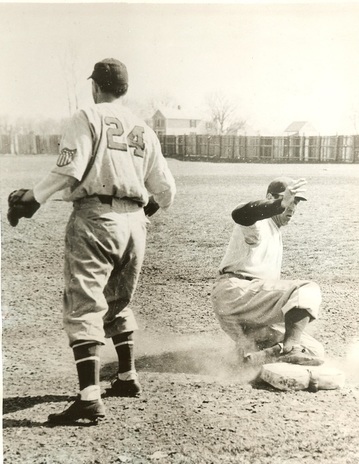 A rare surviving image from the March 25th game between the Athletics and the Curtis Bay Coast Guard team played at McCurdy Field. Here, Philadelphia 1st baseman Dick Siebert slides safely into third in the bottom of the second inning. The A's won the game 8-3. The third baseman, #24, for the Coast Guard team was Gar Del Savio who briefly played for the Philadelphia Phillies in the 1943 season. A rare surviving image from the March 25th game between the Athletics and the Curtis Bay Coast Guard team played at McCurdy Field. Here, Philadelphia 1st baseman Dick Siebert slides safely into third in the bottom of the second inning. The A's won the game 8-3. The third baseman, #24, for the Coast Guard team was Gar Del Savio who briefly played for the Philadelphia Phillies in the 1943 season. A week later, the Philadelphia Athletics first spring training game took place at McCurdy Field on March 25, 1944 and pitted the A’s against the Curtis Bay Coast Guard. The A’s took the game 8-3. The next exhibition game took place a day later when the Athletics bested the visiting Baltimore Orioles 3-1. This game was noteworthy for a very important reason. One of the players on the A’s squad was a 16-year-old, diminutive, unheralded infielder by the name of Jacob Nelson Fox. On this day, Fox got a single—his first hit at the major league level. “Nellie” Fox would go on to have an illustrious 19-year career, played mostly at the 2nd base position, in which he would lead the American League in hits four times in a career that would lead to the Hall of Fame in 1997. 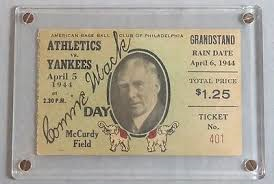 Against minor league opposition, the A’s went on to beat the hometown Frederick Hustlers 4-0 (April 1) and the Toronto Maple Leafs of the International League by a score of 5-1 at McCurdy Field on April 4, 1944. Competition against big league teams began on April 6th, 1944 when the New York Yankees journeyed to Frederick. Because of wartime travel restrictions, this was the only trip the Yankees could make to McCurdy Field. Frederick was caught up in baseball fever. Businesses and county government offices closed early in order to allow employees to attend the gig game. Meanwhile the public school system saw a spike in absenteeism on this day. In a game that featured snow squalls and freezing temperatures, 1,500 fans packed McCurdy to see the illustrious “Bronx Bombers” get crushed by the A’s by a score of 9-1. The game was even called when substantial snow began falling in the bottom of the 8th inning. The Athletics then made their only trip away from the Frederick spring training camp, traveling to Atlantic City to play a few against the Yankees on their “home” turf. The spring training concluded with a return match against the Orioles on April 9th, 1944 (Orioles 4, A’s 3) and a final tune-up victory on April 12th with the Curtis Bay Coast Guard team (A’s 9, Curtis Bay 3). At a Frederick Chamber-of-Commerce banquet held on April 7th to honor the Philadelphia Athletics, and the opponent Yankees before their departure for the regular season. Connie Mack thanked his hosts and announced that “the Athletics will train in Frederick next year if we are not permitted to go to Florida.” The Governor of Maryland, Herbert R. O’Connor, attended the banquet and told attendees that he would declare a legal holiday in the state if the Athletics won the American League pennant. The Philadelphia Athletics opened the 1944 season with a game against the Senators on April 19th at Griffith Stadium in Washington, D.C. The A’s took the game 3-2, in 12 innings. Unfortunately the A’s finished the season in 6th place (out of 8 teams), 17 games out of first place.
With the war still going on in early 1945, the spring training location rule remained in effect. Connie Mack and his ball club did return to Frederick as promised. As the months went by, the promise of an end to World War II became a reality. Peace and normalcy would return to major league baseball. However, this would end the magical era of Frederick, Maryland hosting a major league team as the Philadelphia Athletics opted to train in sunny West Palm Beach, Florida in spring of 1946.  Snorunt Snorunt I want to start by saying I have not played Pokémon Go, and don’t ever see myself doing so. Like many of my generation, I was introduced to the “Poké posse” by my kids. This came in the form of trading cards, books, Nintendo DS games and the anime television cartoon. Since my initial viewing of the tv show, I have always harbored a strong dislike for the slightly overweight, yellow, rodent named Pikachu. This has come with my sons’ collective chagrin because Pikachu is universally regarded as the cutest, loveable and most popular of all the species in the Pokémon monster universe. I personally think that he lacks the allure and charisma of the famous animated mice of my childhood such as Mickey, Jerry, Mighty and the “cultural crossover” Speedy Gonzales. Maybe it’s Pikachu’s high pitched voice, or those rosy red (energy filled) cheeks, but I just don’t feel the love. Now Patrat and Snorunt are another story, I love those creatures! The latter resembles the Jaws movie logo regurgitating Girl Scout Thin Mint® cookies. 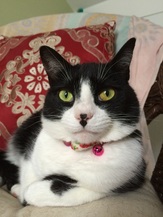 Loveable Grace the cat. Please refrain from the Hitler jokes, as she has an unfortunate birthmark. Loveable Grace the cat. Please refrain from the Hitler jokes, as she has an unfortunate birthmark. There’s certainly no denying that this new mobile game has been taking over the lives of both kids and adults alike during the past few weeks. While Pokémon Go has not pervaded my boys yet (at least at the time of this writing), one of our family pets may be into it, but I haven’t seen a phone used. The other night, Grace the cat traveled the yard and actually caught her first mouse, which she proceeded to bring into the house as a trophy. She then decided to take it up to my bedroom for all to see. I had to fight her to retrieve the dying creature, comfortably being held in said cat’s mouth. I succeeded, but was sadly disappointed to find only a hapless minute, brown mouse—and not one of the fat and yellow variety! I find it ironic that Pokémon Go mania has officially captivated the world, especially at a time when world leaders, military operatives and intelligence authorities are playing the real-life version of the app—desperately hunting for Pokémon monsters in the form of terrorists and potential terror threats hiding within our landscape. At the same time, its also interesting to note that Pokémon is a game rooted in "doing battle" and this is based on species classifications and characteristics. Wait a minute, isn't our world and country also embroiled in battle and "species classifications" with all the threatening rhetoric, hate mongering and the potential for race wars based on perceived stereotypes cast upon Muslim, Mexican, Middle Easterners, Blacks, Whites, police officers and political candidates. My earlier scathing comments regarding sweet little Pikachu, caption for Grace's picture and reference to Speedy Gonzales could certainly be seen as equally offensive and racist as well. Politics, fear, culture clash, human nature and ignorance are constants in today’s world. But more importantly, those realities of good and evil surround us every day, just like those creatures hunted for an enthusiast’s Pokédex. Now you’re certainly not here to hear me talk politics. I’m not interested in that either, but I am experienced in sharing local history and stories, while adding proper context from time to time. 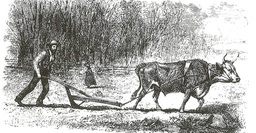 Early German settlers, the backbone of Frederick County since 1748! Early German settlers, the backbone of Frederick County since 1748! So where am I going with all this? So where am I going with all this? In the realm of Frederick’s history, I have discovered parallel events that slightly resemble Pokémon Go, involving “Pokémon trainers” of early times. Specifically, I want to share three important time periods that involve public safety officials and their searches/quests for securing the “gym community” of Frederick over our near 270-year history. Unfortunately, (or in some cases fortunately) each involves capturing and detaining members of the ethnic group responsible for originally settling and growing Frederick—the Germans. THE AMERICAN REVOLUTION ERA Our first stop takes us to the time of the American Revolution. Frederick is often characterized as being very strong in supporting the fight for independence against Great Britain. From the 1765 Stamp Act Repudiation by the twelve immortal Frederick County court justices (the first known protest from a sanctioned government body) to leading patriots such as Thomas Johnson, Jr., John Hanson and Lawrence Everhart, our local citizenry provided leadership, soldiers, supplies and money. Well at least most of them did—actually all but seven it appears. Those who reportedly chose to do otherwise were Peter Suman, Casper Fritchie, Henry Schell, Adam Graves, Yost Plecker, John George Graves, and Nicholas Andrews. And with the exception of Andrews, these guys were all German. 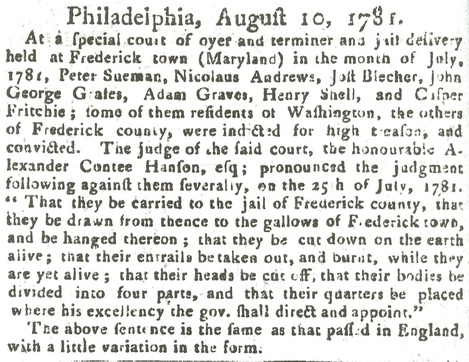 Newspaper article appearing in the August 10, 1781 edition of the Pennsylvania Evening Post (Philadelphia, PA) Newspaper article appearing in the August 10, 1781 edition of the Pennsylvania Evening Post (Philadelphia, PA) The seven men I listed above were part of a Tory Loyalist plot to support the British war effort, recruit troops and liberate prisoners. Their plan was actually discovered by a spy/informant at Harmony who promptly notified the authorities. The men were arrested on July 25, 1780 and were given a trial in Frederick nearly a year later in June 1781. A special tribunal presided over the proceedings and was headed by Alexander Contee Hanson (son of John Hanson, our first president and namesake for a portion of Maryland route 50). The following verdict of this court appeared in the August 15, 1781 edition of the Pennsylvania Gazette: "At a special Court, lately held at Frederick-Town, Maryland, Peter Suman, Nicholas Andrews, John George Graves, Yost Plecker, Adam Graves, Henry Shell and Casper Fritchie were found guilty of high treason. Judge Hanson imposed the following sentence on them: You will be carried to the gaol of Frederick County, and there be drawn to the gallows of Frederick-Town and be hanged thereon; you shall be cut down to the earth alive, and your entrails shall be taken out, and burnt while you are yet alive; your head shall be cut off; your body shall be divided into four parts, and your head and quarters shall be placed where his Excellence the Governor shall appoint—So Lord have mercy upon your poor souls!" 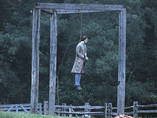 It’s sometimes been said that four of the gents got off with the proverbial “slap on the wrist,” however this wasn’t exactly the case as their sentence was commuted to life with hard labor aboard a French man-o-war. Three of these men (brothers Adam and John George Graves, along with Nicholas Andrews) would settle in Nova Scotia in 1782, living out their lives in Canada. Unfortunately, things weren’t quite as rosy for Peter Suman, Yost Plecker and Caspar Fritchie. It is thought that their sentence were lessoned a bit as well, reduced to simple hangings for each member of this trio, and not the “full monty” of having their bodies drawn and quartered. While certainly indicative of sending a firm message to the populous, “entrails on display” are not a tourist draw for any community, not even Frederick. 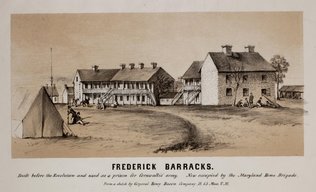 Now, you can’t exactly classify them as early tourists, but we did have plenty of European visitors here in Frederick during the Revolutionary War period. However, these well-traveled individuals were not here by choice, rather they were imprisoned guests at what some should consider Frederick’s first downtown hotel and conference center—the Hessian Barracks. Originally referred to as the Frederick Barracks, this impressive combo of stone structures and adjacent grounds resulted from one of the first acts of the new Maryland General Assembly under local resident (and first-elected Maryland governor) Thomas Johnson, Jr. English soldiers under Gen. Burgoyne were lodged here in November 1780 through July 1781. And yes, these are the guys who can be blamed for getting our local Germans in trouble (and executed) with that loyalist plot involving a plan to free British prisoners. Anyway, these Redcoats left town under military escort heading for Boston and a sea voyage back home to England. 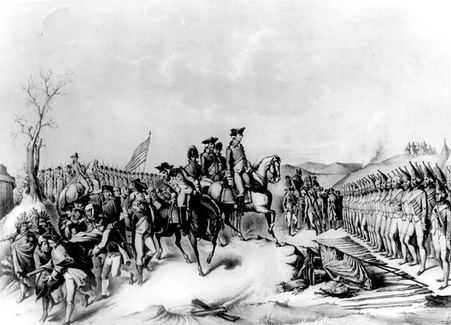 Hessians surrendering after the Battle of Yorktown (October 1781) Hessians surrendering after the Battle of Yorktown (October 1781) The “Barracks” would soon receive the name that has stood the test of time. This occurred when mercenary soldiers hailing from Germany’s Hesse region showed up. They had been employed, rather forced to fight by their own Duke. And they had to do it with their on again/off again enemy in England. They sailed over and fought under the British forces. Nearly 1,400 soldiers who had surrendered or were captured at the battle of Yorktown arrived here in February 1782. Most would spend the next 15 months in the posh confines, basically bored out of their minds and uncertain about transportation back home to their “mutter-land.” There are several accounts of many of these soldiers working on local farms and deserting, eventually many assimilated into life as Frederick Countians when released at the war’s end. Besides, Frederick sure had more than its share of pretty and available German girls around. THE CIVIL WAR ERA Interestingly, eighty years later in September 1862, two Frederick residents closely tied to the “German prisoner” events of the American Revolution would play mighty roles in a new conflict facing Frederick, both city and county. These individuals were neighbors living on West Patrick Street who doubled as outspoken Unionists and supporters of President Abraham Lincoln. 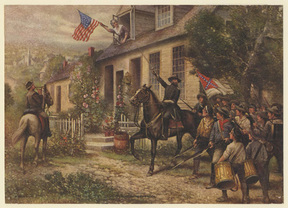 "Shoot if you must, this old gray head, but spare your country's flagge, she said." "Shoot if you must, this old gray head, but spare your country's flagge, she said." One such person was a 95-year-old woman whose last name came from being married to the son of executed Tory Loyalist plot conspirator, Caspar Fritchie. Although gaining international fame (thanks to the immense success of John Greenleaf Whittier’s poem), Frederick’s top Deutsche dame and flag-waver, Barbara Fritchie, continues to be investigated and scrutinized by “spoiled sport” historians like yours truly! The pen of Whittier gave posthumous fame to this German, while eradicating the shame of the Fritchie name during the Revolutionary War. Speaking of pens, one was regularly used across the street from her house, making a later hero (at least to historians, researchers and genealogists) out of a cranky, "busy-body" who certainly knew politics like nobody's business. 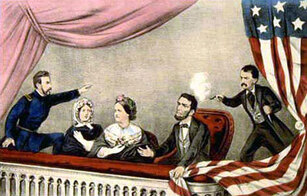 Assassination of Abraham Lincoln by John Wilkes Booth at Fords Theater (April 14, 1865) Assassination of Abraham Lincoln by John Wilkes Booth at Fords Theater (April 14, 1865) Jacob Engelbrecht was the son of one those Hessian soldiers who decided to “marry local,” and conduct his profession as a tailor. Although following in his father Conradt’s footsteps, Jacob is best known for his outspokenness and more so his writing, having kept a detailed diary from 1819 until his death in 1878. He was very proud of three things, his German cultural heritage, his hometown of Frederick, and his country, the United States of America. The American Civil War had lasting effects on Engelbrecht, but no single event was more poignant than what happened at the war's close in April 1865. At this time, Jacob Engelbrecht was serving as Frederick City’s mayor, and had the painful and solemn duty of notifying the residents of the death of his hero and the Union's savior, President Lincoln. 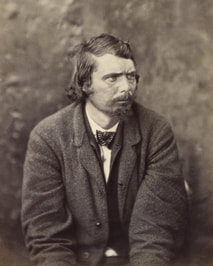 George Atzerold George Atzerold News of Lincoln’s death polarized Frederick as it did countless cities in the north. Immediately, a manhunt to find the president’s assassin had begun. John Wilkes Booth had not acted alone, as other associates were now being searched for and duly arrested. Engelbrecht and the nation would soon learn that one of the conspirators was a native of Germany—George Atzerodt. The 30 year-old Atzerodt had been born in Dörna (today part of Anrode, Germany) and came to the US in 1843 at the age of eight. As an adult, he conducted a carriage repair business in Port Tobacco, Maryland. Cowardice got the best of George Atzerodt before he was able to carry out his specific assignment of killing vice president Andrew Johnson on the infamous night of April 14. He fled Washington, DC the next day with the intent of reaching Germantown (Maryland) and the farm of his cousin Hartman Richter. He successfully reached his destination, where he had spent considerable time as a child, but had left a sordid trail of clues behind for authorities. Atzerodt was captured at the Richter farm while in the confines of his bed in the early morning hours of April 20th. 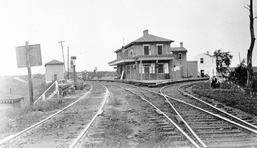 Monocacy Junction Monocacy Junction A man of Scottish ancestry had apprehended the German conspirator in Germantown. Sgt. Zachariah W. Gemmill of the First Delaware Cavalry is credited with capturing Atzerodt. Gemmil’s unit had been stationed at Monocacy Junction, just below Frederick when his commanding officer received a tip from a local farmer named James W. Purdum regarding a suspicious man being harbored at the Richter farm. Gemmill and six troopers brought Atzerodt, Hartman Richter and two other farmhands back to Monocacy Junction, where they would be placed on trains and delivered back to Washington under military guard. Gemmill would eventually get to split a $25,000 reward with his commanding officer Major E. R. Artman, his six privates and James W. Purdum. As for George Atzerodt, he and three other convicted conspirators (Mary Surratt, Lewis Powell, and David Herold) were hanged in Washington, DC on July 7, 1865. Atzerodt's last words were "May we all meet in the other world. God take me now." He did not die instantly; his neck did not break upon impact, and his body shuddered for several minutes before dying. Atzerodt is assumed to be interred in an unmarked grave within the District’s Glenwood Cemetery, the same cemetery that holds the body of Mary Quantrill in an unmarked grave. Quantrill (whose mother was German) was another Civil War flag-waving heroine like her one-time neighbor of Barbara Fritchie on Frederick’s West Patrick Street. Jacob Engelbrecht would document the execution in his diary on Friday, July the 7th, 1765. He listed Atzerodt and his co-conspirators by name and emphatically added: "Justice has at last overtaken the murderers. All right!" 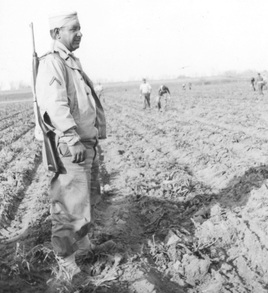 American Guard overseeing former German soldiers doing farmwork American Guard overseeing former German soldiers doing farmwork World War II Era Nearly 80 years after Atzerodt’s execution, German born prisoners would make a return to Frederick. In the September of 1944, a former Civilian Conservation Corps camp used by men to construct Gambrill Park in 1933 would take on a new use. The location west of Frederick City adjacent the national pike (Route 40) became home to about 350 German Prisoners of War under the command of Captain Eugene Messner. The site was on a four-acre plot that formerly belonged to the Klein family farm. Today this is the site of a few residences, Summers Farm and adjacent businesses including the Weis supermarket, Bob Evans Restaurant and the Anderabi owned McDonald’s. Old Camp Road derives its name from those “old camps.” Local residents learned that a popular radio announcer had been arrested by FBI agents as a German alien. Assumptions immediately arose that Brandon Roberts (aka Heinzdieter Baron von Schoenermarck) was a spy, instead of an enthusiastic news reporter and disk jockey behind the turntable of WFMD. Robert’s “Your’s For the Asking” program usually aired on Saturday nights, but there would be an imminent change in programming for the upcoming weekend. 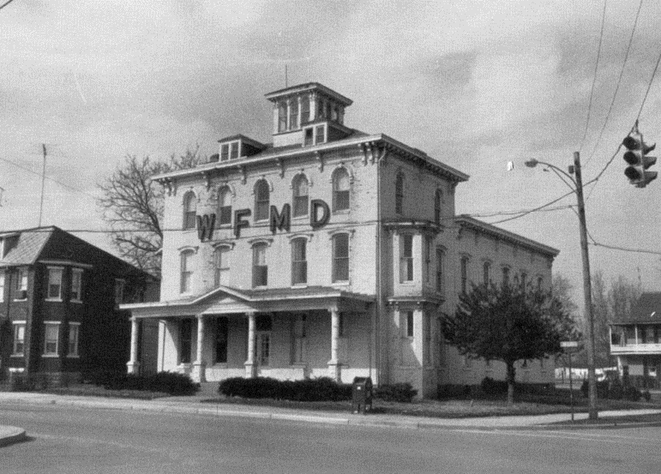 WFMD Radio station began broadcasting from the FSK Hotel, but eventually moved to the Groff House by the fountain at the intersection of N. Market and 7th streets. This was built by Capt. Joseph Groff in the late 1800s and operated as a hotel for many years. Groff was a colorful individual, proud of his German heritage and military service in the Civil War. He was one of the organizers of the Schutzen Gesellschaft (a German heritage social club interested in drinking beer and shooting guns) that met at Groff Park which would become eventually become the Hood College campus after his death. WFMD would later move to a location west of town atop Grove Hill. 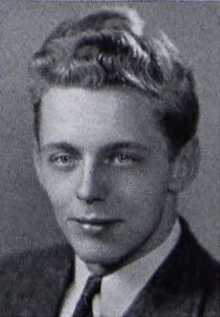 Brandon Roberts, aka Heinzdieter Baron von Schoenermarck Brandon Roberts, aka Heinzdieter Baron von Schoenermarck “Heinz” von Schoenermarck was born in Heidelberg in 1918, but had come to the US with his widowed mother in May, 1929 at the age of ten. He and his mother resided in Manhattan on the Upper West Side, where he engaged in work as an actor. He can be found living with his mother in the 1940 census but would be soon after attending Harvard University in Cambridge, Massachusetts. Von Schoenermarck was hired by the Monocacy Broadcasting Company, owners of WFMD, after receiving recommendations from New York’s NBC School of Radio Announcers. He resided at 102 W. Third Street in Frederick. The story made front page news across the tri-state region, as well as garnering coverage in the distant papers of Amarillo, Texas and Thomasville, Georgia to name a few. The 23 year-old von Schoenermarck was taken before US Commissioner D. Angle Wolfinger in Hagerstown, and subsequently held on $10,000 bail while awaiting federal grand jury proceedings in Baltimore. The charge was that the young German announcer had failed to register as an enemy alien, and had been falsely contending that he was a US citizen, went by his stage name, and had failed to get government permission to travel within the country. Heinz von Schoenermarck was finally released from custody three months later in October. The FBI had found no wrongdoing or involvement in espionage on his part. Heinzdieter von Schoenermarck was officially naturalized as a US citizen on February 10, 1947 in Baltimore. His mother would soon follow suit. After the Frederick incident in 1942, the one-time “presumed” felon hit the high seas as a first-mate and entertainer on various yachts and cruise ships. He would do this for eight years. Like those Hessian Germans, Heinz would marry a local girl from Frederick, proving once again that they are irresistible. Her name was Margaret Elizabeth “Betsy” Herbert. They married in September 1950 and lived out their life together back in New York. My research on them was much like a game of Pokémon Go as I see glimmers of both in public records and ancestry files, but I haven’t been able to fully catch either. I was only able to "catch" bits and pieces of information appearing in online databases. The von Schoenermarcks raised their family in Sea Cliff, NY on Long Island, likely their final residence. I also found a lone reference to Heinzdieter in an AP story that identified him as working as an educator with the New York Botanical Gardens in the 1970’s. I am pretty certain he passed away in the late 1990’s. Betsy von Schoenermarck died in Oyster Bay, Long Island (NY) in 2008. Her body was returned home to Frederick County and she is buried in Middletown’s Zion Lutheran Cemetery with members of her Herbert family. In closing, I don't know how I merged Pokémon with countless imprisoned, executed and exploited Germans connected to our community. It's amazing how cyclical history really is....but please don't expect me to write anything on Schifferstadt, Fasnacht or Scherenschnitte for a good long while. History Shark Productions presents: Chris Haugh's "Frederick History 101" Are you interested in Frederick history? Want to learn more from this award-winning author and documentarian? Check out his latest, in-person, course offering: Chris Haugh's "Frederick History 101," with a 4-part/week course on Tuesday evenings in late August/early September, 2023 (Aug. 22, 29 & Sept 5, 12). These will take place from 6-8:30pm at Mount Olivet Cemetery's Key Chapel. Cost is $79 (includes 4 classes and 10 hours of local history).
For more info and course registration, click the button below! (More courses to come) 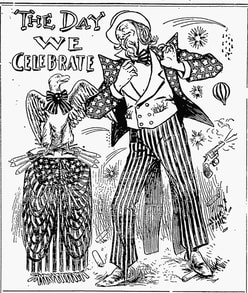 As we embark on the most popular day and week, of summer, I wanted to look back at Frederick, Maryland and its relationship to the July 4th holiday. For those on vacation, and others hosting or attending a friendly barbecue, Independence Day is generally characterized by the other 3 “R’s”: relaxation, reflection and revelry. Some have labeled July 4th, “The Sunday of the Nation.” The word that best sums up the feeling on this day should be contentment—content by having freedom, possessing unalienable rights and just plain being proud to be an American. And many times such as this year, additional contentment comes with having a three-day weekend to boot. It’s ironic that this holiday has roots going back to the specific day in 1776 where the mood of the general populous was one of discontent. The people of Frederick County, Maryland, and countless inhabitants of the other 12 colonies were not pleased with their governance under Great Britain’s King George III, son of our county/city namesake—Frederick Louis, Prince of Wales (1707-1751). 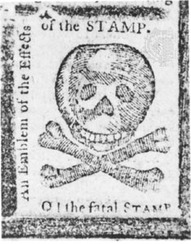 As a matter of fact, discontentment in Frederick County can be traced back to July, 1765 when word had reached America that King George would soon be instituting a tax on stamped paper in the coming fall. This blatant example of “taxation without representation” angered many, but perhaps none more than our famed “12 Immortals,” the county court justices of Frederick County headed by William Beatty. In late November (1765), they repudiated Britain’s Stamp Act and carried on the business of their court without using the newly required stamped parchment. This is considered the first formal protest against the crown by an official governmental body in the colonies. If the Battle of Lexington and Concord is considered “the shot heard ‘round the world,” then the 1765 Stamp Act Repudiation by the Frederick County justices can be considered the first “verbal shot.” If anything else, our lesser heralded “Paper Soiree” helped influence Bostonians to carry out another protest eight years later. This, of course, was the Boston Tea Party of 1773.
 William W. Fleming and his well-marked tobacco haven (circa 1893). William W. Fleming and his well-marked tobacco haven (circa 1893). Interestingly, I found July 4th to be the birthday of Mayor Fleming’s late father, a local physician. Could there be some subliminal reason reaching back into the mayor’s childhood, possibly associated with having to be silent or reverent on this sacred date? Could the mayor have had an aversion to pyrotechnics, or was there a fear of loud sounds? Again, another irony lies in the old adage "Where there’s smoke, there’s fire," as the name Fleming (at the time)was synonymously associated with a popular tobacco and snuff store located adjacent Frederick’s square corner in the first block of West Patrick. This was operated by a William W. Fleming, likely a cousin, but I haven’t been able to attain this relationship. (NOTE: I also am curious as to the familial connection to today’s Fleming Avenue, a very popular locale to spend July 4th.) In essence, this was the 4th of July equivalent of the movie Footloose. Many townspeople were livid, especially wayward teens and ornery children, not to mention more than a few uppity adults. Now in Mayor Fleming’s defense, this particular Fourth fell on a Sunday, aka Lord’s Day. Some decorum needed to be shown churchgoers, because firecracker hijinx was not just something that happened after dusk as we know today. In addition, things had gotten wildly out of hand over the years with the high frequency of firework-related accidents, maimings, etc., especially involving young people. The newspapers over the years could always count on these stories to help fill content. Fire risk was also a reality, and the mayor had been working hard for months on fire-related ordinances and strengthening support for the volunteer fire departments of Frederick. Lastly, who needs people shooting off firearms in town, especially after a long day of celebratory alcoholic libations? 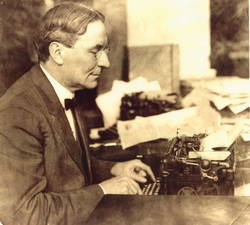 Folger McKinsey, "the Bentztown Bard" wrote for the Frederick News. The Elkton (MD) native gained greater fame with the Baltimore Sun, for which he worked for over 40 years until his death in 1950. Folger McKinsey, "the Bentztown Bard" wrote for the Frederick News. The Elkton (MD) native gained greater fame with the Baltimore Sun, for which he worked for over 40 years until his death in 1950. To the average Joe “Son of Liberty,” this rationale seemed to buck tradition, looking more like an infringement on God-given rights. Isn’t there a Constitutional amendment providing for the right for American citizens to spend Independence Day doing whatever the heck they pleased to show their patriotic devotion to flag and country? The famed "Bentztown Bard" Folger McKinsey wrote in the Daily News another signature "tongue in cheek ditty": "I believe in letting the eagle scream On the glorious Fourth of July; As firmly I believe that mankind, Would perish 'twere not for pie." 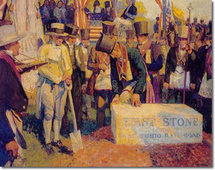 July 4th, 1828 Baltimore & Ohio Railroad groundbreaking ceremony in Baltimore with Maryland's Charles Carroll of Carrollton, the last surviving signer of the Declaration of independence. July 4th, 1828 Baltimore & Ohio Railroad groundbreaking ceremony in Baltimore with Maryland's Charles Carroll of Carrollton, the last surviving signer of the Declaration of independence. Now don’t get me wrong, the good far outweighed the bad when it came to July 4th. Most annual celebrations went off with a bang, and good times were had by all. One of the best took place on July 4, 1828 in which simultaneous groundbreakings were taking place in Baltimore and Georgetown respectively. These included the birth of two legendary transportation lines that would greatly impact Frederick commerce, agriculture and passenger travel. These were the Chesapeake & Ohio Canal and the Baltimore & Ohio Railroad. Both would reach Frederick in 1831. 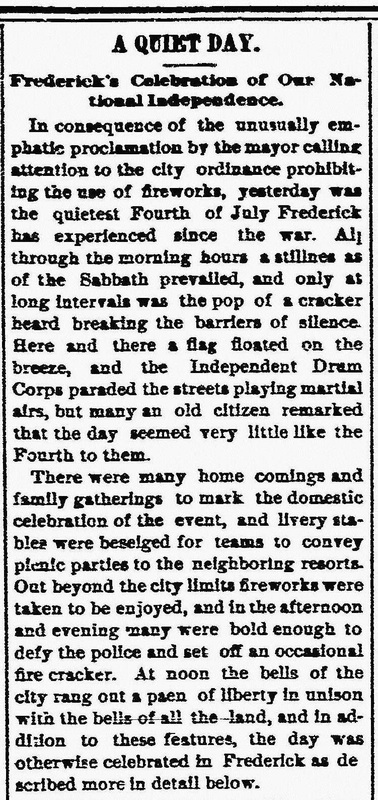 Frederick Daily News (July 5, 1893) Frederick Daily News (July 5, 1893) While many flame-loving residents escaped to surrounding areas to shoot off fireworks and guns, the event at City Hall was well attended, and equally received. The stage was beautifully decorated in red, white and blue, and collection boxes were strategically placed at the theater’s entrance to receive donations for a proposed monument to Francis Scott Key. This would become a reality five years later. Jacob Rohrback, a leading Frederick lawyer, Freemason and member of the Philomathean Society said the following in his speech that July 4th night: “We shall take pride in teaching our children the principles upon which the nation of sovereign states are based, for we must remember that it is our children and our children’s children who are to inherit what comes after us.” That July 4th, Capt. Q. S. J, Beckley and his able corps of assistants of the Frederick Riflemen, celebrated the Fourth in grand style at the Frederick Fairgrounds. Among the amusements held, highlights of the day included a one-mile bicycle race around the track and a baseball game. In nearby Middletown, things were relatively quiet, save for a nice parade through town that afternoon. A like ordinance against explosives had been enforced, but the youngsters took to wearing grotesque masks and waving flags as they took march in the parade with their brethren. After reading an account of a young doctor attending a party in nearby Jefferson, I certainly have a new view on what was considered “fireworks fun” during the period. It appears that this gentleman was lured in by a flirtatious group of young ladies working in tandem with a group of young hooligans. The boys attached, and lit, a bundle of fireworks to the physician’s frock coat. Luckily he escaped injury, but I can surely think of safer and less stressful ways to celebrate the independence of our nation. Luckily things got back to normal, "July 4th wise" when Mayor Fleming left office in 1895. So in closing, I wish you and yours a very happy Fourth! But please think twice before shooting off your bottle rockets, cakes, and Roman candles this holiday as the ordinance is still in effect within the corporate boundaries of Frederick. You can still enjoy sparklers without repercussion, both literally and figuratively. While we can demonstrate the proper spirit of patriotism in many ways, take a few minutes to remember why we continue to have the right to celebrate such an incredible annual event and explain this to a young person. Not to mention “the self-evident truths” that most of us get a paid day off work and are entitled to all the hot dogs, hamburgers and apple pie we care to eat. Talk about being content. Now let's make some noise for all Frederick County's patriots, past and present! History Shark Productions presents: Chris Haugh's "Frederick History 101" Are you interested in Frederick history? Want to learn more from this award-winning author and documentarian? Check out his latest, in-person, course offering: Chris Haugh's "Frederick History 101," with a 4-part/week course on Tuesday evenings in late August/early September, 2023 (Aug. 22, 29 &Sept. 5, 12).These will take place from 6-8:30pm at Mount Olivet Cemetery's Key Chapel. Cost is $79 (includes 4 classes).
In addition to the lecture class above, four unique "Frederick History 101 Walking Tour-Classes" in Mount Olivet Cemetery will be led by Chris this summer. These are available for different dates (July 11 & 25th, Aug. 8th & 23rd). Cost $20 For more info and course registration, click the button below! (More classes to come) 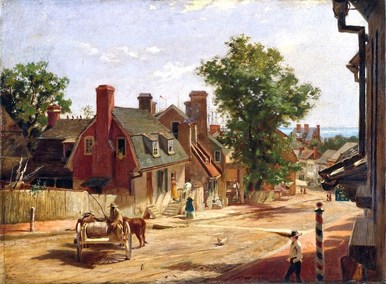 Francis Blackwell Mayer (American painter, 1827-1899) "Old Annapolis " Francis Blackwell Mayer (American painter, 1827-1899) "Old Annapolis " “ He was a humane, generous and charitable Gentleman, and a great Promoter of the Public Good, by encouraging all Kinds of Industry, towards which he largely contributed, and was very Instrumental in settling the back Parts of this Province.” -Obituary of Daniel Dulany the Elder The Maryland Gazette, December 6, 1753 We have Daniel Dulany the Elder to credit for the establishment of both Frederick City and County. For nearly a century after the Calvert expedition established the Maryland colony in 1634, the region including the Monocacy River Valley was described as “a howling wilderness.” As a land speculator, well-versed in provincial government politics, Dulany saw the tremendous opportunity that existed in settling the backlands of the Maryland province, both for himself and the colony. Daniel Dulany the Elder was born in 1685 in Queens County, Ireland. He came to America with two brothers in 1703 after abandoning studies at Dublin’s Trinity College. Dulany arrived in Port Tobacco as an indentured servant and was purchased as a laborer for a four-year term by George Plater, an influential Maryland planter and attorney. Dulany’s service as a law clerk prepared him for a legal career and introduced him to the colony’s aristocratic planters’ society. He was admitted to the Charles County bar in 1709 and would continue his practice of law in Prince George’s County and England before moving to Annapolis in 1720. In 1721, voters chose Daniel Dulany as a councilman and a year later was sent him to serve in the lower house of Maryland. He was appointed attorney general (1721-25) and commissary general(1721-24, 1734-53) by Gov. Charles Calvert (fifth Lord Baltimore) and was involved in the provincial government under Gov. Samuel Ogle. Through investments in land, slaves and an iron foundry, Dulany amassed a great fortune. With the capital means to back himself, Daniel Dulany became one of the country’s first land developers, having bought several parcels in Western Maryland for the purpose of gaining profit through resale and renting. Dulany saw the importance of taming the western lands for the benefit of growing the colony. He and others in Annapolis focused on what was happening within the Commonwealth of Pennsylvania where William Penn was having great success in attracting Germans to settle the lands west of Philadelphia. Dulany copied this strategy and began to induce Germans, living in Europe and Pennsylvania, to immigrate to Maryland’s Piedmont and mountain lands, particularly the vicinity of the Monocacy Valley, at the time considered Prince George’s County. This scheme worked according to plan. 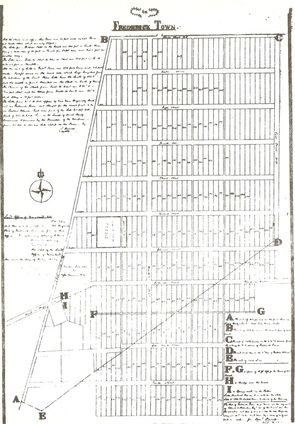 Samuel Duvall's early plat of Frederick Town (c. 1782) Samuel Duvall's early plat of Frederick Town (c. 1782) At the urging of six German settlers, Dulany purchased a large tract in early 1744 named Tasker’s Chance from business associate, friend and neighbor, Benjamin Tasker. A year and a half later in September 1745, he had part of Tasker’s Chance surveyed in an effort to lay out a market town on both sides of Carroll Creek. Dulany named his proposed settlement Frederick Town. He is said to have named the town in honor of Frederick Calvert, the 12-year-old son of Charles Calvert -Lord Baltimore. But it is possible the name was a compliment to Frederick Lewis, Prince of Wales, who was the son of George II and father of George III. Frederick Lewis was an important figure in public affairs in England and heir apparent to the throne at the time of the settlement of Frederick Town. The Calverts may have been eager to please him. In 1745, Dulany assigned a group of commissioners to design the new western town. A main road running from Pennsylvania to Virginia already existed and Dulany had the town divided into 340 lots, laid out north to south with Patrick Street as the principal thoroughfare. A few people bought their own lots, paying two pounds, 8 shillings with an annual ground rent of one shilling for 21 years and two shillings a year thereafter. The majority of residents leased lots, paying Dulany a quit-rent of a shilling sterling. 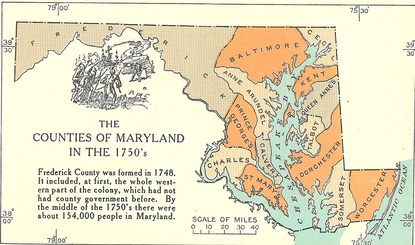 To further increase value to his new town, Dulany successfully lobbied the Maryland General assembly to create a new county in 1748. Frederick County was carved out of Prince George’s County and consisted of the present day counties of Washington, Allegany, Garrett, Montgomery and Carroll. Frederick Town would become the county seat, launching its importance as home to the county courts and all legal matters and land transactions. By 1750, Frederick Town had become the Maryland colony’s largest town and a legitimate center for trade, commerce and politics on the western frontier. Daniel Dulany died on December 5, 1753 and was laid to rest with wife Rebecca next to St. Anne's Episcopal Church, located within the famed Church Circle in Annapolis (adjacent the Maryland State House). Happy "Father's Day" just the same Mr. D., and thanks for our wonderful city and county! Author's Note: In a town full of its share of monuments and memorials, Daniel Dulany is proudly remembered in Frederick, the town he founded, by the short, two-block avenue that bears his name....and is also, unfortunately, misspelled (Dulaney).
As I write this piece, I can't seem to get the song "The Things We Do For Love" out of my head. This was a smash hit by the British band 10cc in late 1976/early 1977. You remember it don't you?.... Too many broken hearts have fallen in the river Too many lonely souls have drifted out to sea, You lay your bets and then you pay the price The things we do for love, the things we do for love And I loved this song at the time, ironically being "10" years old and possessing a keen interest in pop music at the time but not as much as the band's earlier hit "I'm not in Love" (1975).... but I digress. 10cc really has nothing to do with this week's blog, but enormous sacrifices for love certainly do, as can be evidenced in the chorus of "The Things We Do for Love": Like walking in the rain and the snow When there's nowhere to go And you're feelin' like a part of you is dying And you're looking for the answer in her eyes You think you're gonna break up Then she says she wants to make up A few years ago, I came across an article in the archives of the New York Times newspaper from July 17, 1881. It is a uniquely interesting news article about a Frederick woman named Anna Josephine Sifford (1844-1928) and "love and loss," but not the kind of loss you think. Nannie (as Anna was called) got the guy in the end, but her losses became great gains for the community. 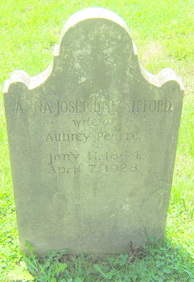 Grave of Anna Sifford Pearre Grave of Anna Sifford Pearre As is usually the case with the newspapers of the day, especially with reporting on stories picked up from other newspapers, spelling errors and some inaccuracies occur. Estimates of the estate were reported to be at least $100,000. But Anna married well, so no need to worry about her making a bad financial decision. Husband Aubrey had served in the Civil War as a Confederate officer, and was quite successful in the business realm. They would reside in downtown Baltimore in the prestigious Bolton Hill neighborhood (about 1.5 miles north of the Inner Harbor) and had summer retreats outside of town such as Glyndon, just northeast of Reisterstown in northwest Baltimore County and Rose Hill near Pikesville. Col. and Mrs. Pearre lived rich lives both literally and figuratively. He passed in 1915, and she 13 years later in 1928. Both are buried in St. Thomas Episcopal Church Cemetery in Owings Mills. 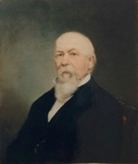 John Loats (1814-1879) John Loats (1814-1879) Josephine left behind the home built by early Frederick physician (and War of 1812 veteran)John Baltzell. Built in 1834, this dwelling is located at 24 East Church Street, and is the current day home of the Historical Society of Frederick County. The house had passed to Alexander B. Hanson in 1854, then to successful businessman/farmer/philanthropist John Loats in 1871. Loats bought the property for $14,000. And speaking of property, the John Loats estate was located directly south of the City of Frederick, and in particular south of the original Maryland School for the Deaf property. I do believe this property included lands on both sides of the Georgetown Pike (MD85) and this included the ground that Harry Grove Stadium sits on today. Loats passed in 1879, but is said to have always held a special place in his heart for Anna J. Sifford Pearre, his sister-in law by marriage. Thanks to the Pearre marriage, the property would soon become the Loats Female Orphan Asylum of Frederick City. It would serve in this capacity until 1959 and a contested legal battle ensued as "40 proven heirs" were making claim on the property. The Historical Society of Frederick County would take over in 1959, and have been here at this location ever since. And now for your listening (and viewing) pleasure:
https://www.youtube.com/watch?v=DbAbHsTgxBM 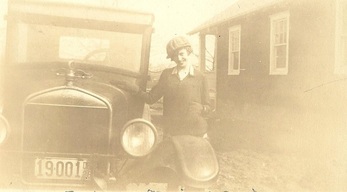 The author's maternal grandmother, Alice Galloway (ca.1928) The author's maternal grandmother, Alice Galloway (ca.1928) My boys and I had a recent conversation during dinner in which they asked me about important inventions that I have witnessed over my lifetime. Possessing a college degree in Communications, I have marveled at the major advancements in my field of study since I graduated in 1989. Technological advances have definitely made the world an even smaller global community than that professors told us about three decades ago. Household computers, the internet, digital video recorders and smartphones top the list. The boys and I got talking about different eras in history and what my ancestors likely experienced, and what they would have reported to us should they had been part of this particular dinner conversation. We looked at things that evolved over the lifetimes of my parents, grandparents, great-grandparents, and great-great-grandparents. These included overarching achievements such as the advent of machines during the industrial revolution period, public improvements such as street paving and lighting, household commodities such as electricity and indoor plumbing, transportation innovations featuring the shift from horse and buggy to the automobile, (not to mention the local possibilities afforded by the interurban trolley and nationally/internationally via the airplane, weaponry advances with various wars, toys and games, and food storage/cooking aids (refrigerators, ovens, toasters, barbecue grills, microwave ovens, ice makers, etc.). 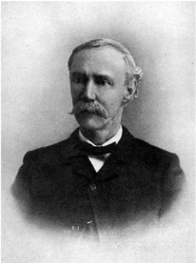 Inventor Extraordinaire, McClintock Young, Jr Inventor Extraordinaire, McClintock Young, Jr It’s always been important to me too use Frederick City and County for context when looking at the impact of inventions and innovations that swept our country. In the same manner, Frederick County has had its share of important inventors and innovators who helped change the nation. Off the top of my head, two individuals of note stand out immediately. I have had a familiarity with both gentlemen in the process of past research with documentary projects. These are McClintock Young of Frederick and Thurmont’s Richard O’ Toole. McClintock Young (1836-1913) was the holder of over 100 patents over his lifetime, one of which was for the creation of an automatic “friction match”-making machine (sold to the Diamond Match Company) in 1870. Nearly 30 years later (1899), Young was responsible for a revolutionary brush producing technology which added to the heightened success of Frederick’s Ox-Fibre Brush Company. His achievements were honored more recently by having a local distillery named for him. During this same time period, Richard O’Toole (1848-1918) busied himself with improving life’s lot. O’Toole hailed from Mechanicstown, a fitting name for a place full of tinkerers and experimenters. This was the original home of “great invention” in Frederick County. It was here in the 1830’s that America’s first friction match was invented by Jacob Weller, BS (blacksmith) and son Joseph sometime in the 1830’s. Three score (60 years) later, about the time of a town name change to Thurmont (another great “invention” credited to Catoctin Clarion newspaper publisher Charles E. Cassell), O’Toole received a patent for inventing the American Electric Magnetic Crossing Signal for protecting highway crossings of railroads. 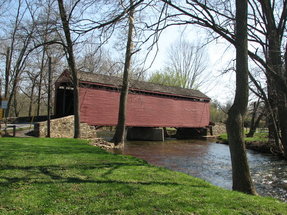 Loy's Station Covered Bridge spanning Owens Creek near Rocky Ridge (MD) Loy's Station Covered Bridge spanning Owens Creek near Rocky Ridge (MD) His first patent was obtained in 1892, with one of Richard O’ Toole’s closest business associates having strong connections within the industry. Irvin W. Loy began a storied career with the Western Maryland Railroad in 1875 and quickly rose up the ranks. Loy (1846-1914) was a talented designer and architect who was head of the maintenance department for the railroad. Over his tenure, he built many bridges for the Western Maryland line, and would be responsible for the development of Pen Mar Park in nearby Cascade (MD). Loy built a fine residence called “Glenhurst” in Mechanicstown/Thurmont, helped design the roof of the former Thurmont Town Hall, and would have a nearby rail stop named for him—Loys Station. Today, this locale is better known for its covered bridge. 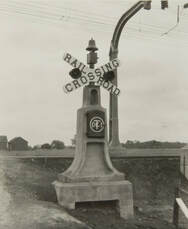 Back to Richard O’Toole, his American Signal Company attracted investors fast, and soon his Godsend device was being installed by railroads all over the country and world. His main office at one time was moved to Baltimore, 100 West Fayette Street. Unfortunately, the company was undercapitalized, big city investors pulled out and the company disbanded before reaching its full potential. Mr. O’Toole settled into a humble life back in Thurmont and became an expert in auto-chromatic photography. He is credited with making the first panoramic view of Thurmont. He also specialized in photographing dead people. A few years ago while shuttling through microfilm in C.Burr Artz Library’s Maryland Room, I came across a local inventor that I was not familiar with—William M. Lease. I suddenly marveled at an article found in the June 29th 1901 edition of the Daily News. Due to its length, and scientific complexity, I was inclined to make a copy and had to read more than once to understand the spirit of Lease’s invention. On June 11, Lease, a Mount Pleasant native now living in Baltimore, was given a United States patent (Patent No. 676,193) for his “Pleasure-Railway.” He would also receive a like patent (No. 135710) from the Deutchen Reiche (German Empire 1871-1943). The US patent for the “Lease Spheroid Pleasure Wheel” reads: "This invention relates to the means for the transportation of freight or passengers from place to place; and its object is to provide a novel construction of a monocycle car movable upon a single rail and comprising a suitably large wheel within which is suspended the car-body and motor for driving the wheel." Basically, this colossal monocycle featured plans for a 40-foot wheel equipped with 30 total baskets, each carrying four passengers. Mr. Lease boasted that his invention would change transportation forever, allowing a traveler to cross the continent in one day’s time. Read it for yourself: 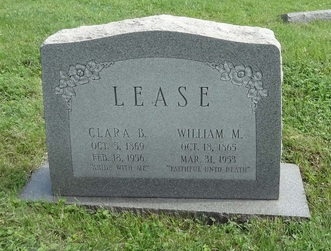 Luckily, Mr. Lease didn’t quit his day job as a postmaster. He would never see the “Pleasure Wheel” come to fruition. However, he likely did see glimmers of his creation utilized as the premise for carnival amusement rides. I guess you could say he was partially successful, in a “round-a-bout” way. William M. Lease continued out his life working for the US Postal Service, a career that spanned 43 years. He passed away in 1953 at the age of 87 and is buried in Baltimore’s Mount Olivet Cemetery. History Shark Productions presents: Chris Haugh's "Frederick History 101" Are you interested in Frederick history? Want to learn more from this award-winning author and documentarian?
Check out his latest, in-person, course offering: Chris Haugh's "Frederick History 101," with a 4-part/week course on Tuesday evenings in late August/early September, 2023 (Aug. 22, 29 & Sept 5, 12). These will take place from 6-8:30pm at Mount Olivet Cemetery's Key Chapel. Cost is $79 (includes 4 classes). For more info and course registration, click the button below! (More courses to come) |
AuthorChris Haugh Archives
February 2024
Categories |
Proudly powered by Weebly

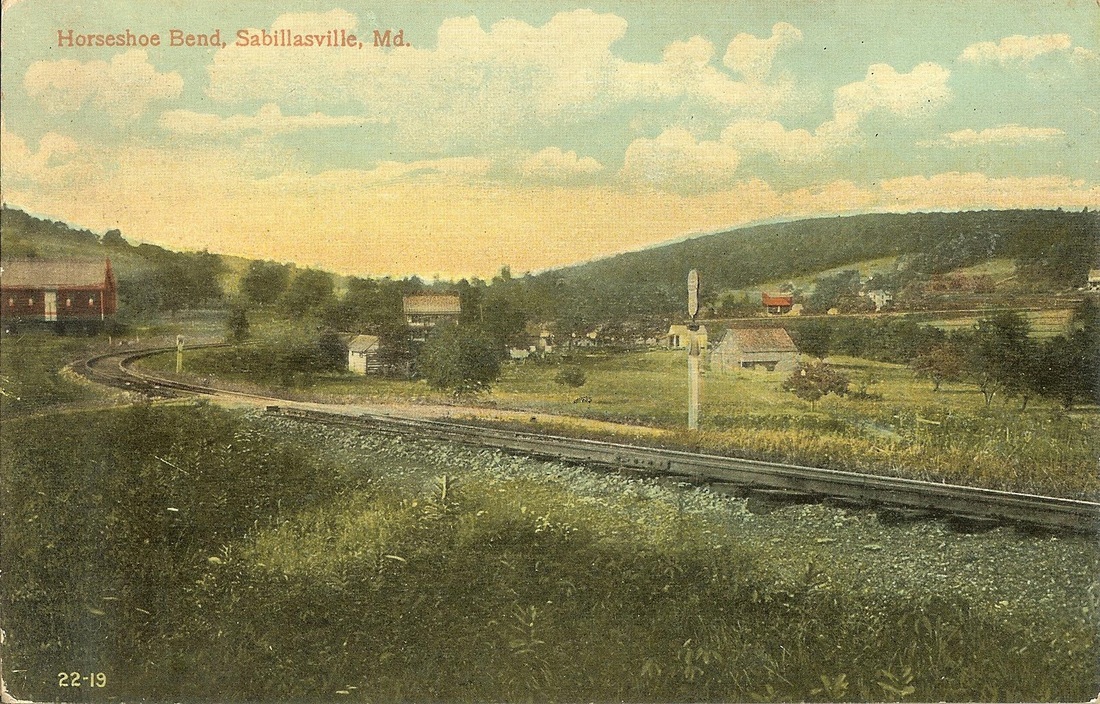
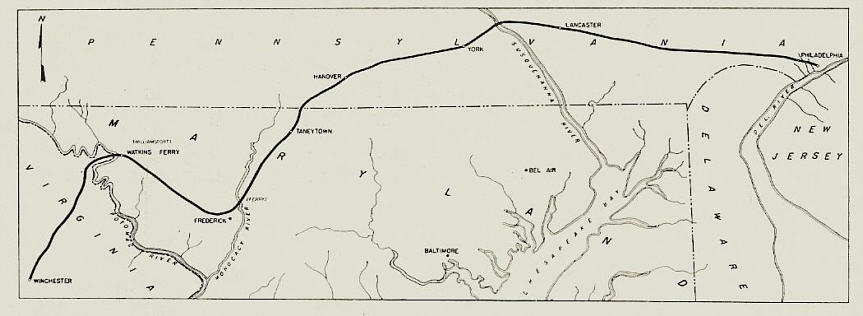
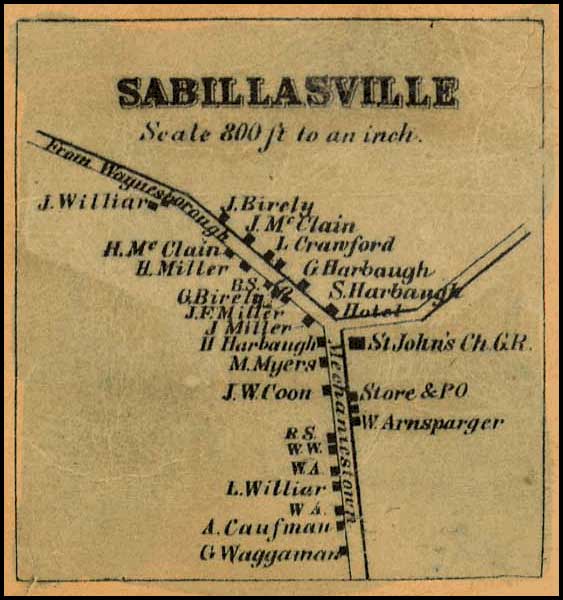
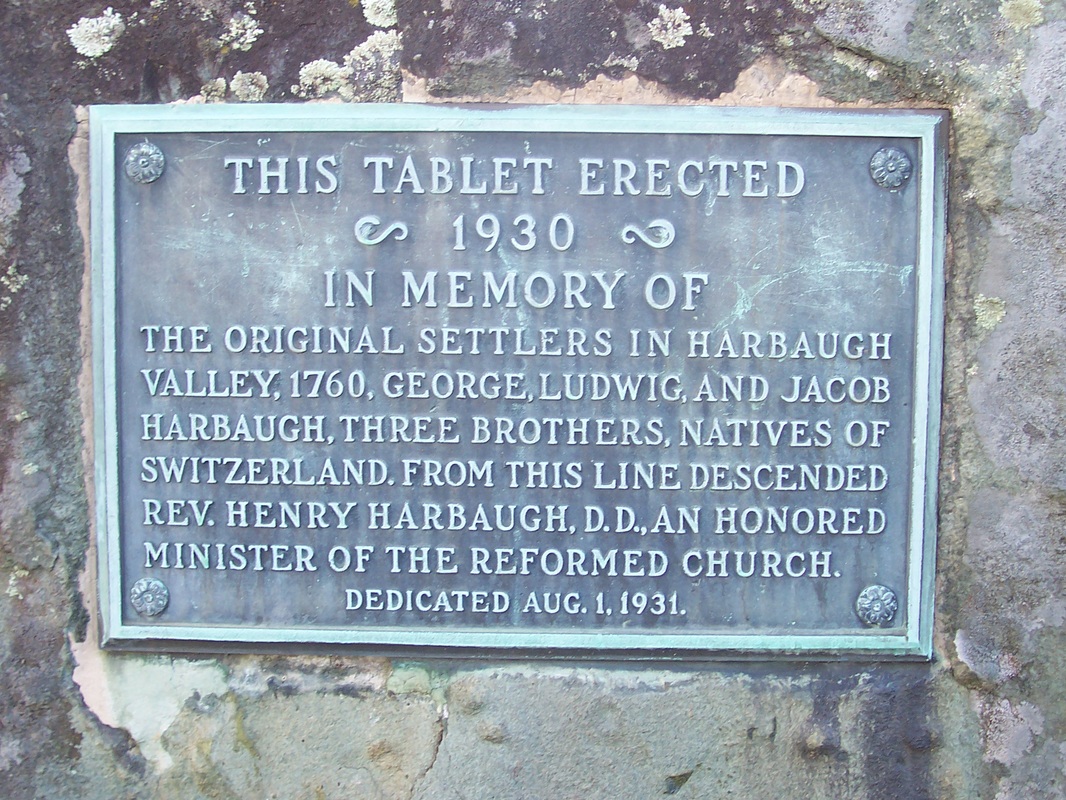
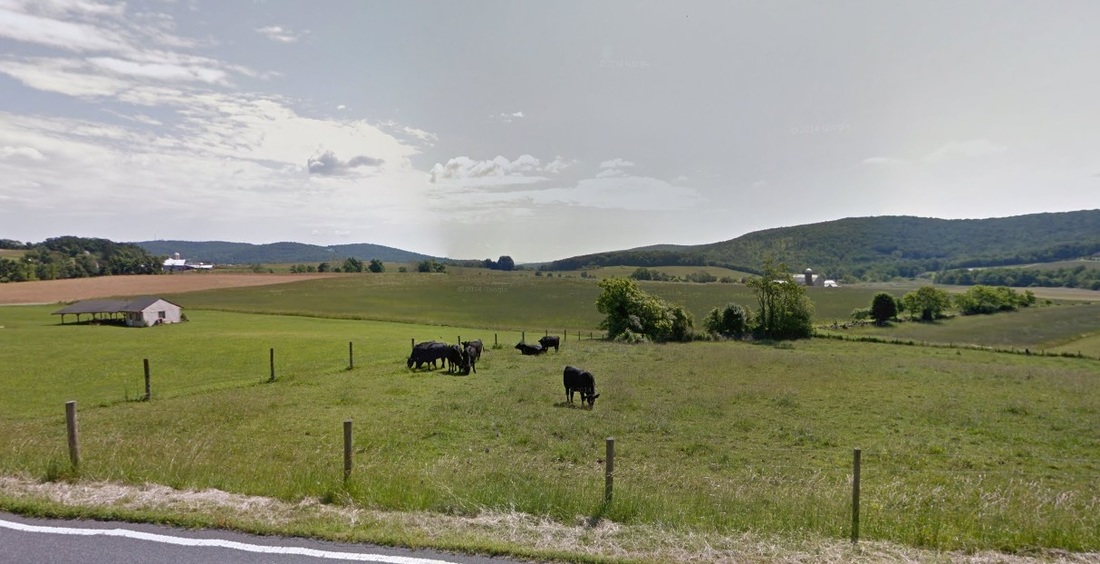
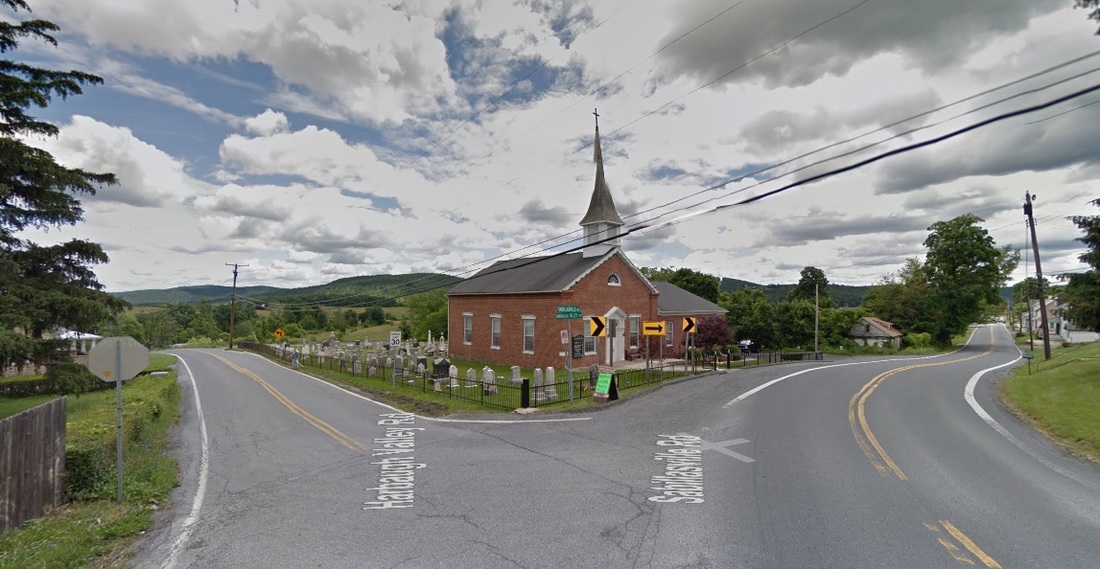
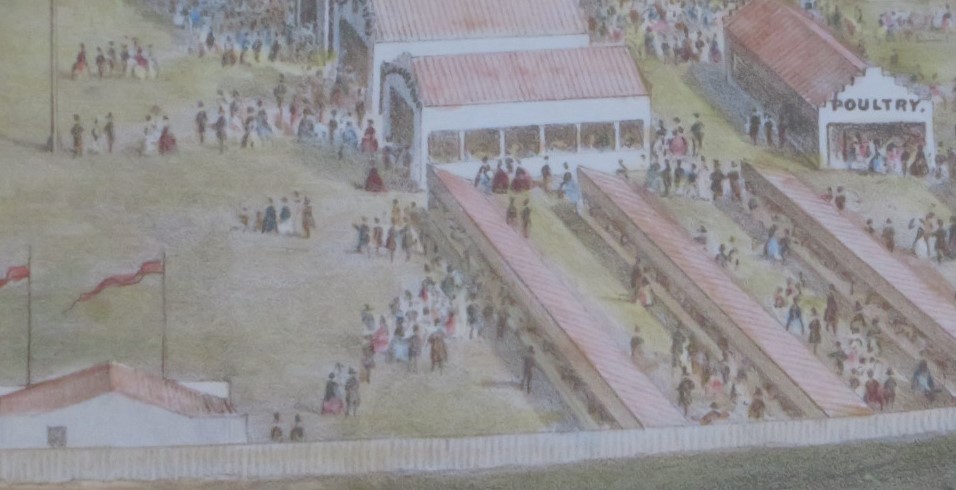
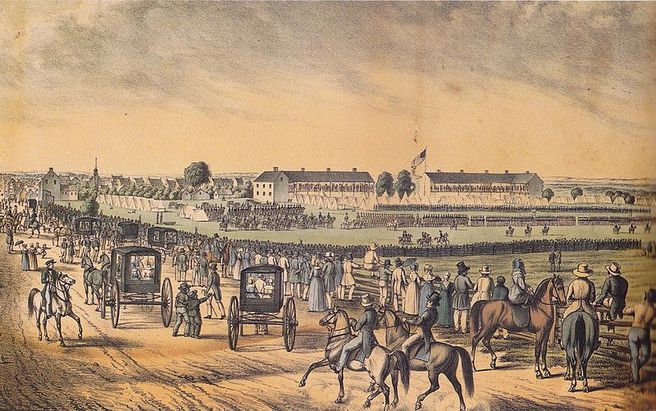
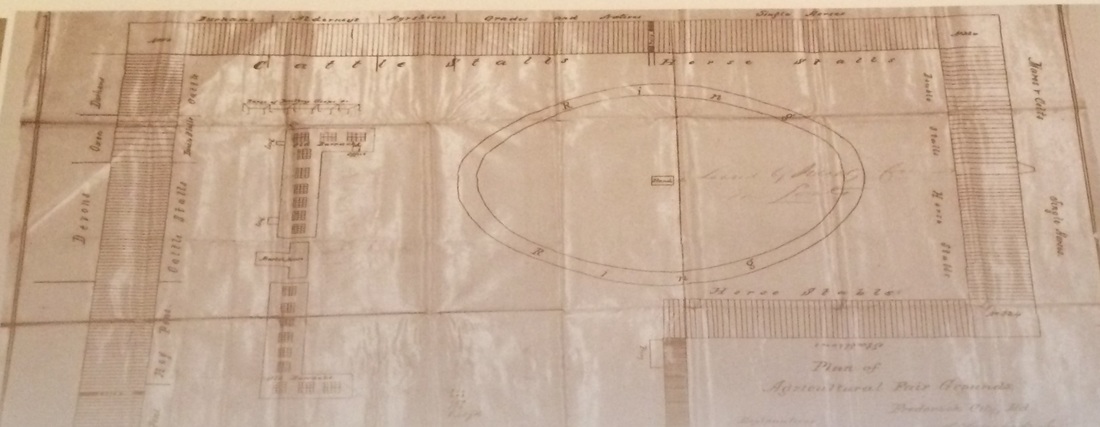
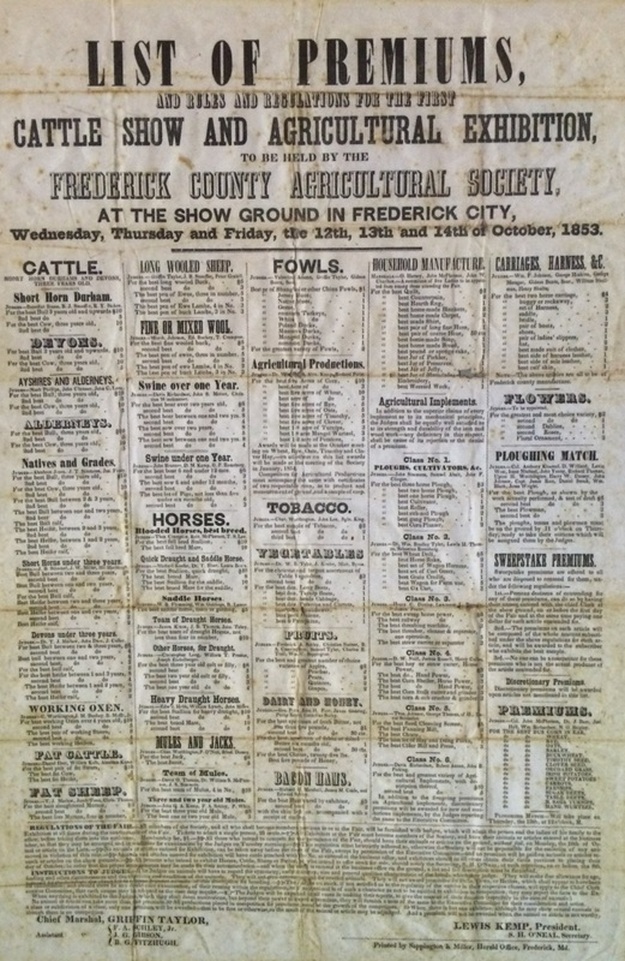
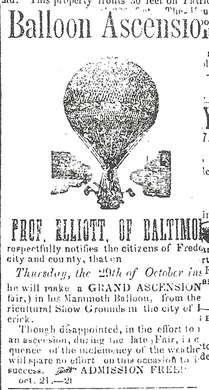
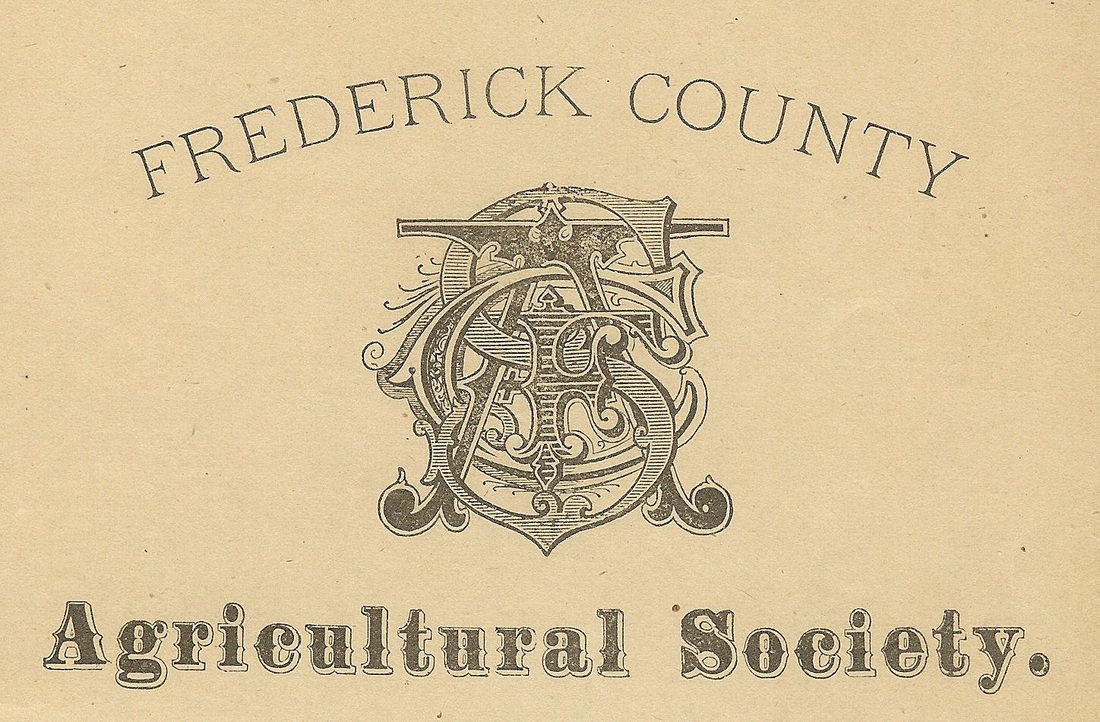
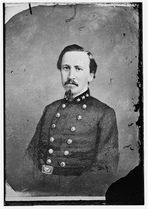
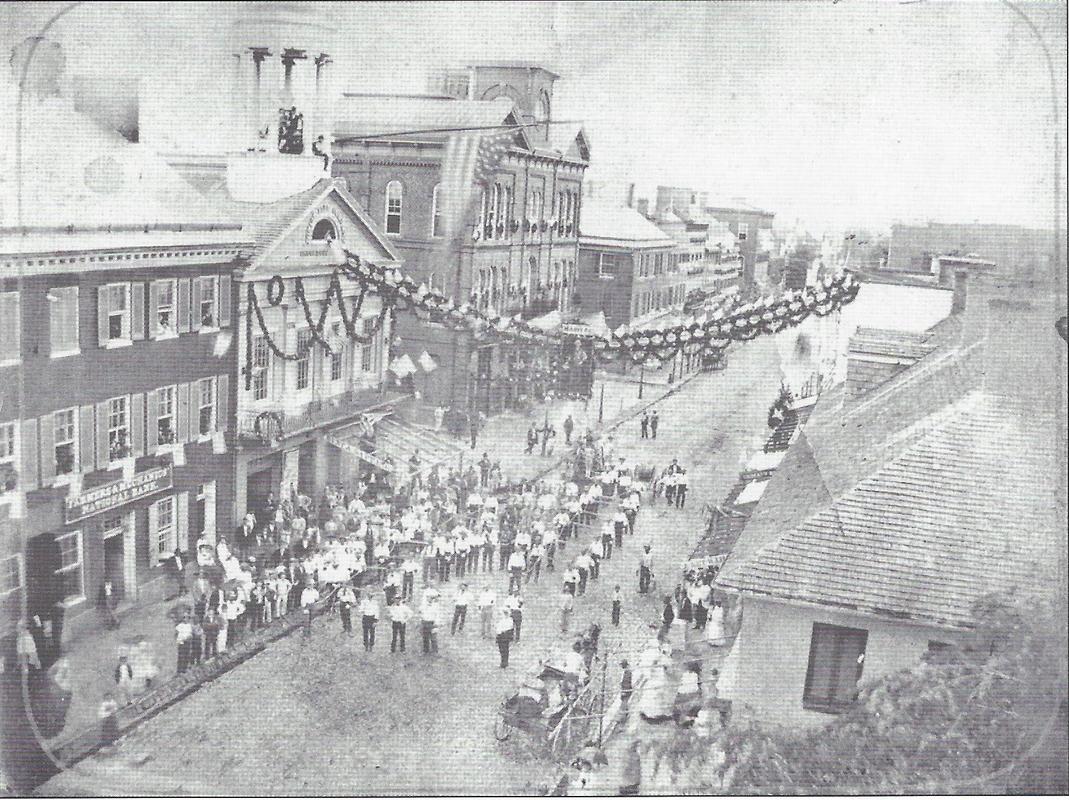
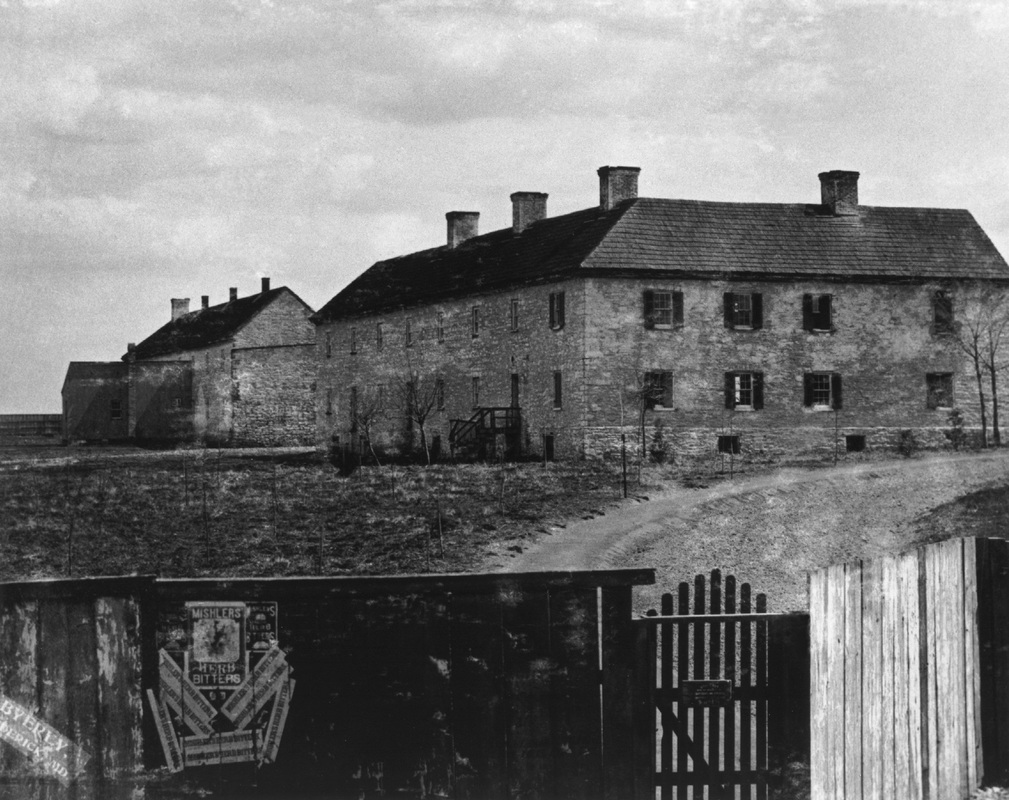
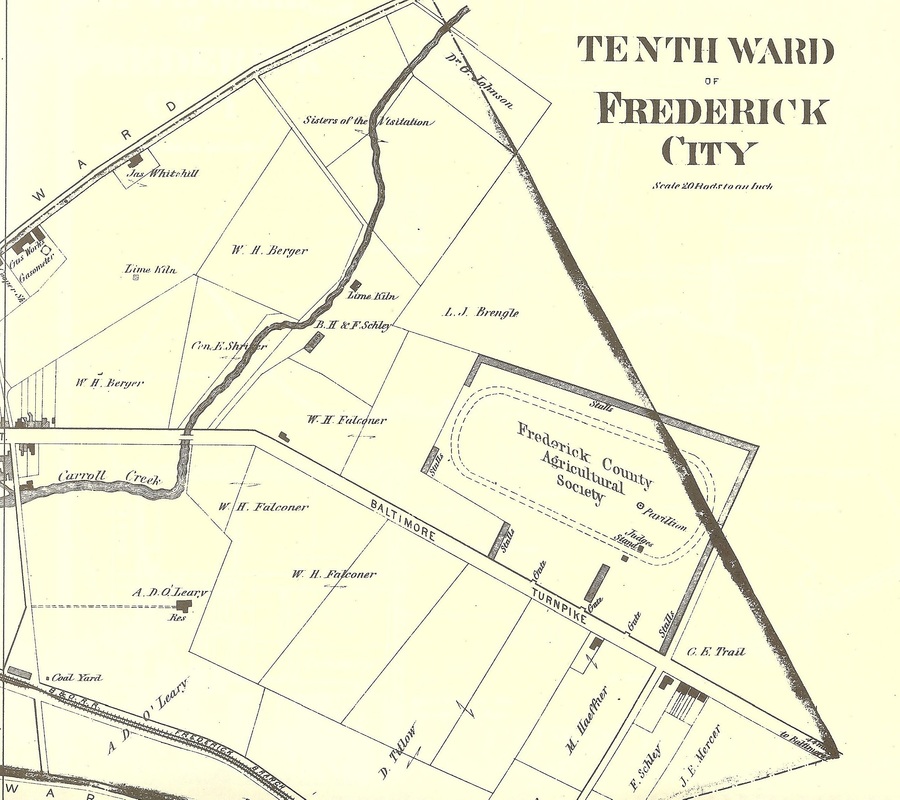
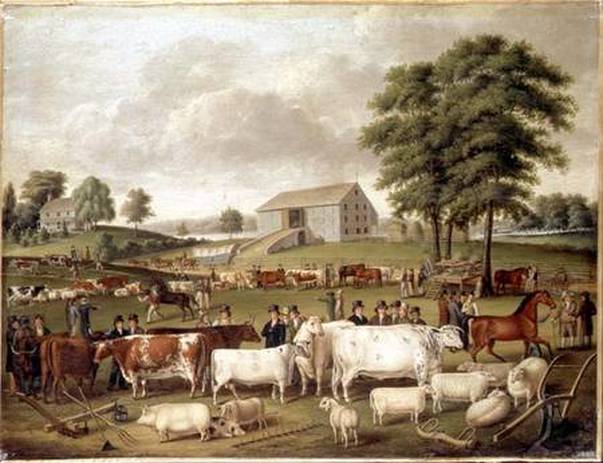
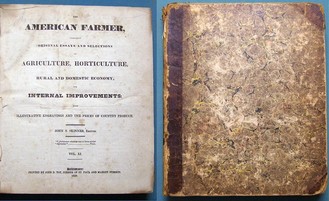
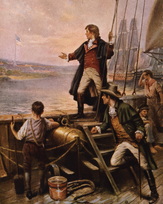
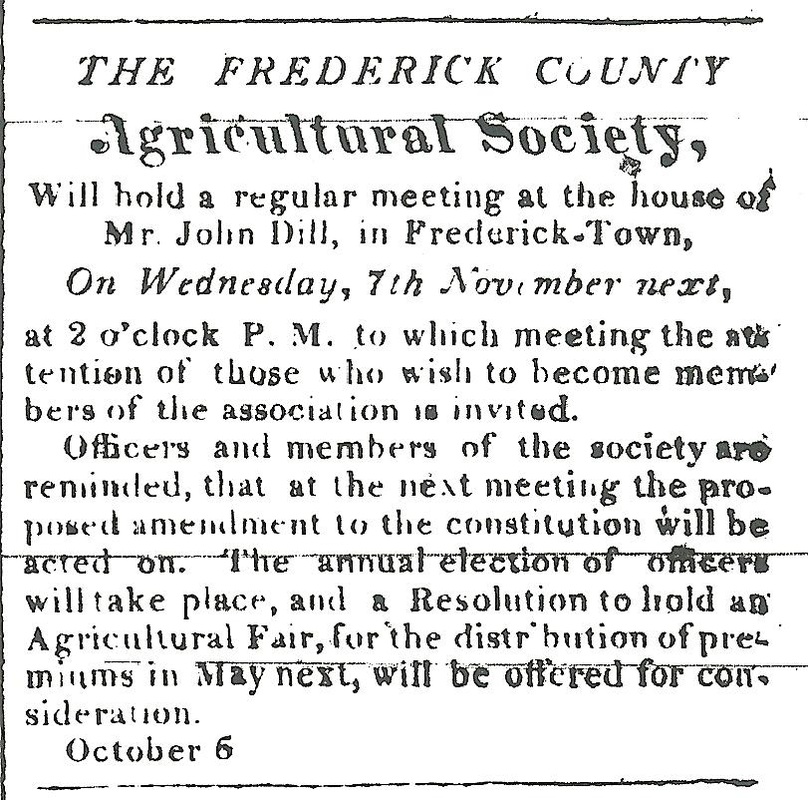
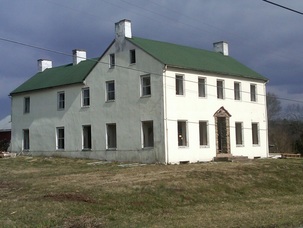

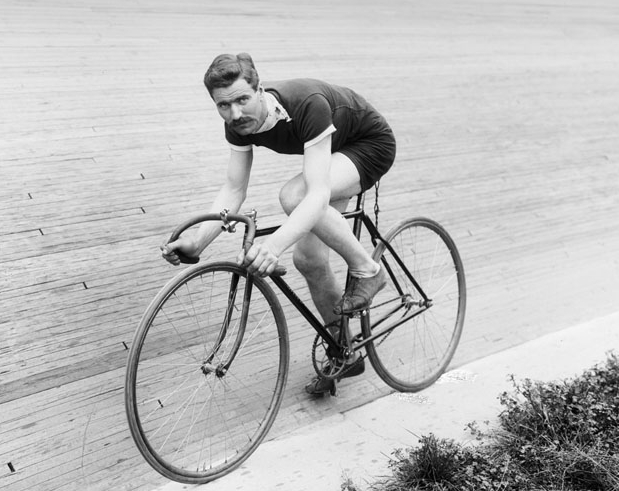
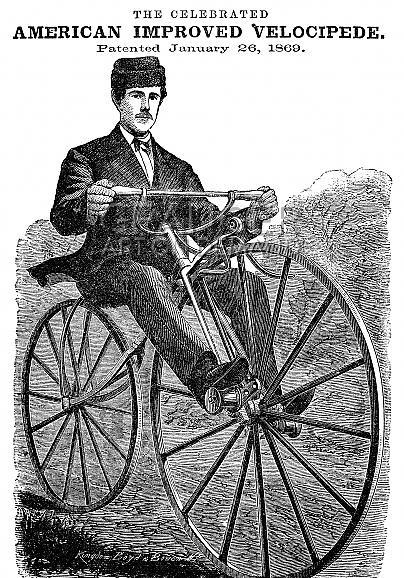
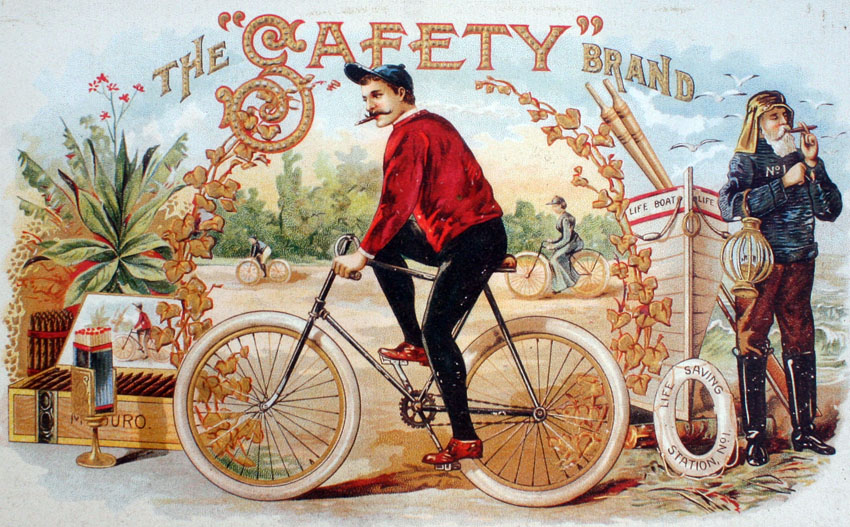
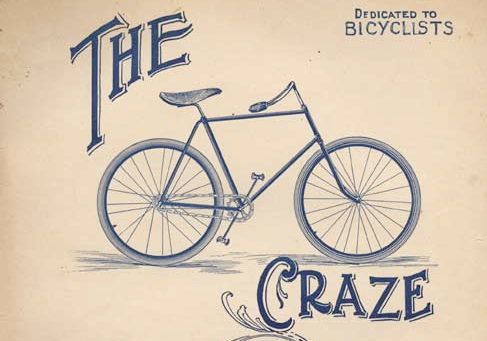
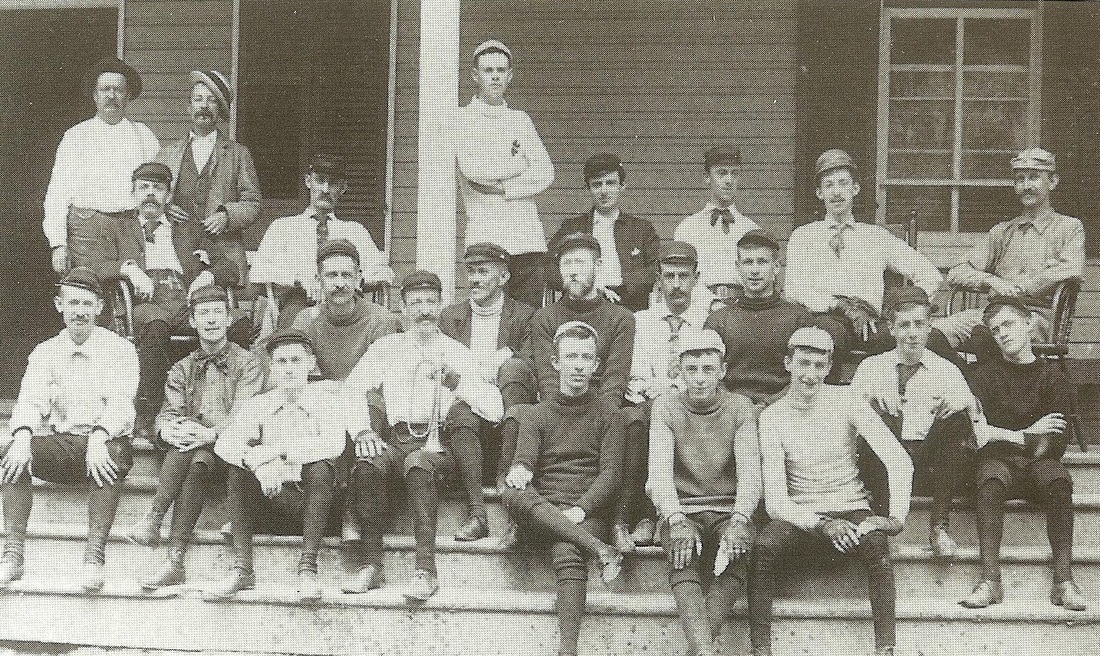
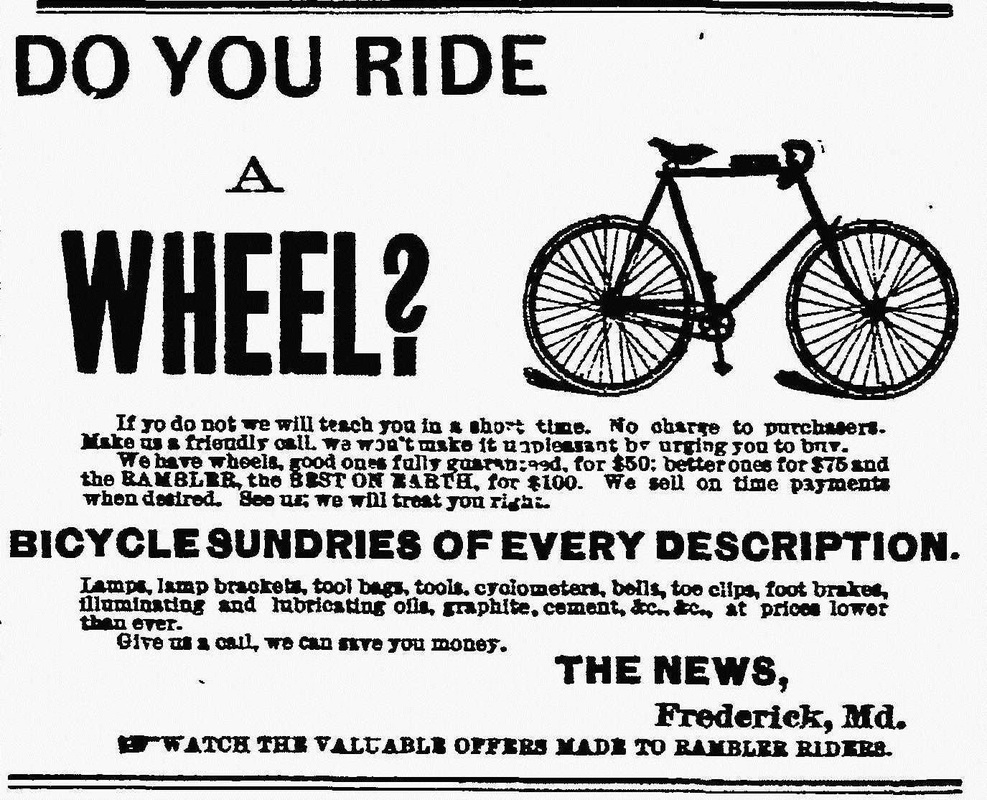
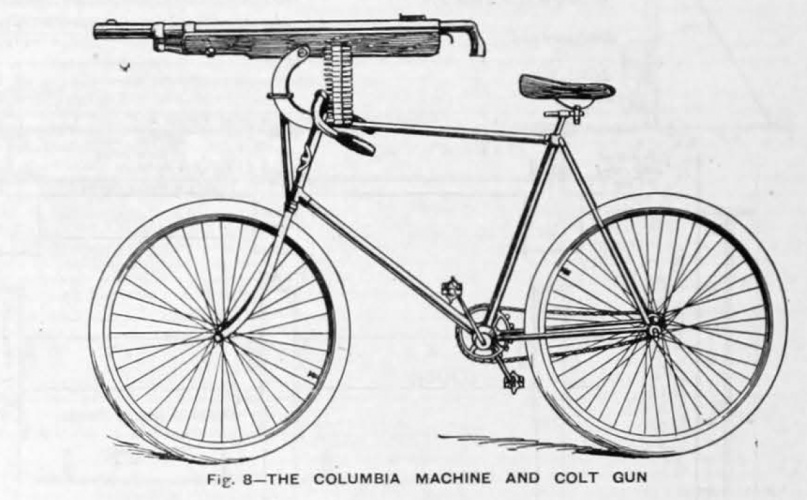
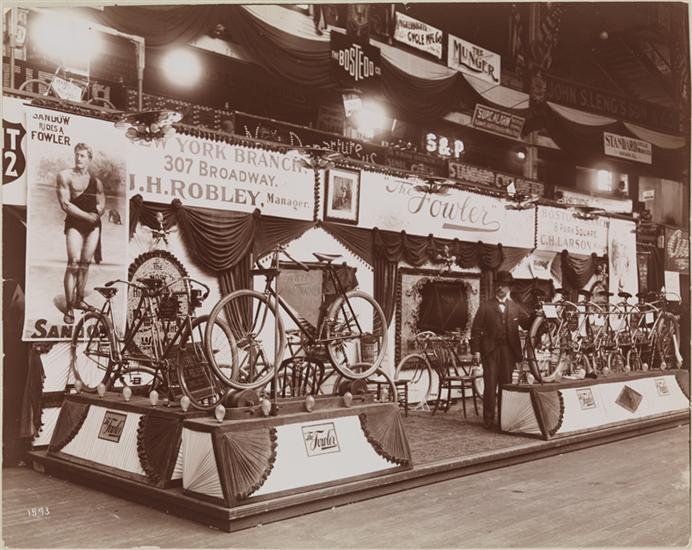
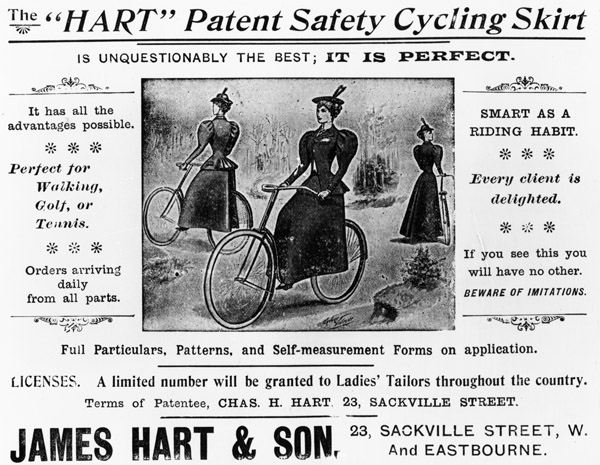
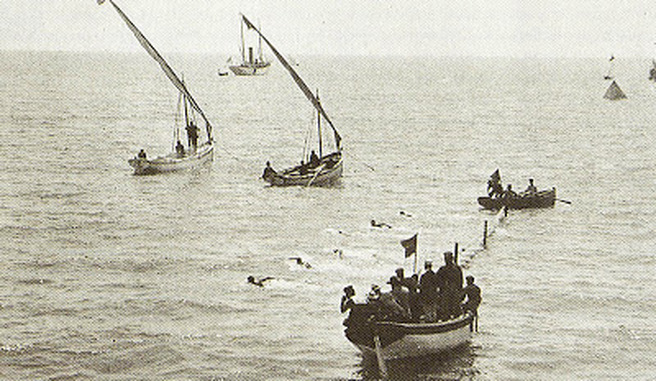
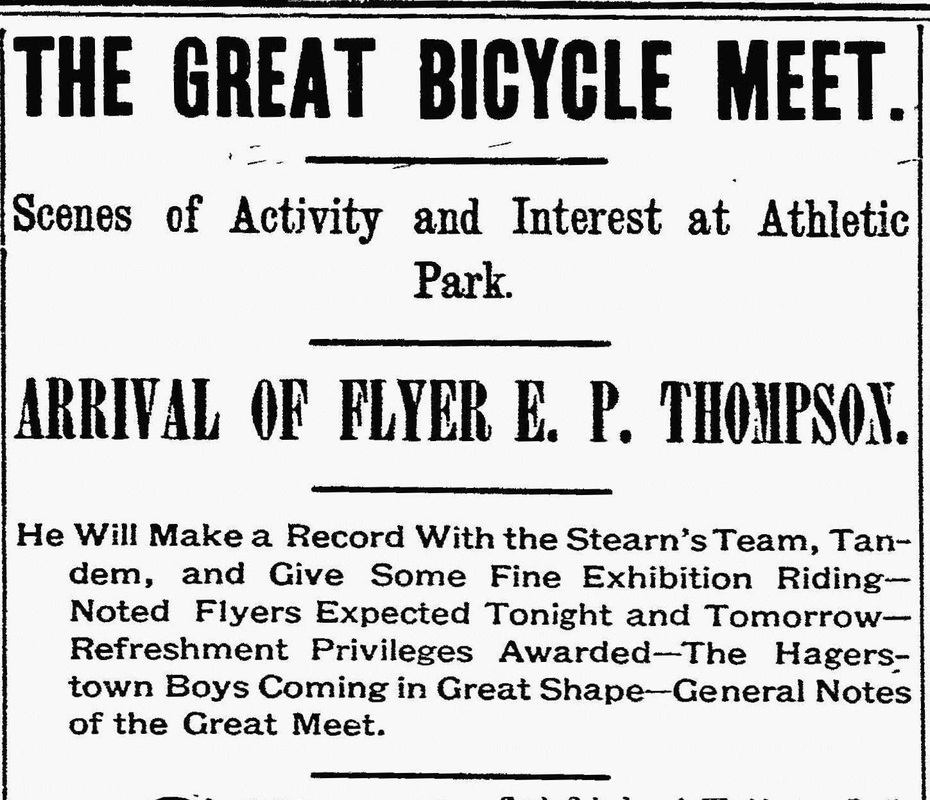
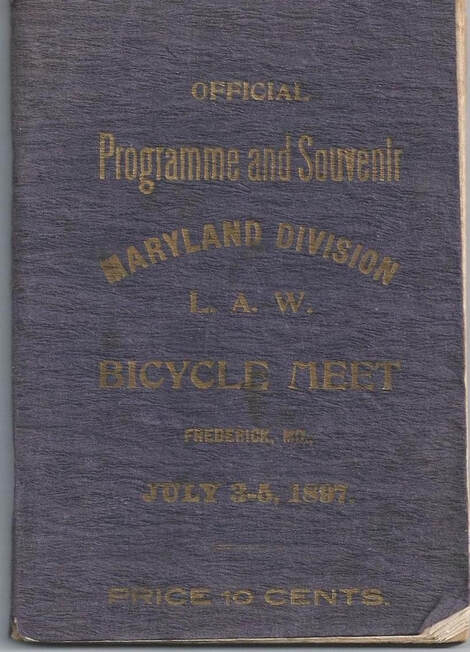
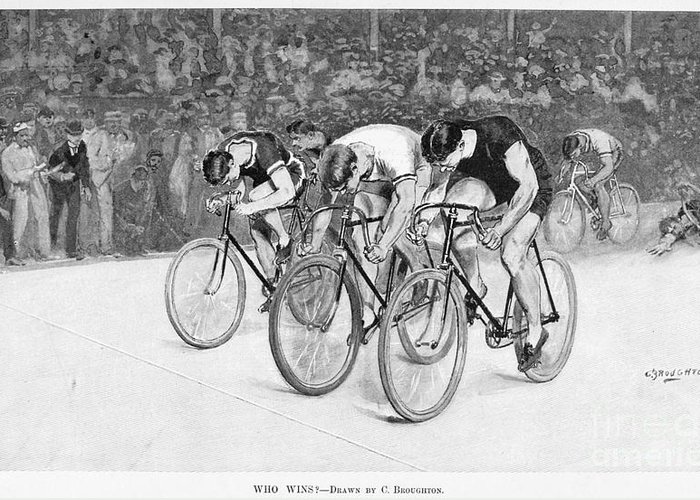
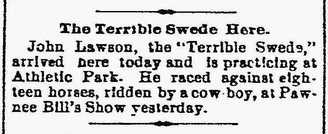
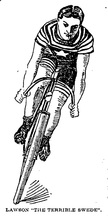
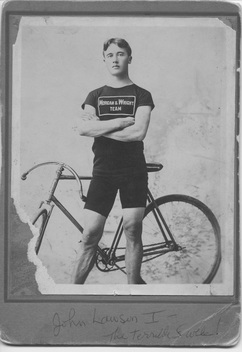
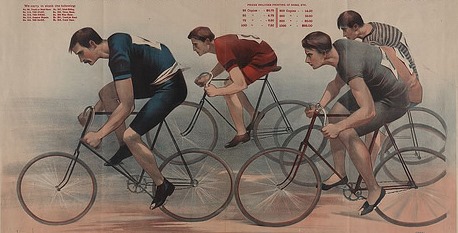
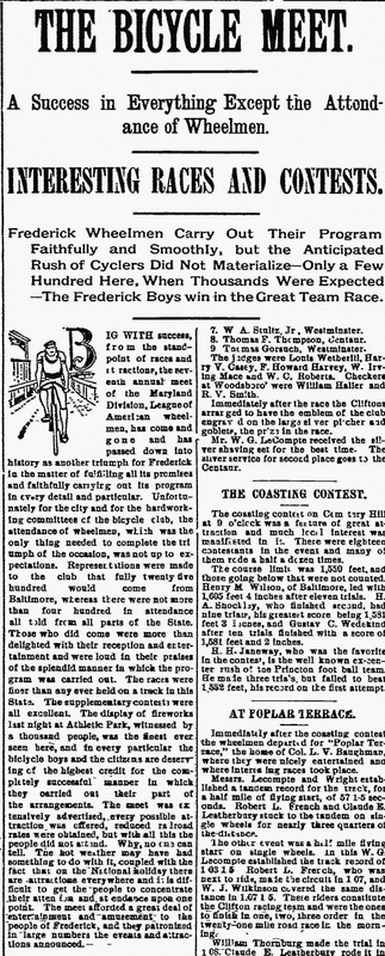
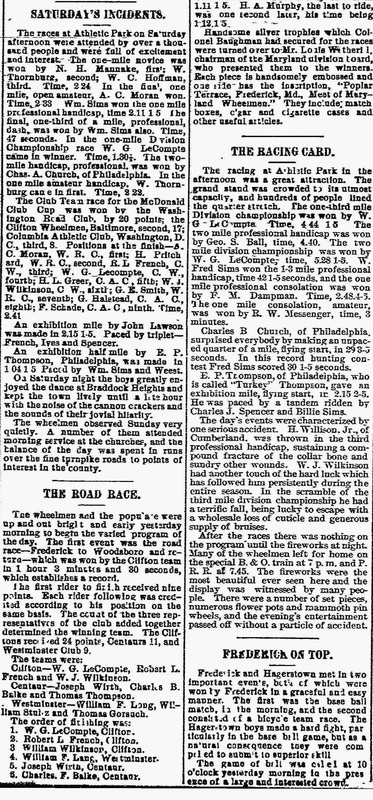
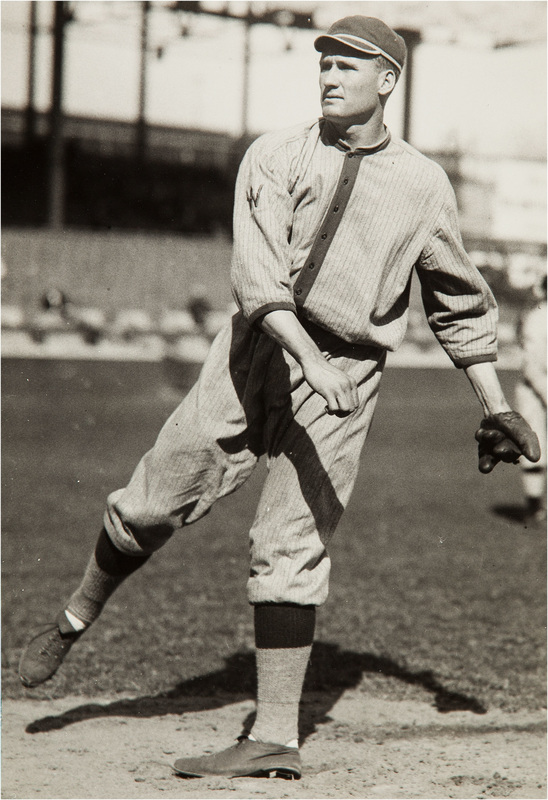
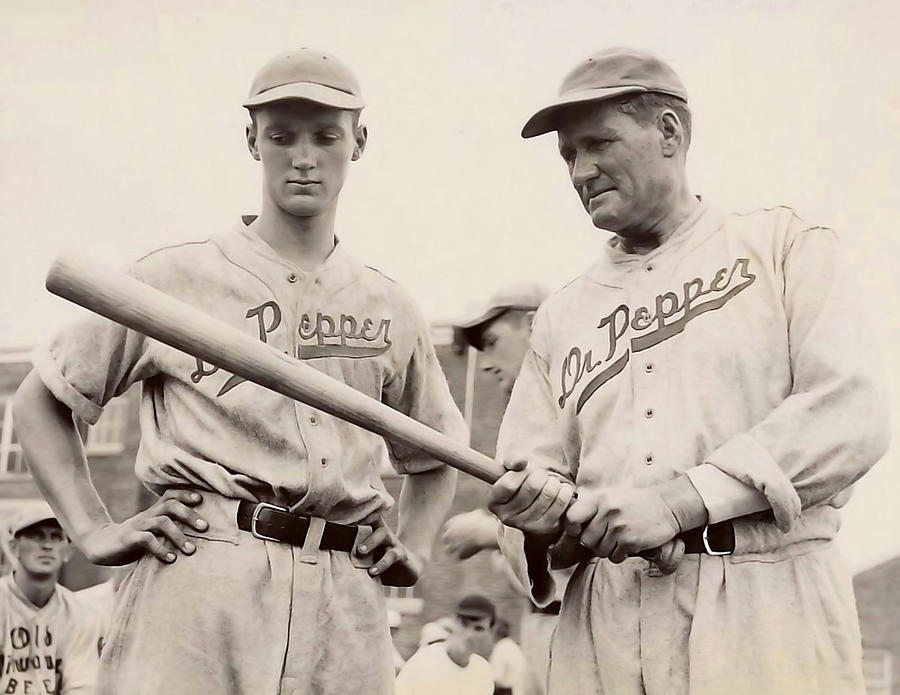
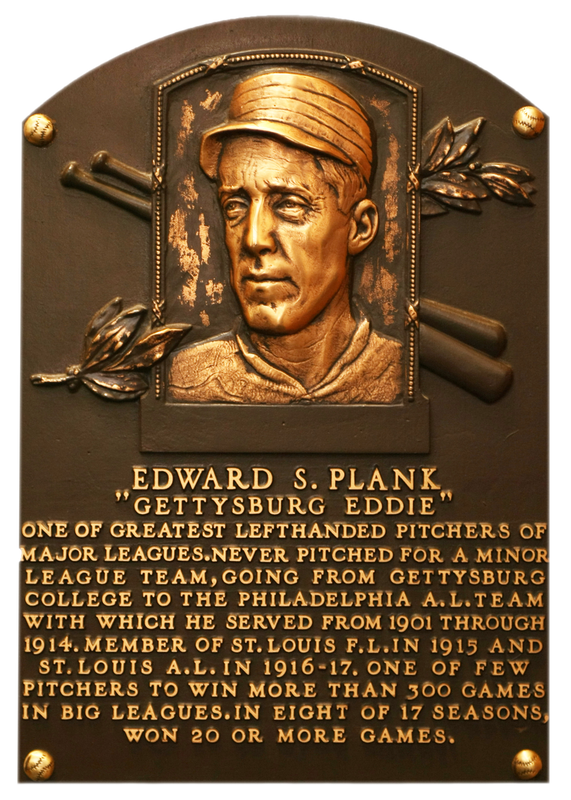


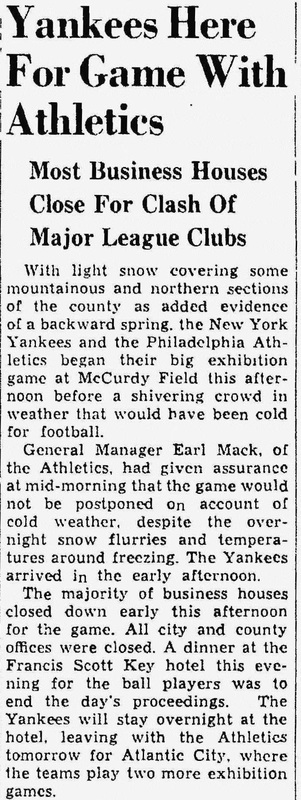
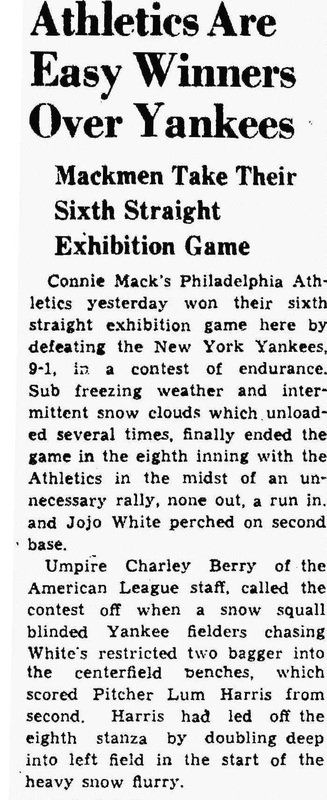
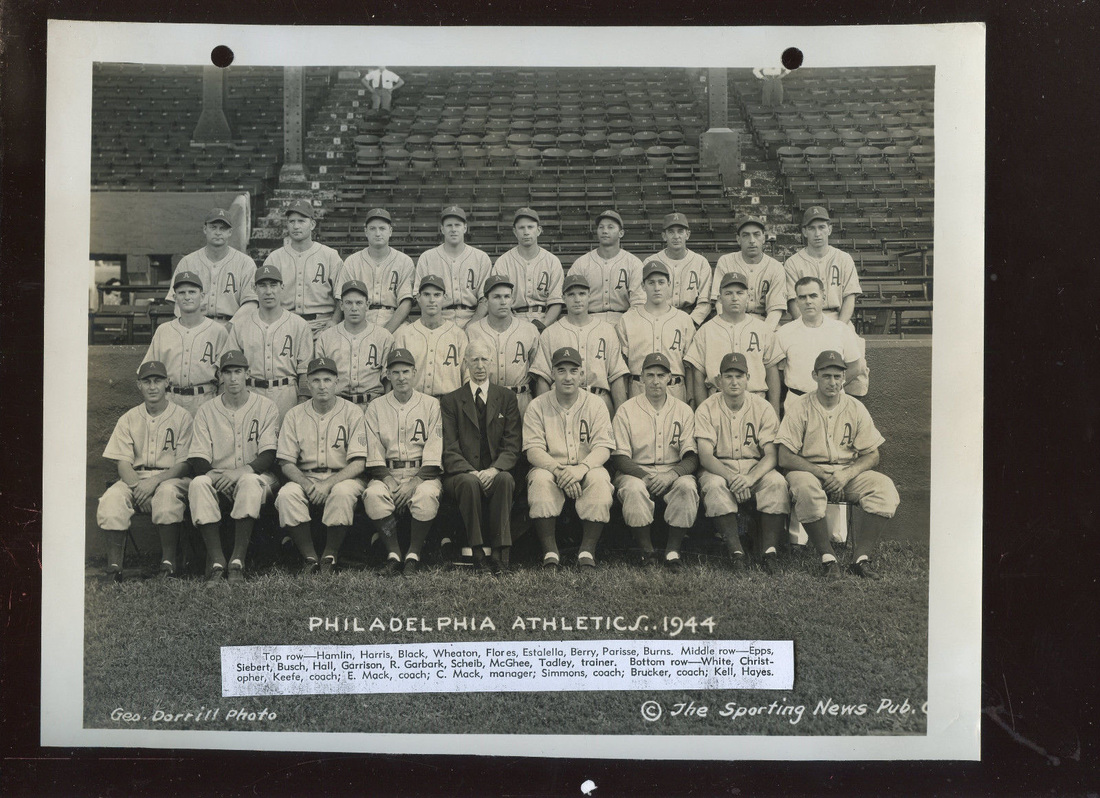
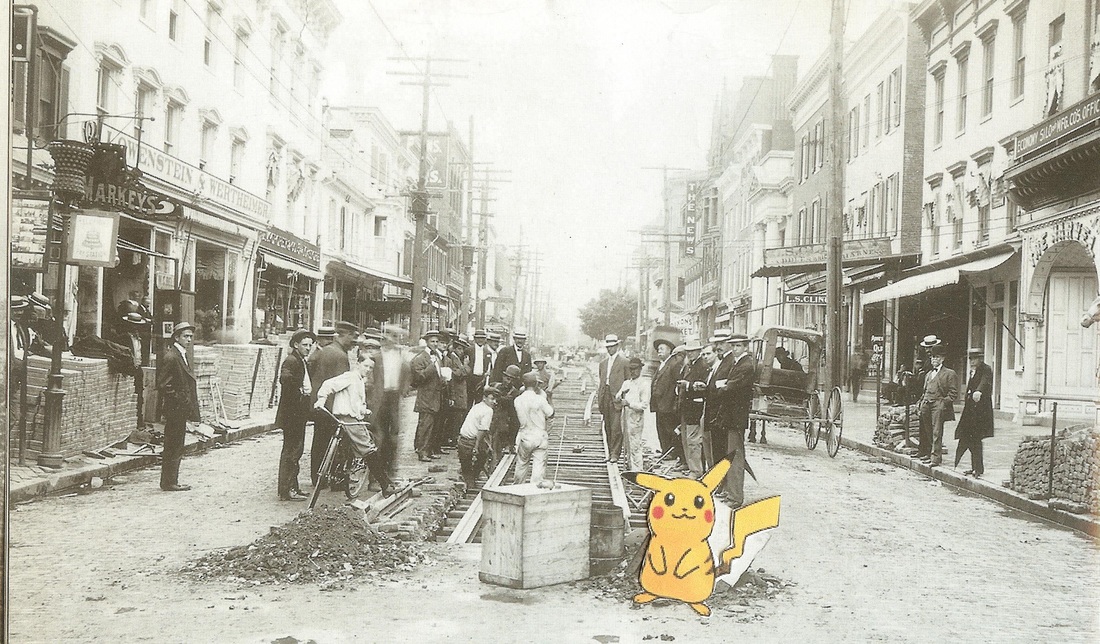
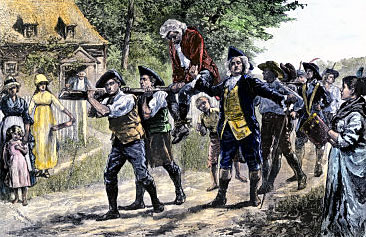
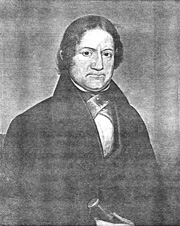
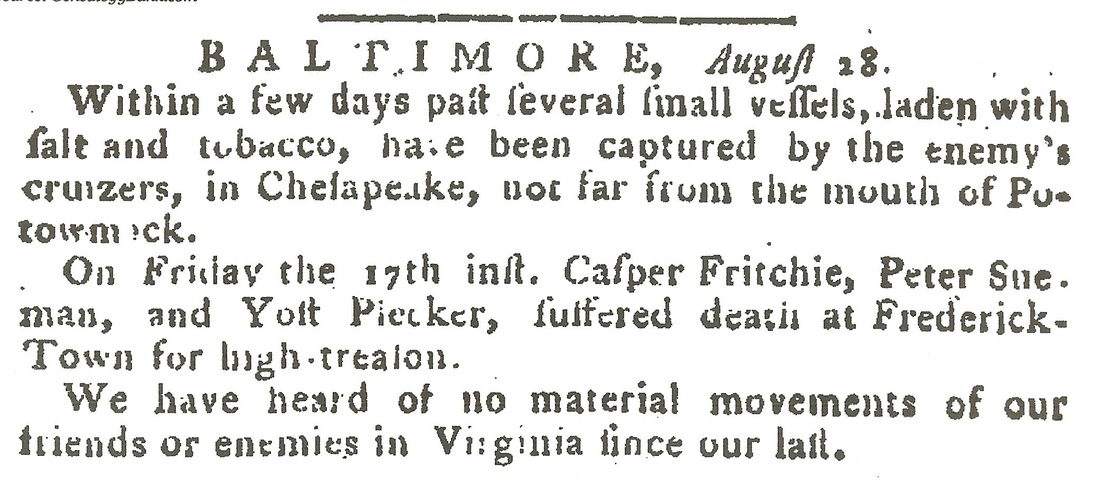
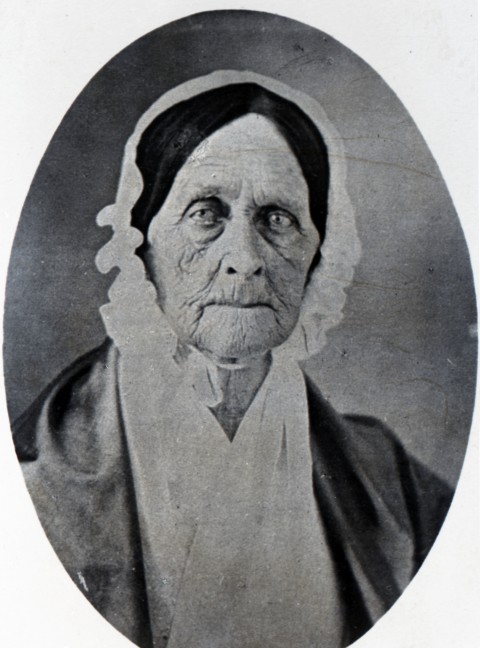
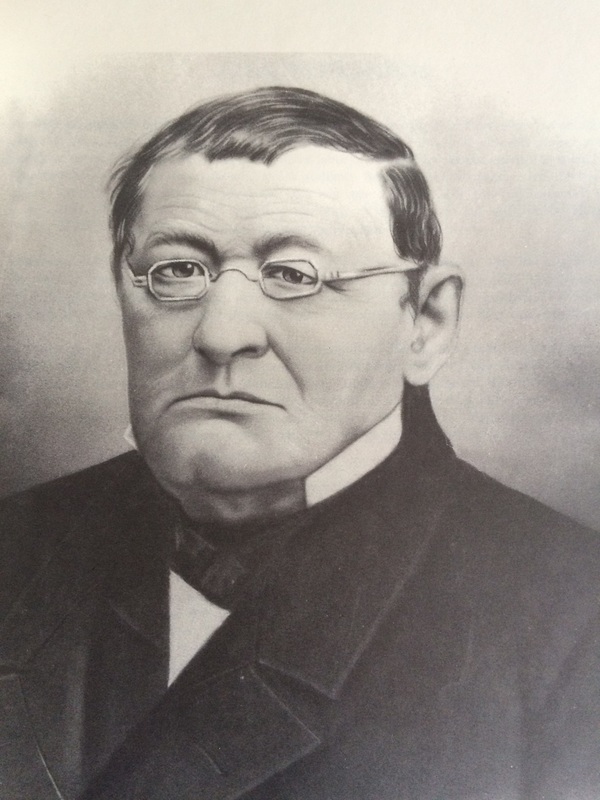
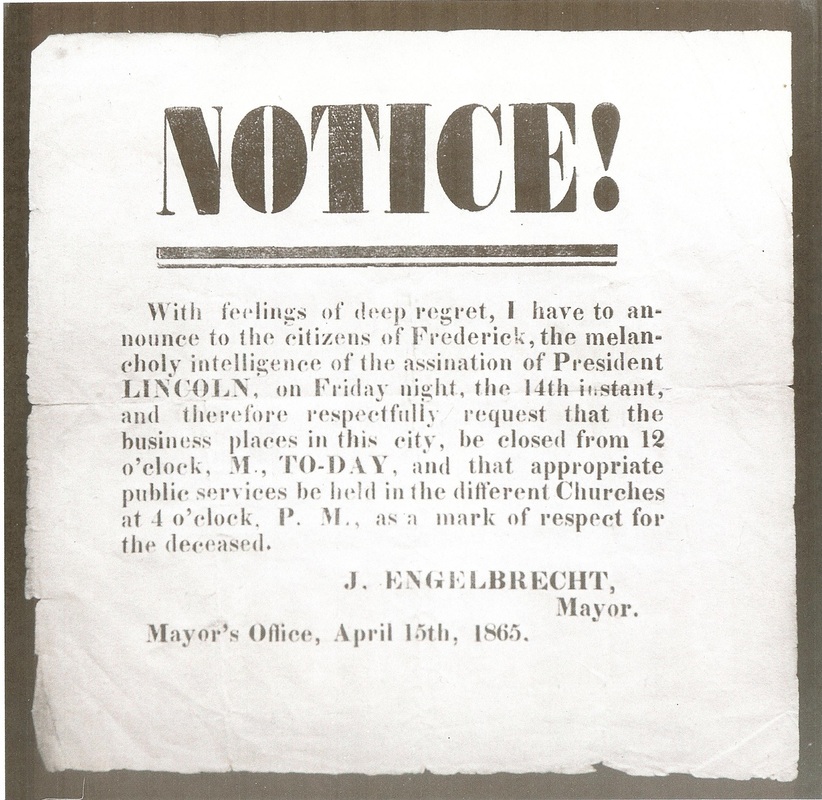
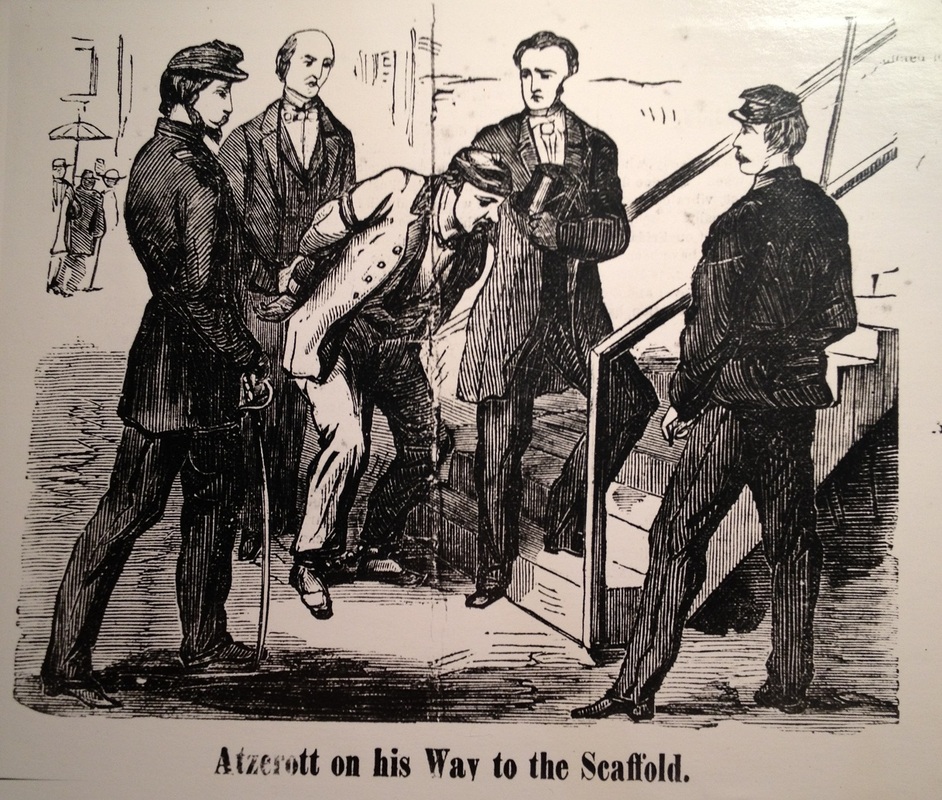
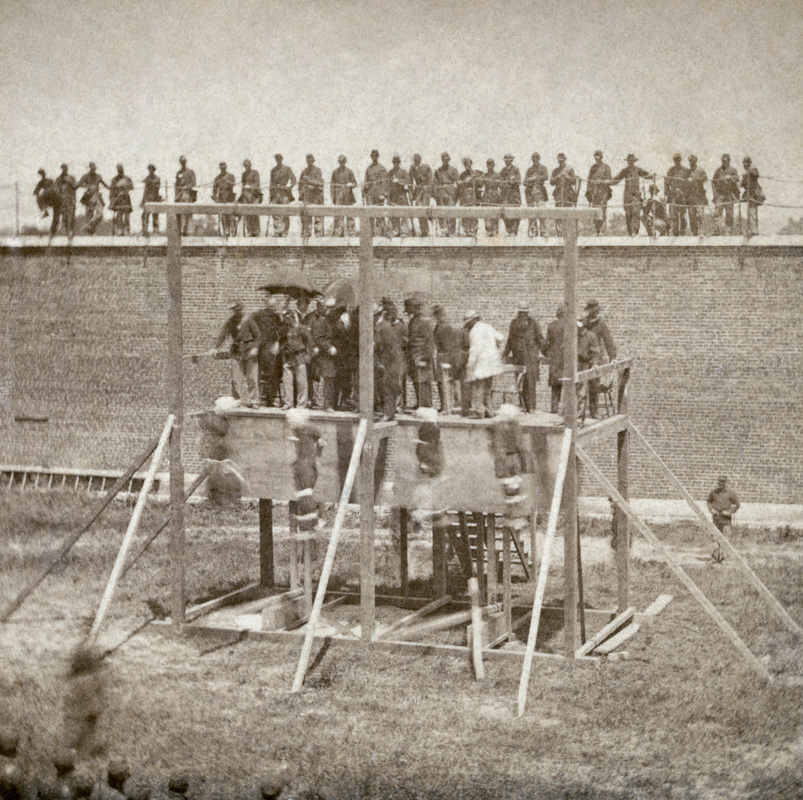
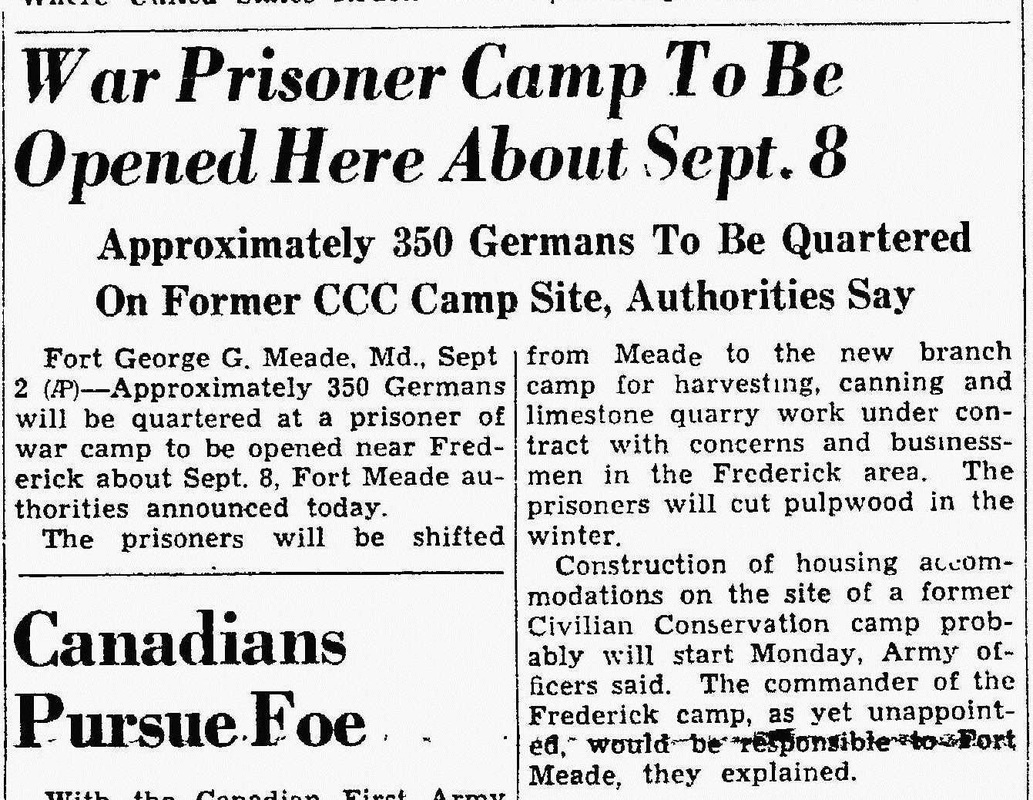
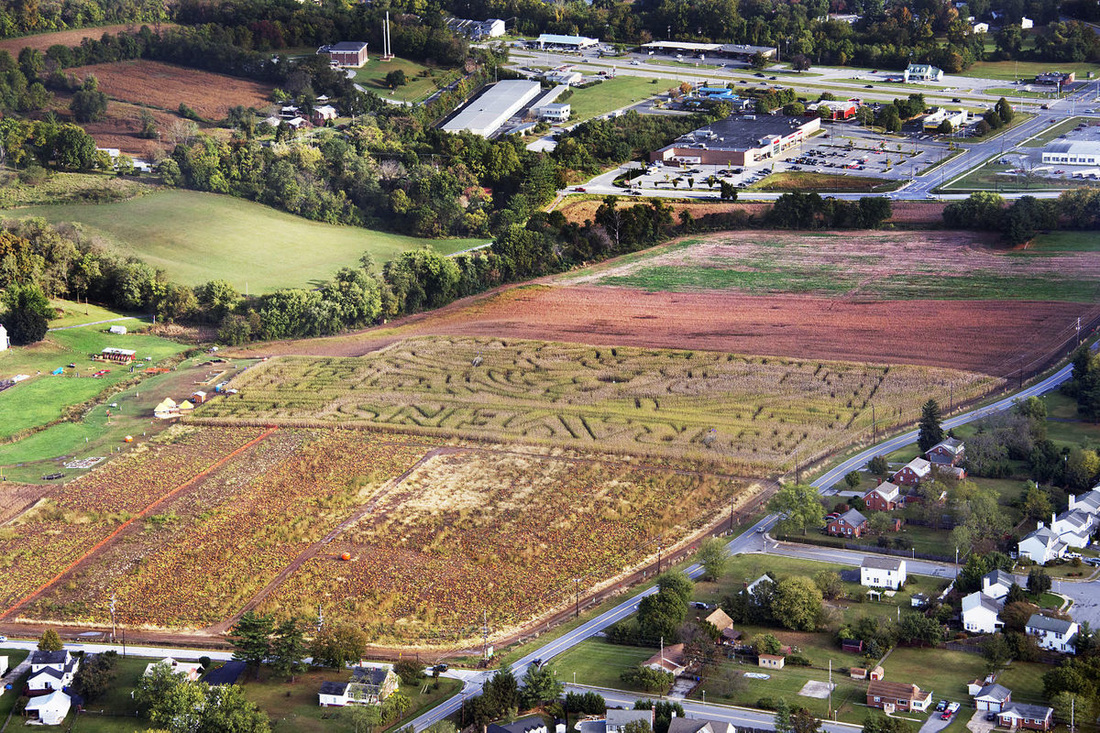
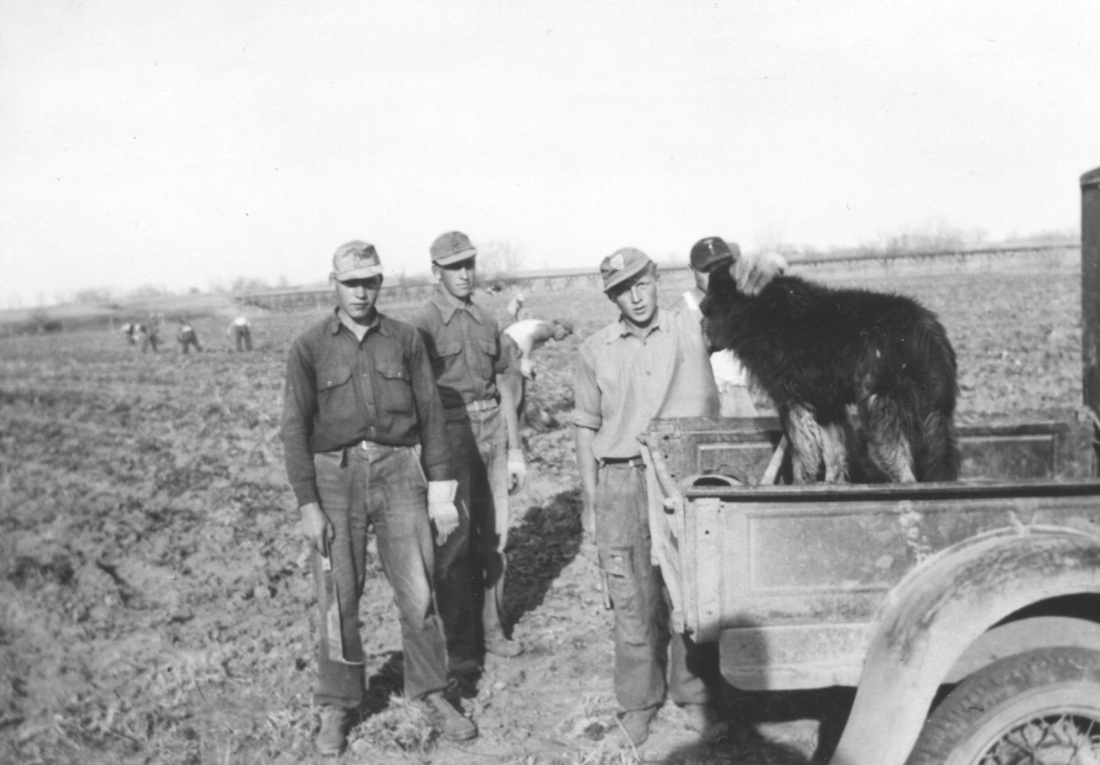
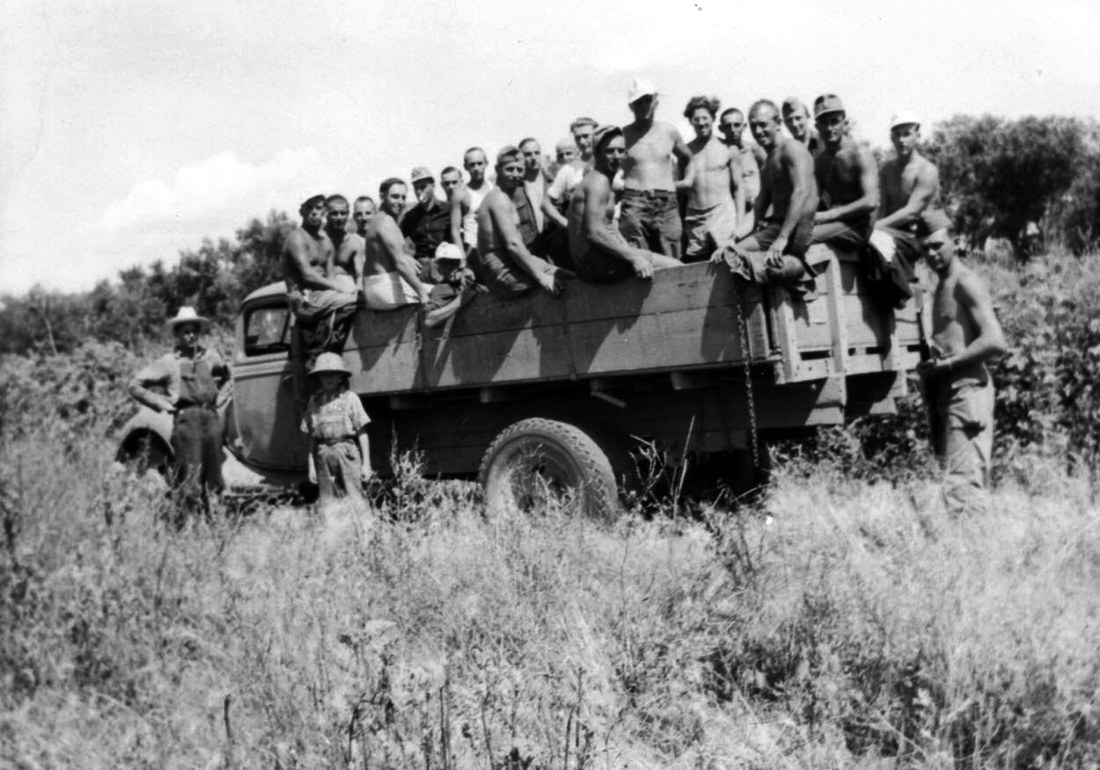
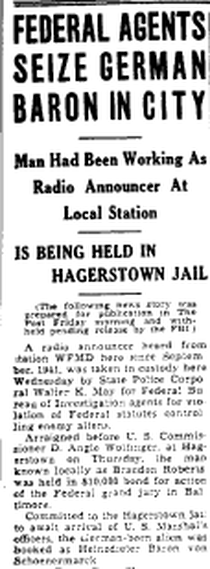
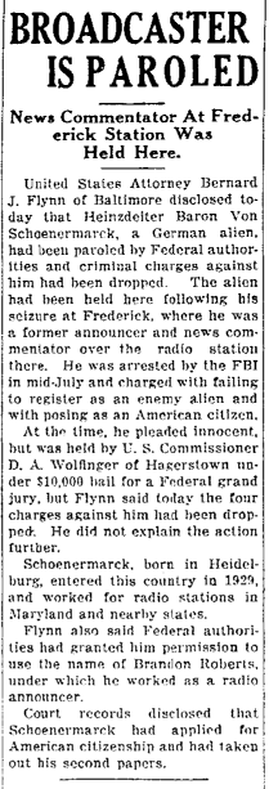
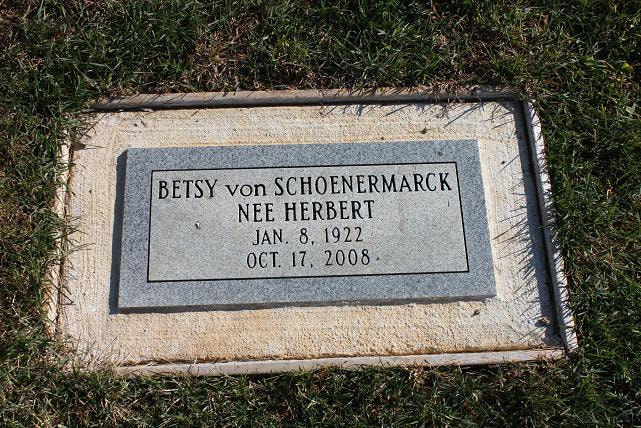
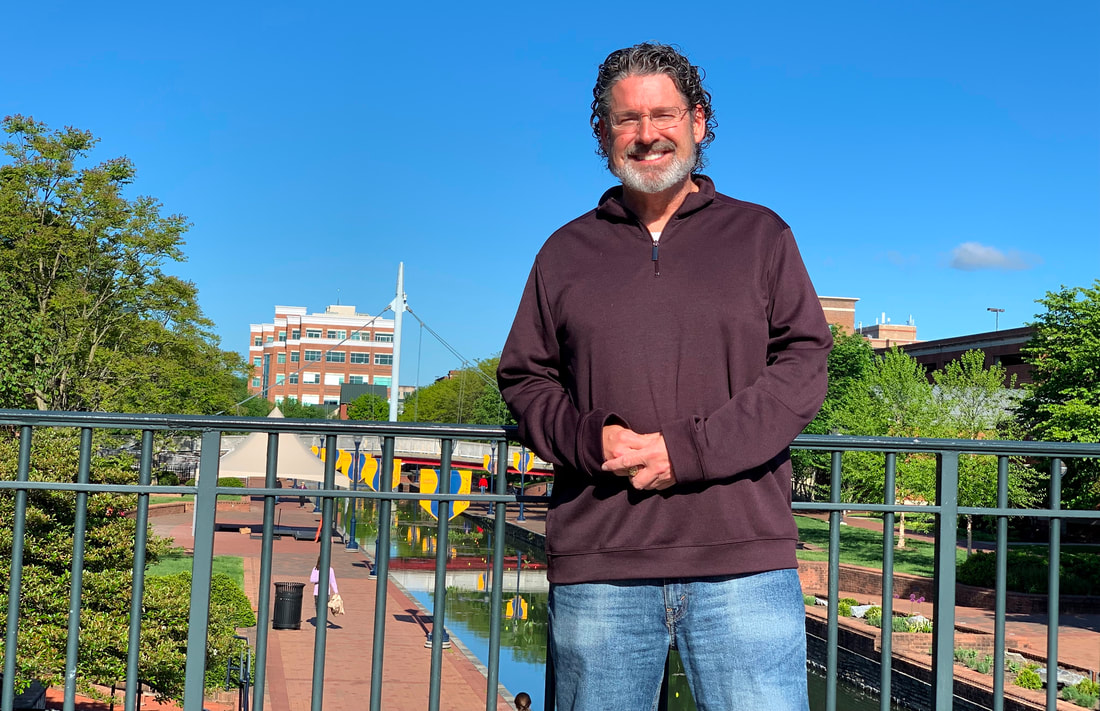
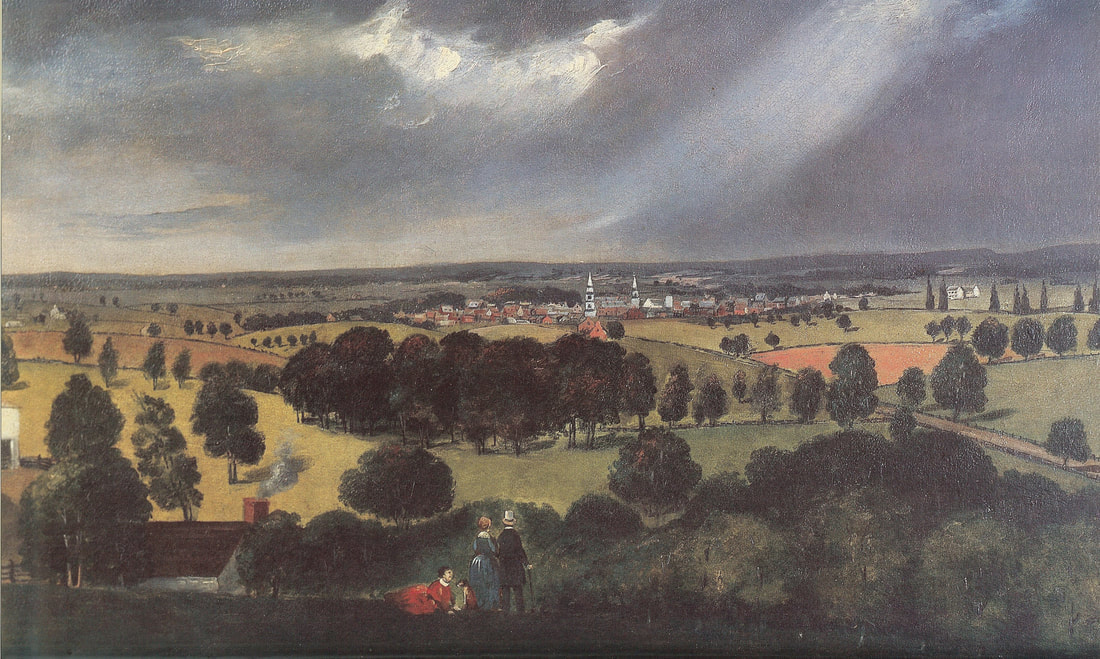
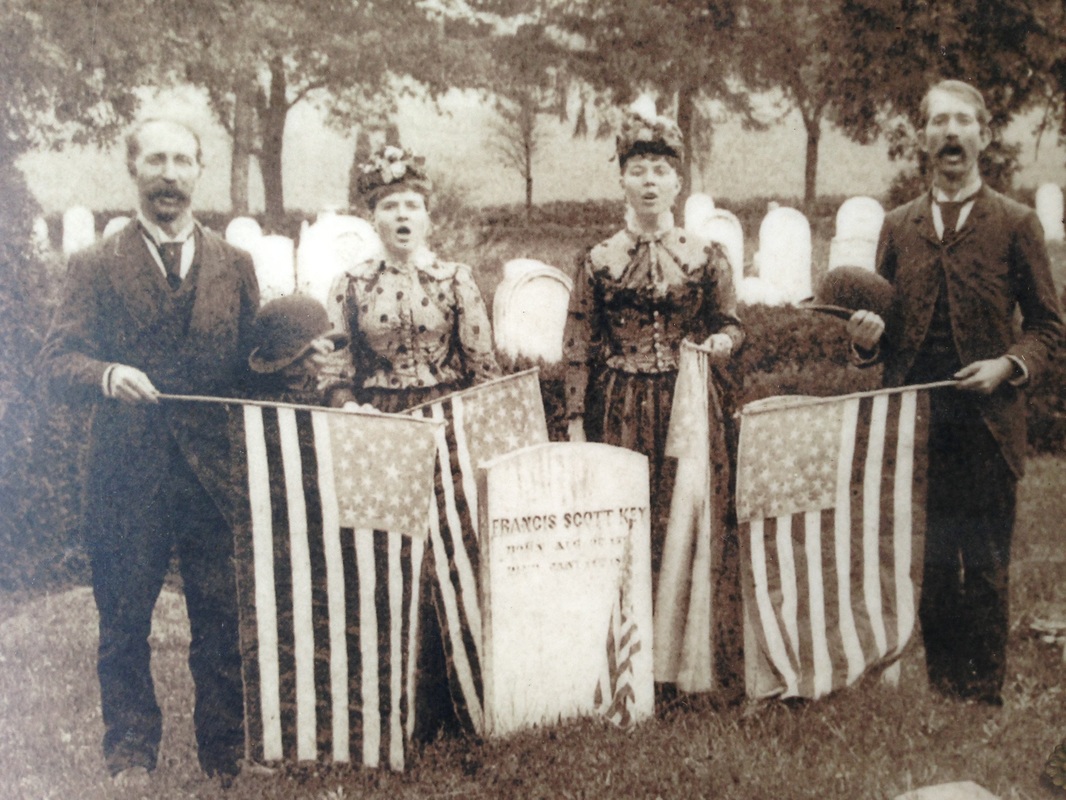
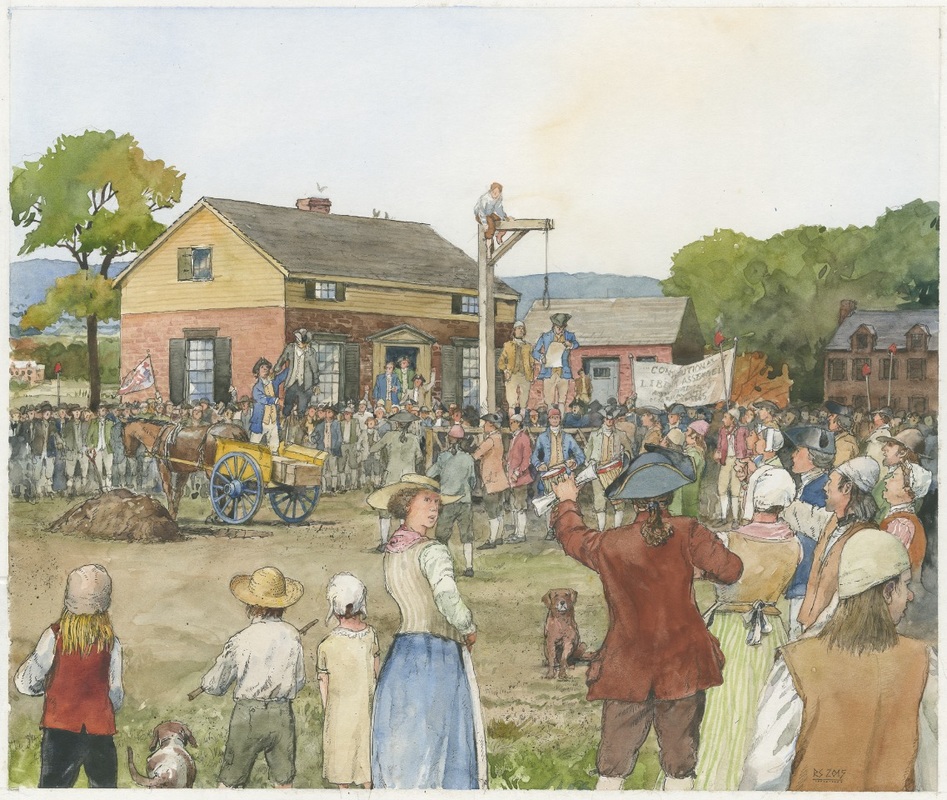
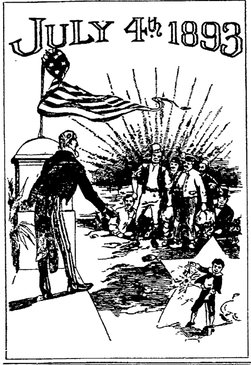
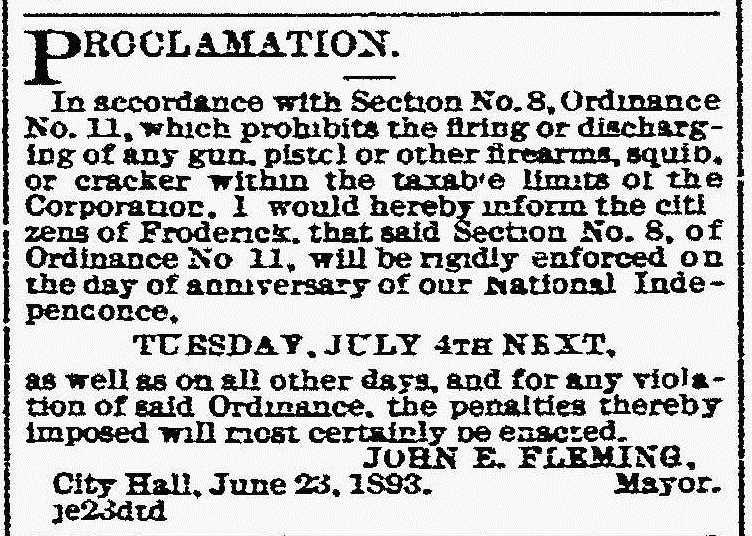
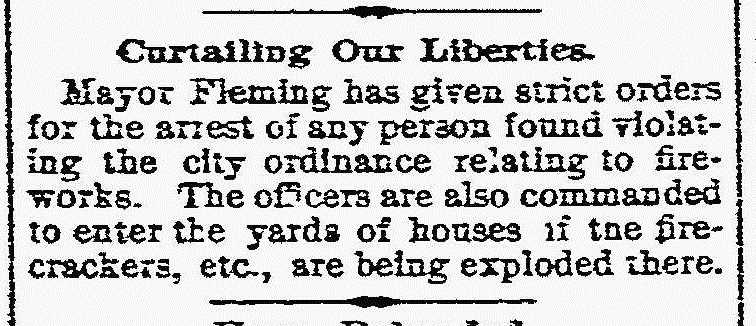
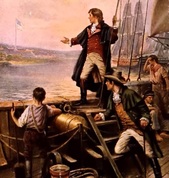
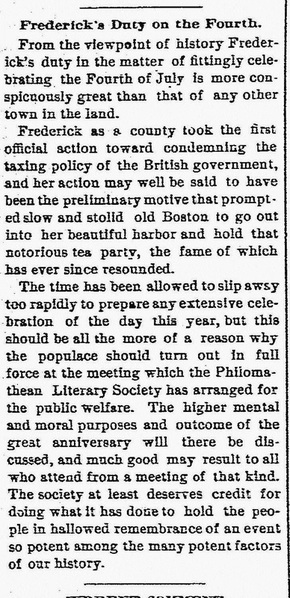
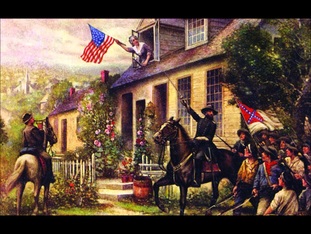
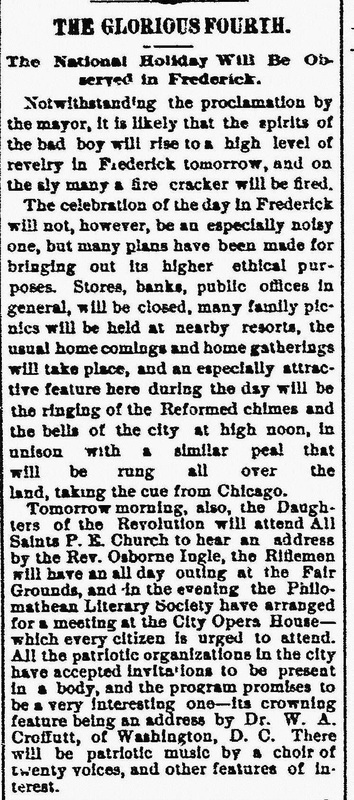
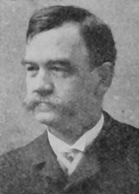
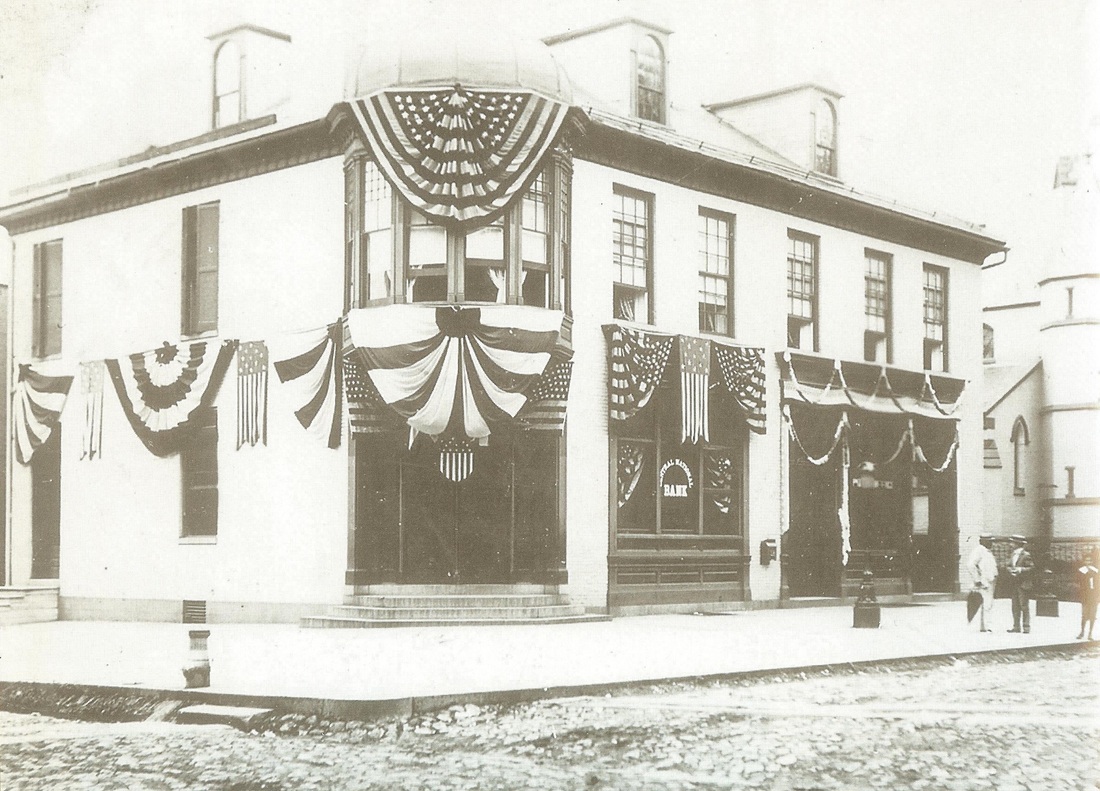
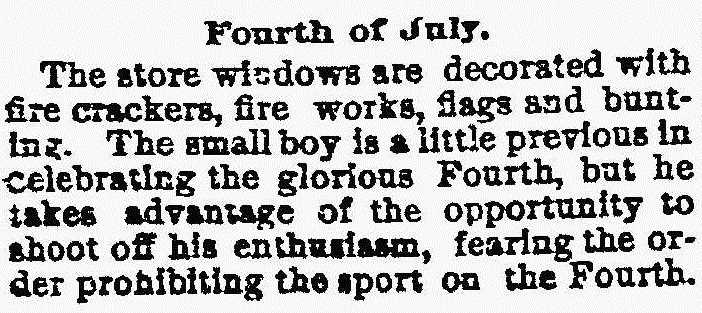
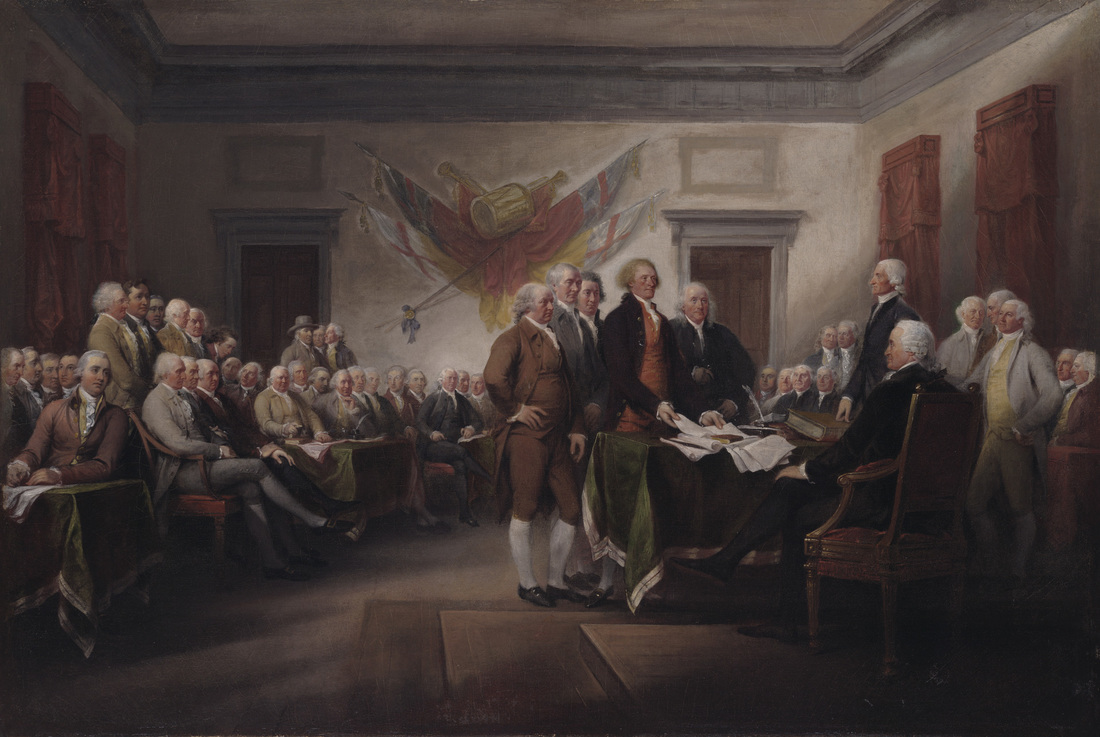

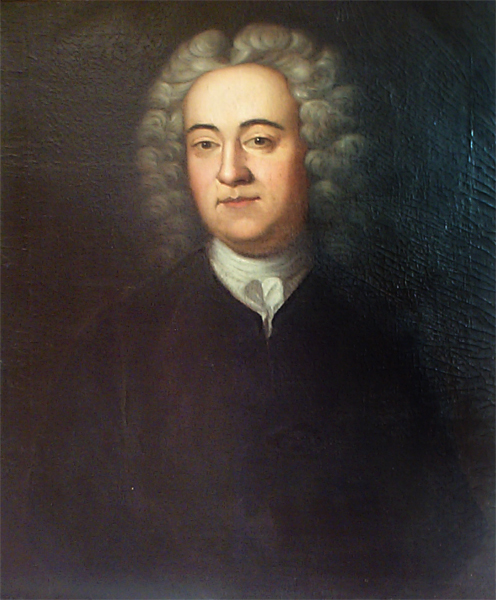
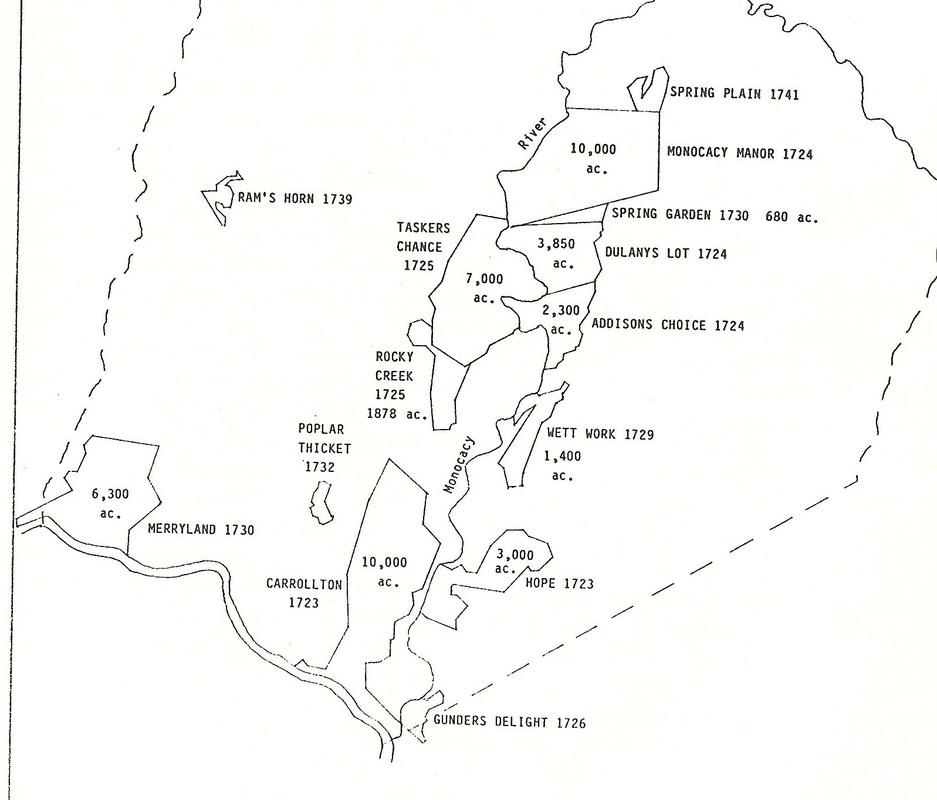
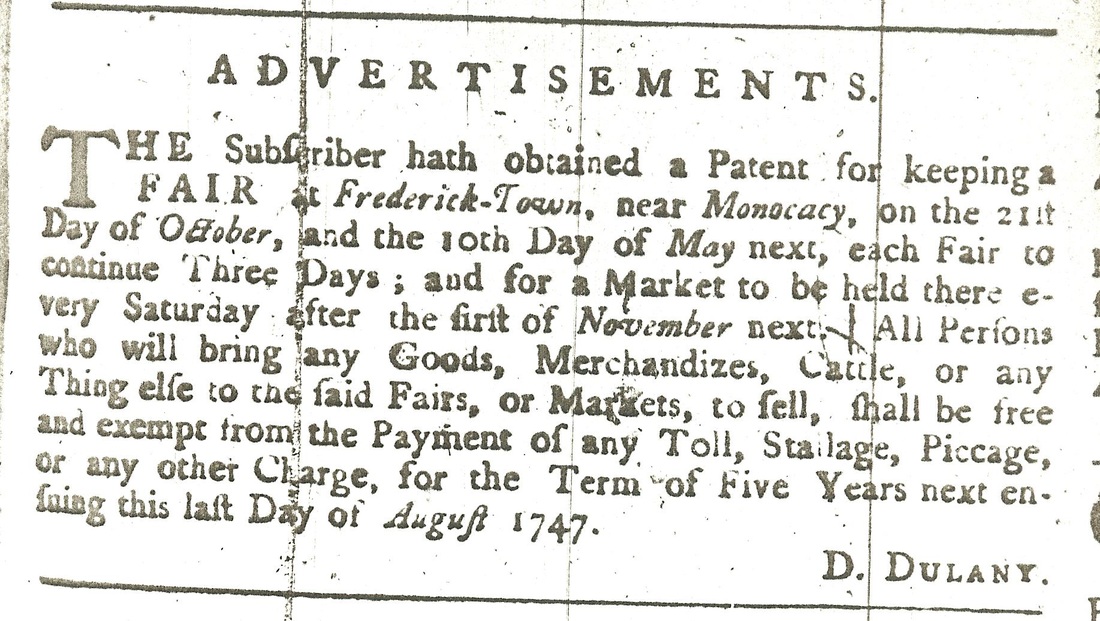
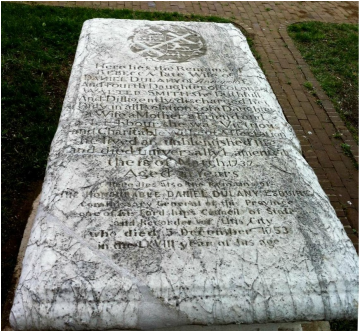
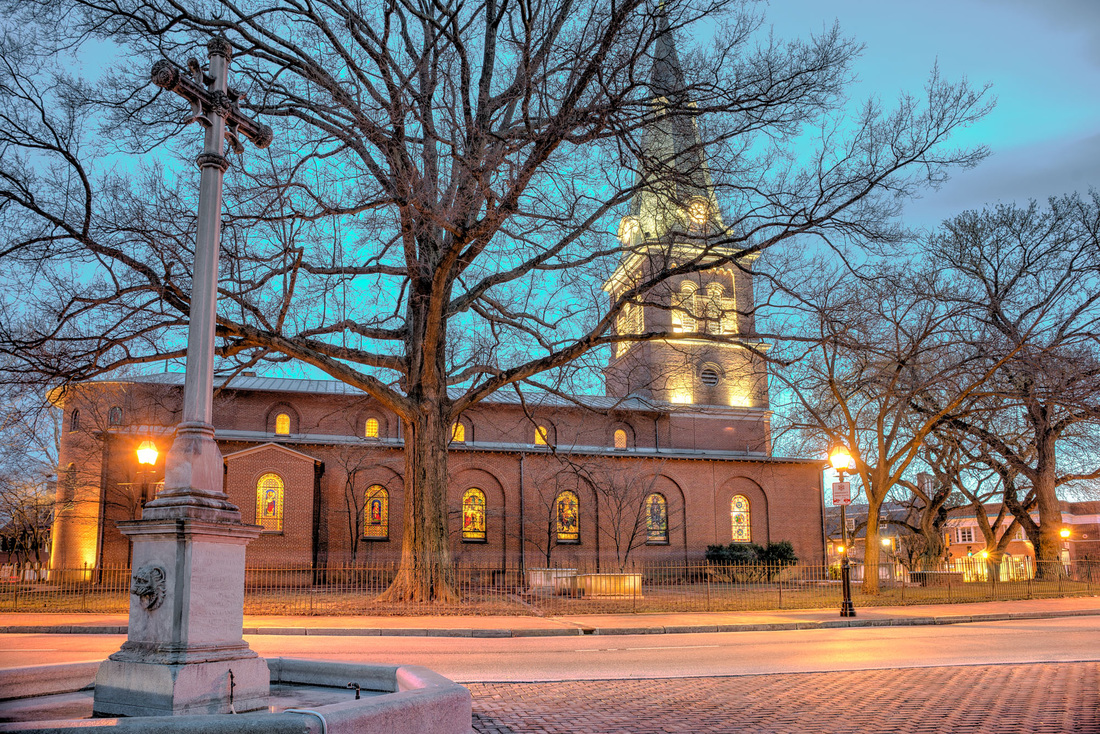
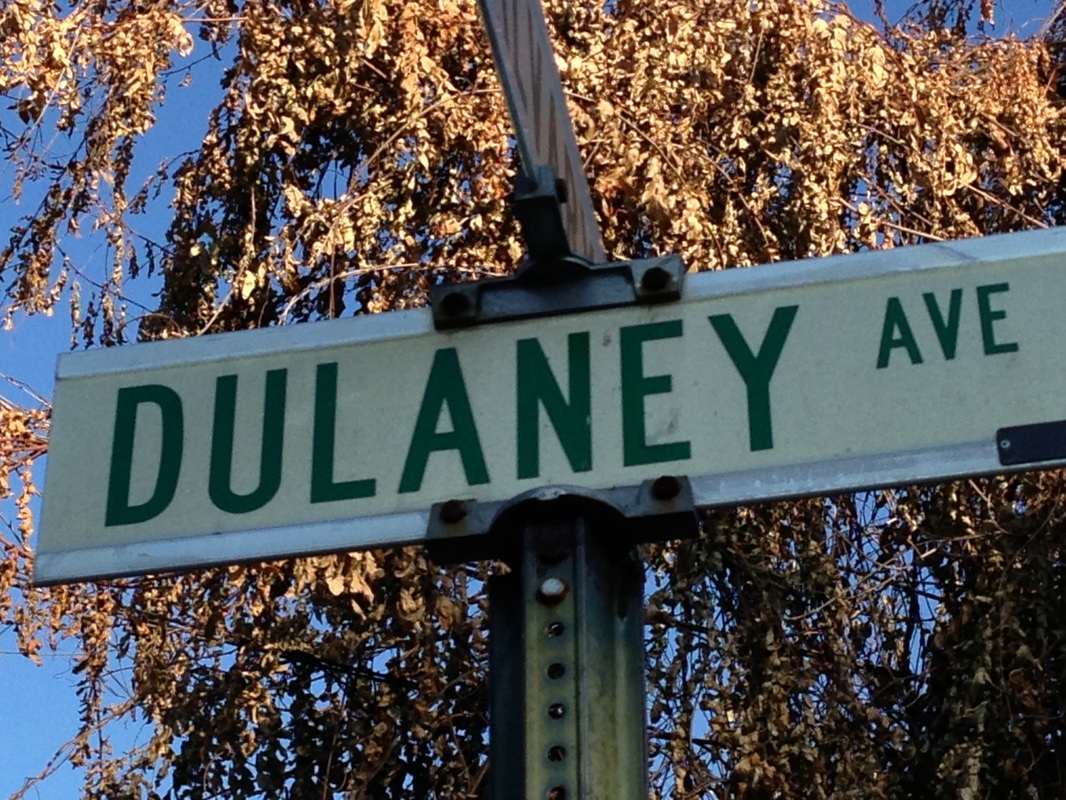
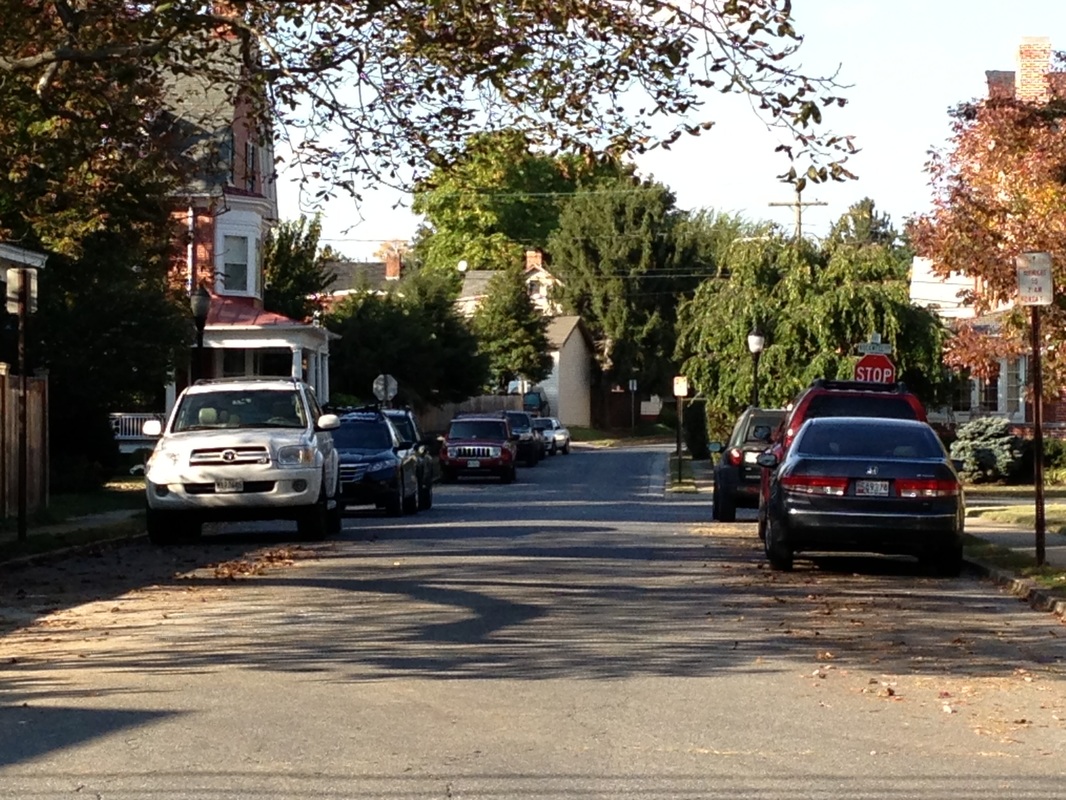
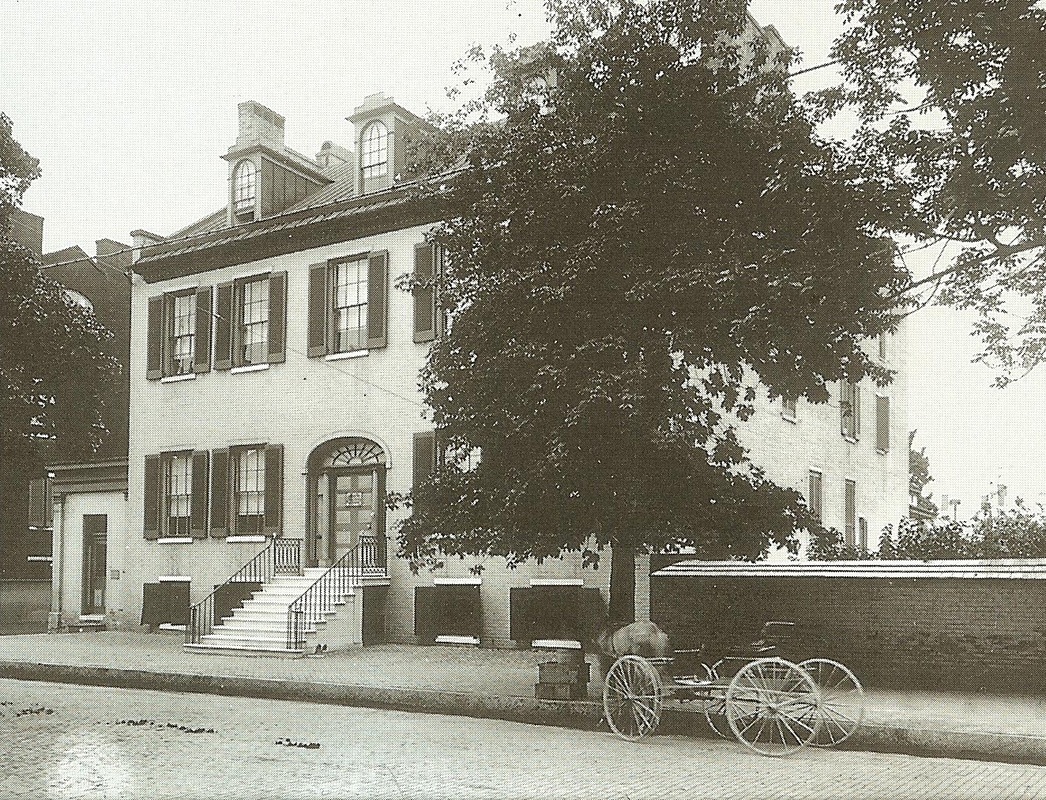
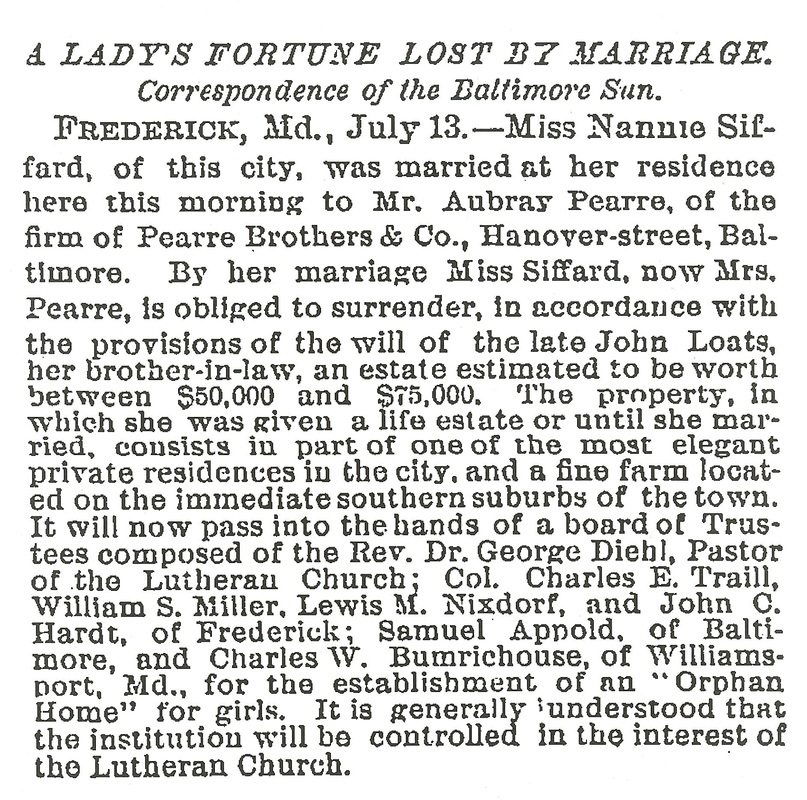
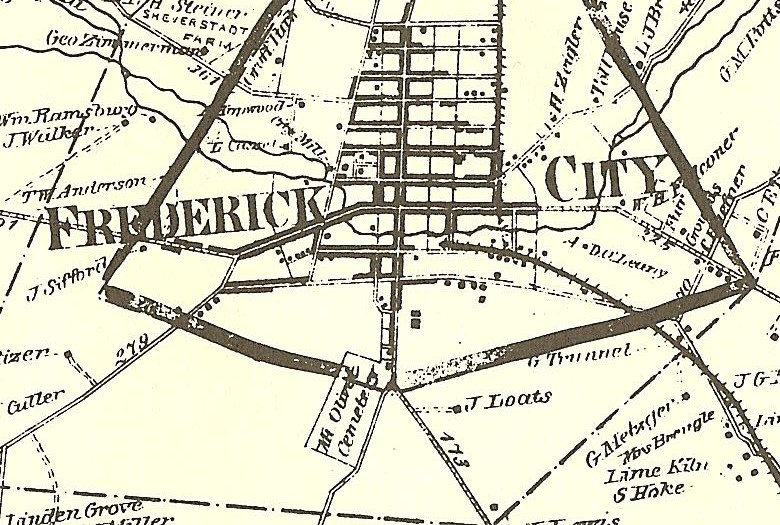
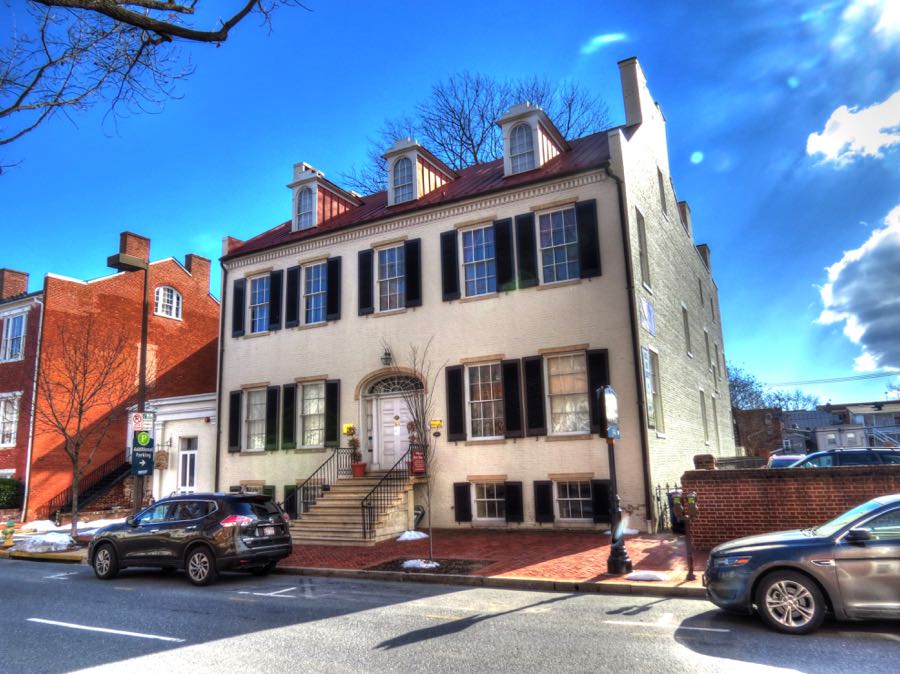
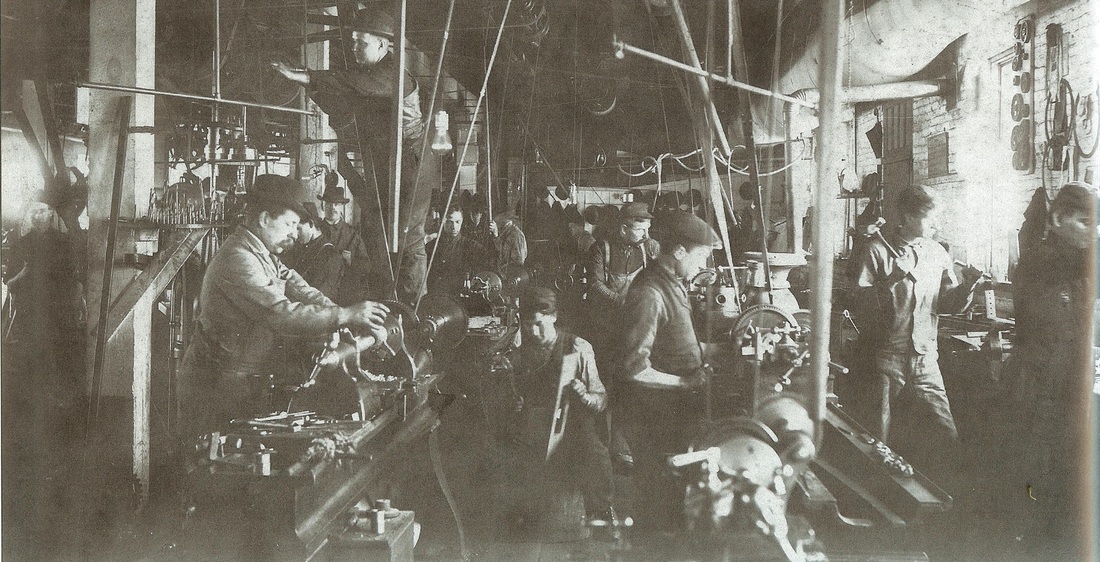
















 RSS Feed
RSS Feed